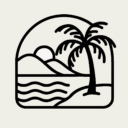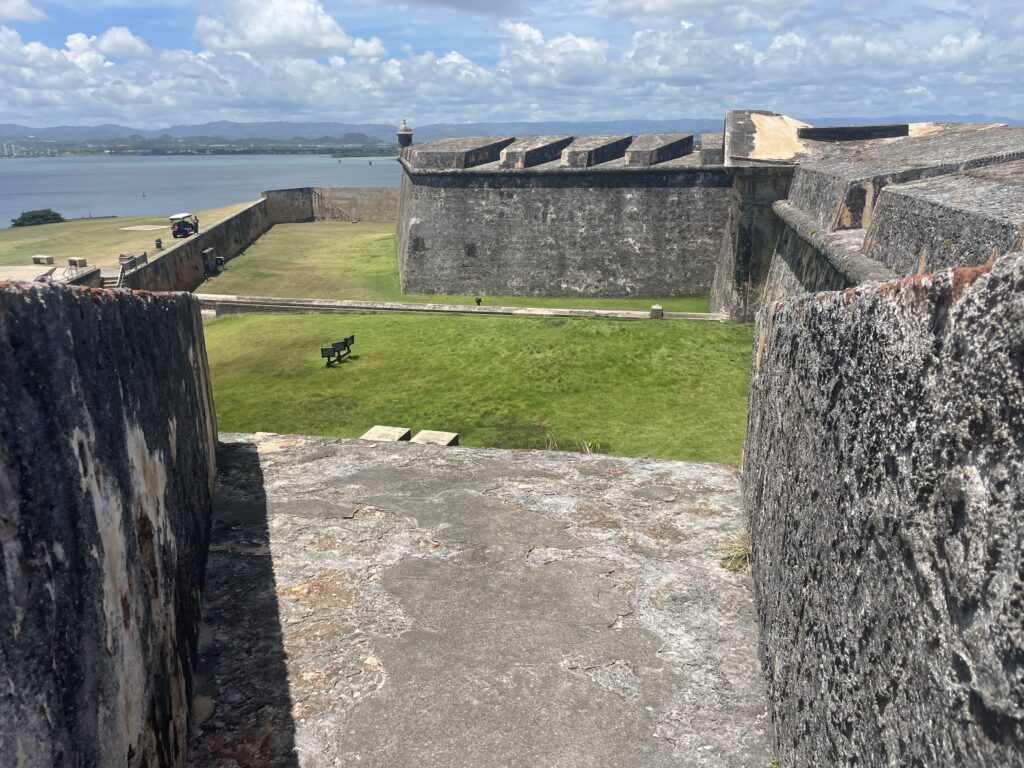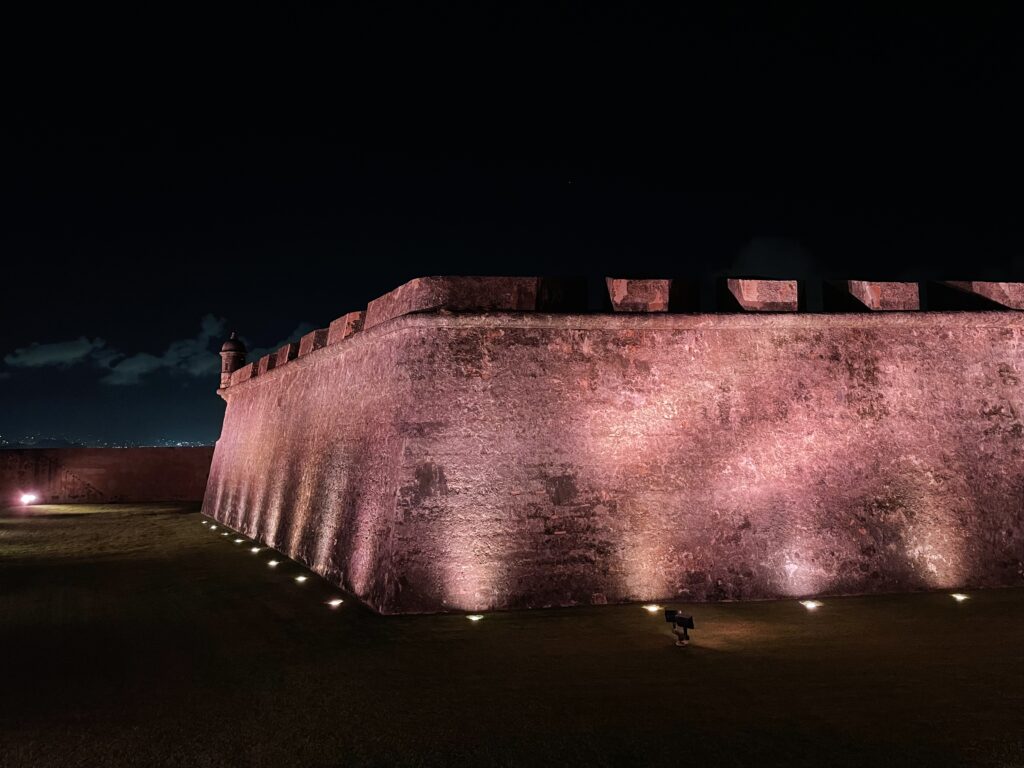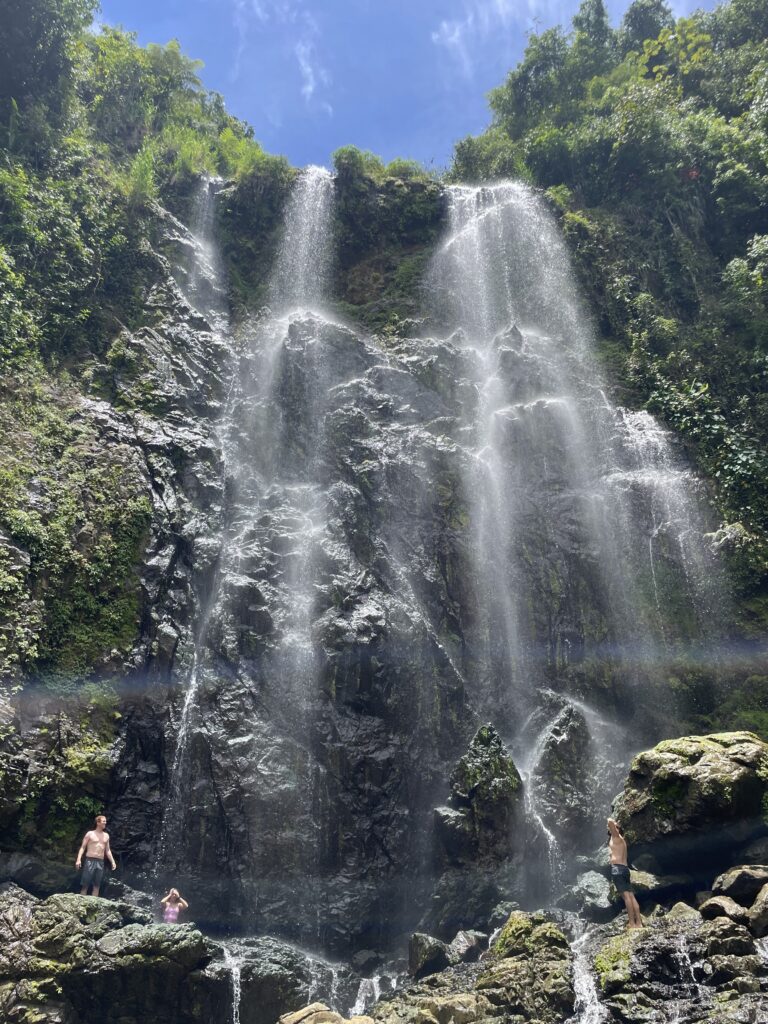Two Week Itinerary
This is the itinerary for the person who wants to see all of the best things in Puerto Rico without making any compromises. With this itinerary you’ll drive around the entire island to tan on the best beaches, swim in the pools of crashing waterfalls, explore cultural sites, hike scenic trails, and eat at the best restaurants. It will take you 15 days to complete if you move quickly. There are days where I include four beaches in a day, when you could spend the whole day at just one beach.
Day 1
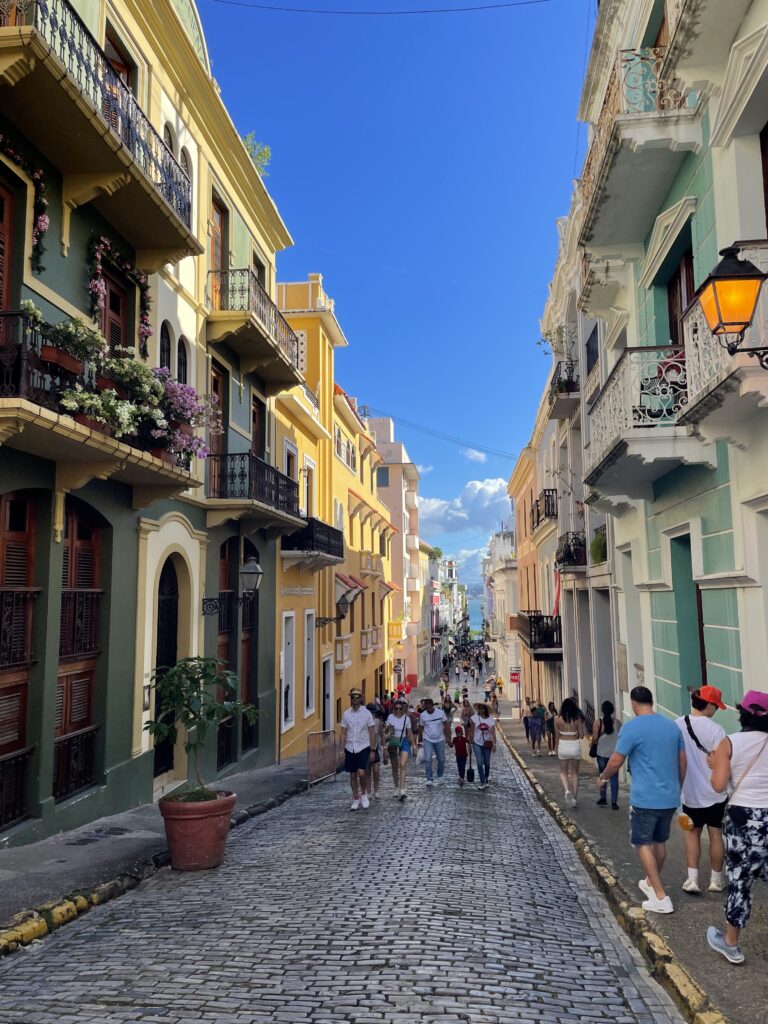
Arrive in San Juan the night before or the morning of Day 1. For the first day, if you choose to stay in San Juan, you won’t need a car. You can get around by walking, renting a scooter, or by Uber. Take an Uber from the airport to your hotel or Airbnb. Once you’ve dropped off your stuff, take an Uber to the historic district of Old San Juan. Come prepared with plenty of water, sunscreen, and a hat, it gets hot here! It’s best to get an early start on the day and see Old San Juan while it’s still cooler in the morning.
Established in 1521, Old San Juan is one of the oldest settlements in the Americas and has been designated a UNESCO World Heritage Site for its rich cultural and architectural heritage. I usually spend 4-5 hours walking the walled city.
If you are renting a car, park here to start right next to El Morro, our first destination. If you’d rather walk the city streets first, park here. Either one works and both can fill up on busy days.
El Morro
Walk from the parking structure to the nearby Castillo San Felipe del Morro, or El Morro. It’s a 16th-century fortress located at the entrance of San Juan Bay and the main tourist attraction here. Entrance costs $10 per adult or free for National Park pass-holders. It was built by the Spanish to protect the city from attacks by sea and is now one of the most popular tourist attractions in Puerto Rico. Visitors can explore the fortress’s various rooms full of antiques and information plaques, and enjoy the view from the top of the fort. If you visit at night, you won’t be able to enter, but the fort is lit up and is well worth walking around.
Museum of the Americas

From El Morro, you can look back at the town and see a long yellow building three stories tall, to the left. That is the Museo de las Américas (pictured above on the left). The museum houses a collection of artifacts and exhibits that tell the story of the region from pre-Columbian times to the present day. Visitors can see everything from Taino artifacts to contemporary art from Puerto Rico and beyond. When you pay at a booth, they’ll explain the different rooms and what they contain.
Walk The City Streets
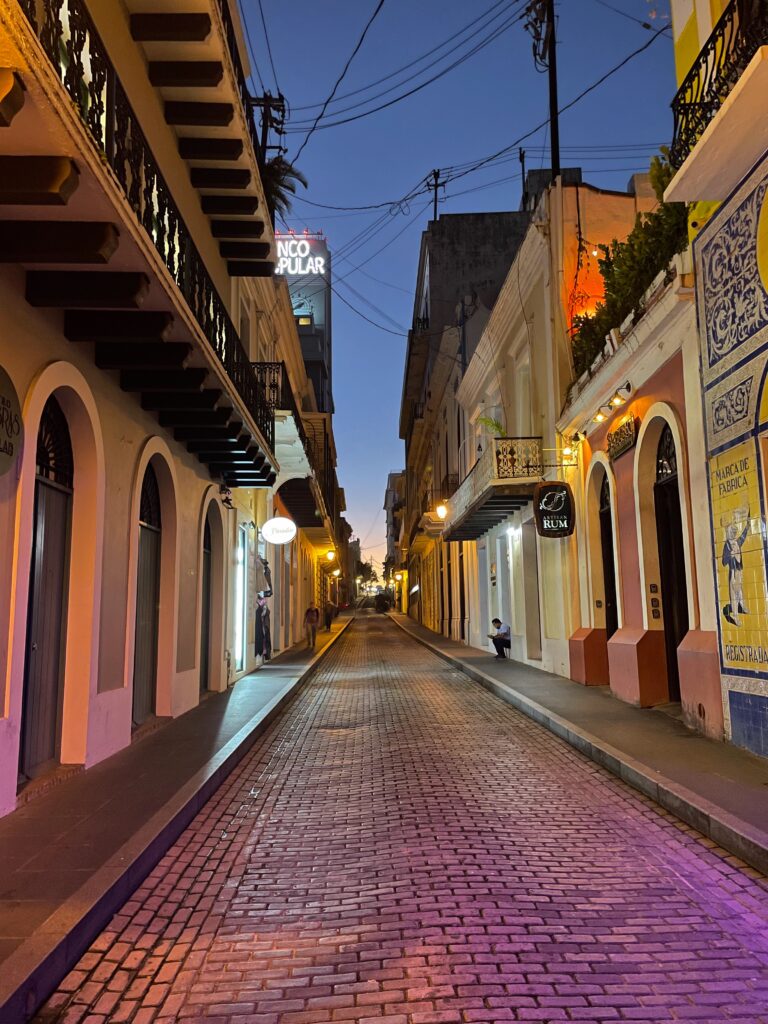
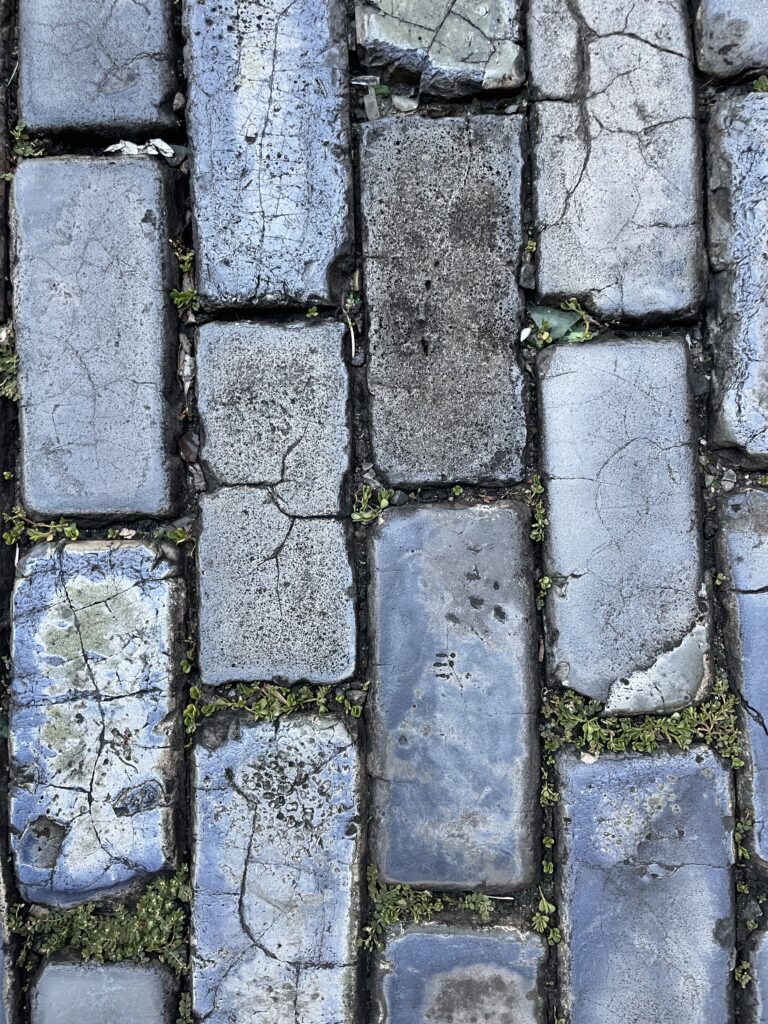
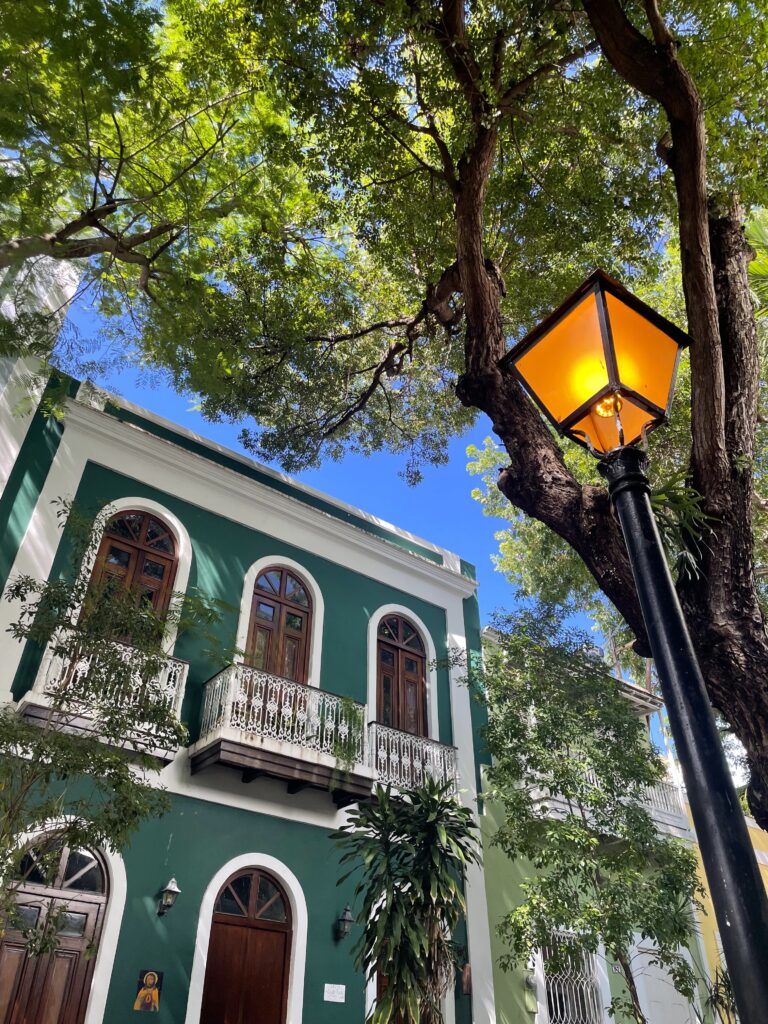
Leaving the museum, you can begin to wander. My favorite thing to do in Old San Juan is walk around the city’s charming streets. From high-end boutiques to local artisan shops, there’s something for everyone here. Even if you don’t plan on buying anything, walking the blue cobblestone streets to enjoy the colonial architecture is well worth your time.
The blue cobblestones were brought to Puerto Rico from Spain in the early 16th century as ballast for ships. The stones are made of blue basalt, a type of volcanic rock, and were later used to pave the streets of Old San Juan. The blue hue is caused by the oxidation of the iron in the rock over time. The stones were initially black, but exposure to the elements caused them to turn their now emblematic shade of blue.
There’s no wrong way to go, but most of the popular attractions are located on the west side of Old San Juan.
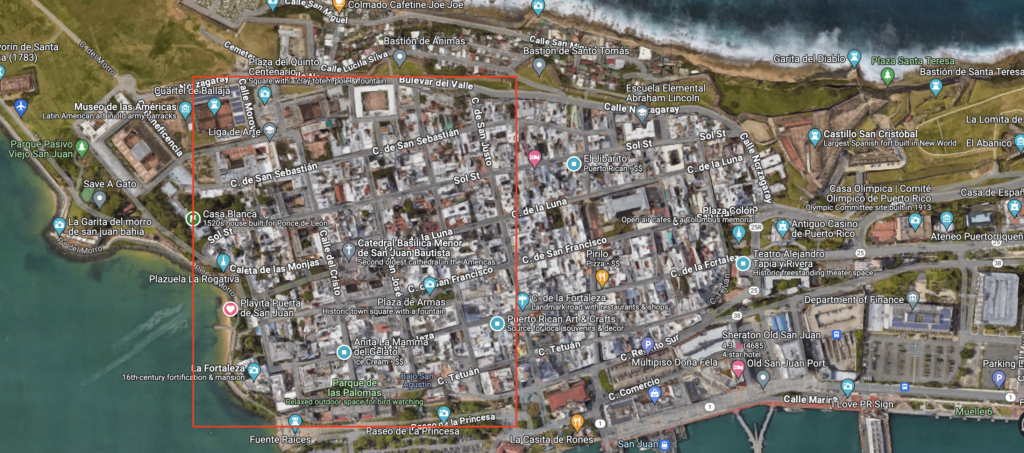
Here are some places you should see while walking the city, some I describe in more detail below:
- The San Jose church, just a short walk from the Museum of the Americas. It was built in 1532 and has been lovingly restored.
- The San Juan Bautista Cathedral (see below).
- The Door to San Juan (see below).
- Puerto Rican Arts & Crafts is my favorite gift shop. It’s full of work from local artists. I highly recommend this shop if you’re looking for a souvenir.
- La Fortaleza (see below).
- Pigeon Park – a park with a lot of pigeons that will land on your body.
- This amazing gelato shop (see below).
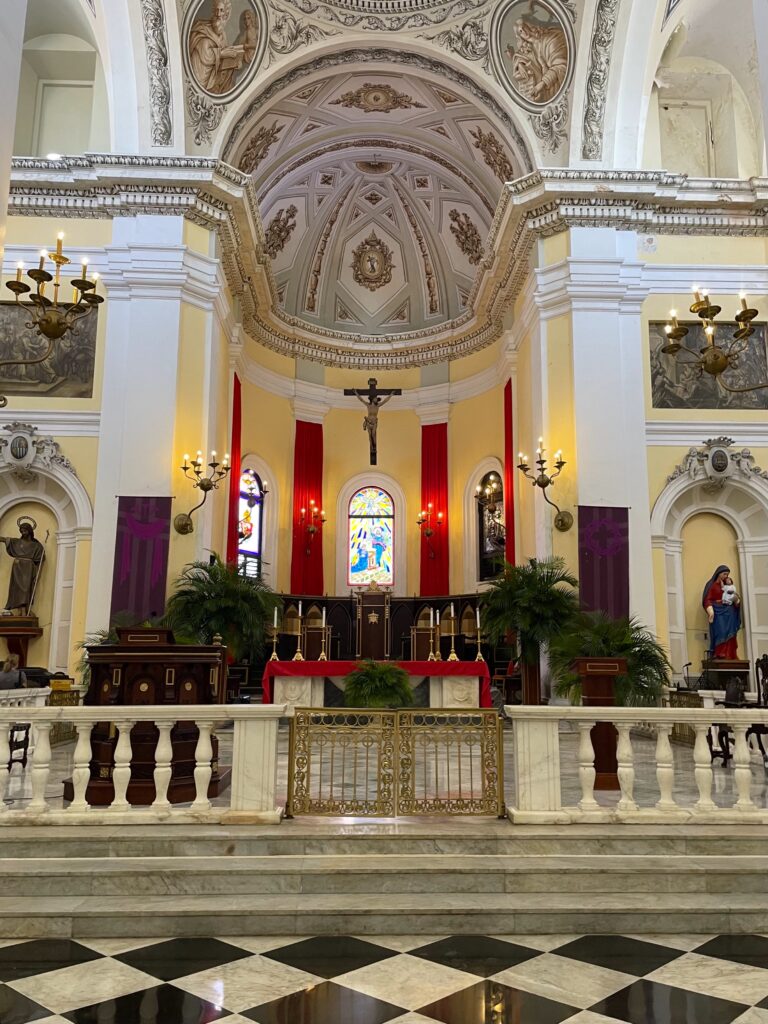
Located in the heart of Old San Juan, the Catedral Basilica Menor de San Juan Bautista is the second oldest cathedral in the Americas boasting an impressive history and architecture. Originally constructed in 1521, the cathedral has undergone several renovations over the centuries, resulting in a unique blend of Gothic and Baroque styles. Visitors can admire the intricately carved wooden doors, stained glass windows, and vaulted ceilings.
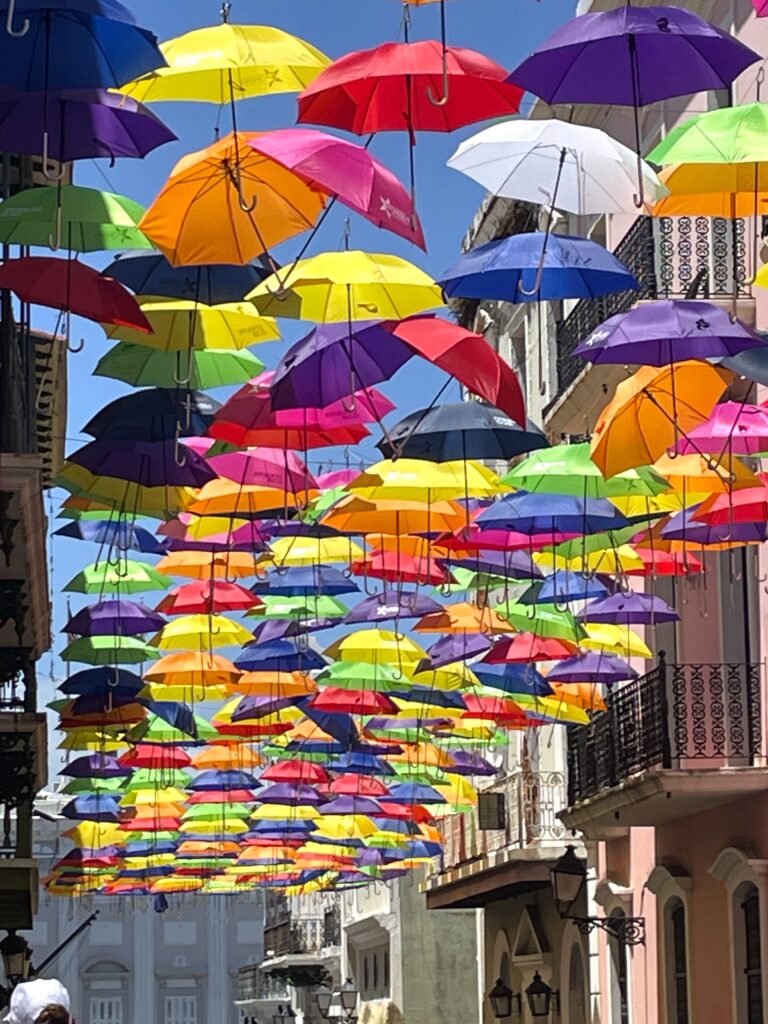
La Fortaleza is an iconic manor located in Old San Juan, Puerto Rico. Built in the 16th century, it is the oldest executive mansion in continuous use in the Americas, serving as the official residence of the Governor of Puerto Rico (closed to all but scheduled tours). You can catch a glimpse of it from here, down a closed street that it is decorated with colorful hanging umbrellas.
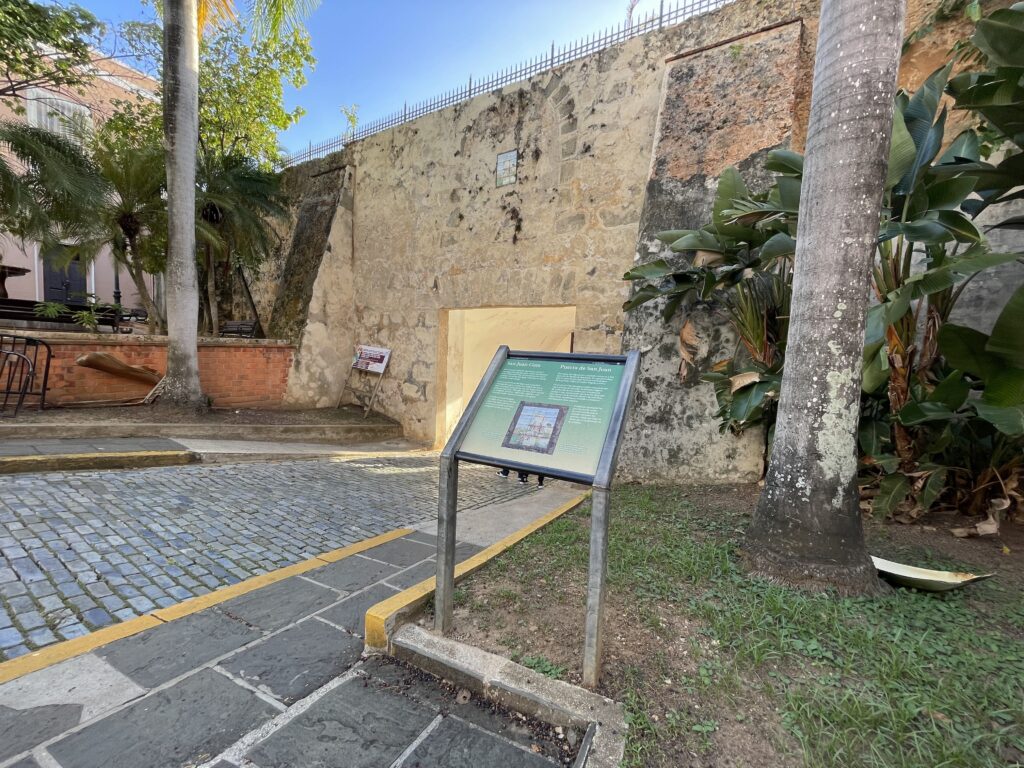
The Puerta de San Juan is the main, and only remaining entrance into the walled city from colonial times. Spanish sailors would arrive at the island after sailing from Europe, they’d enter and walk directly to the cathedral just up the road to give thanks for their safe passage.
Playita Puerta de San Juan
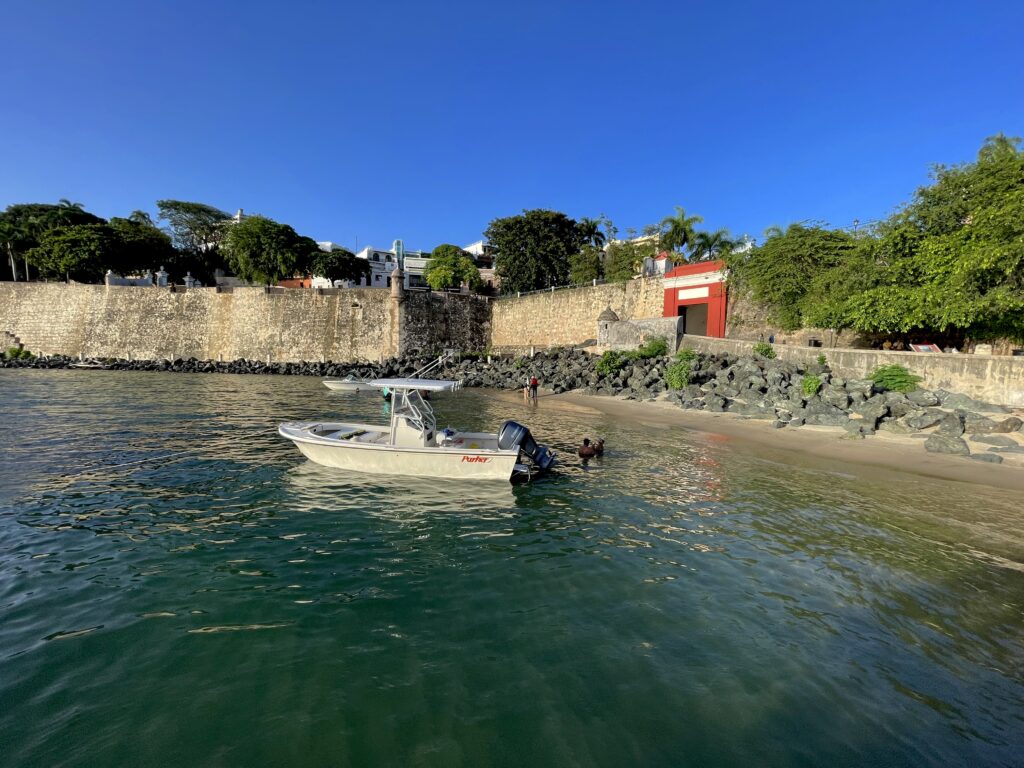
This is a small beach outside of the Puerta de San Juan. It’s a great place to cool off from walking around Old San Juan. The view from the beach of the 300 year old walls and recently restored turrets is beautiful. You’ll have to scramble over large rocks to make it to the narrow strip of sand.
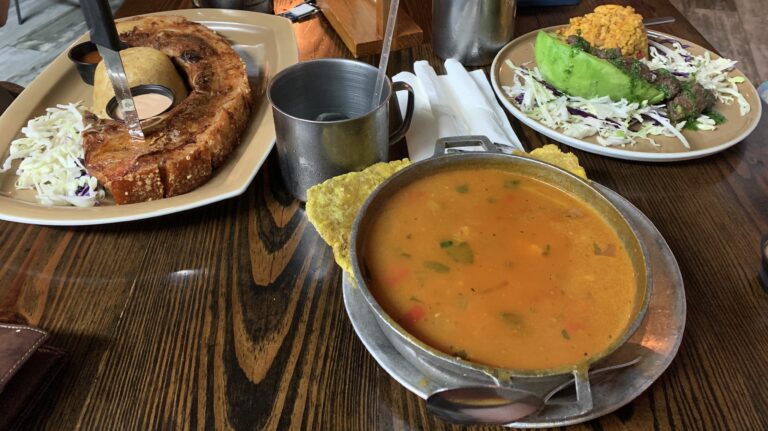
If you are looking for a place for lunch, you can never go wrong with Restaurante Raíces. Raíces offers quality, traditional Puerto rican dishes. It’ll cost more than some other places, but in this case you really get what you pay for. Every time that friends or family visit me, I take them to Raíces and it never disappoints. The restaurant’s theme is “jibaro”, styled after the farmers of past generations that made a living off the land, living in the country. The servers dress in their fashion and the restaurant is painted with beautiful murals of country life. This may be the best place to try mofongo, and carnivores should try the enormous chuleta Kan Kan. Stay away from the fish tacos (there are better places for that).
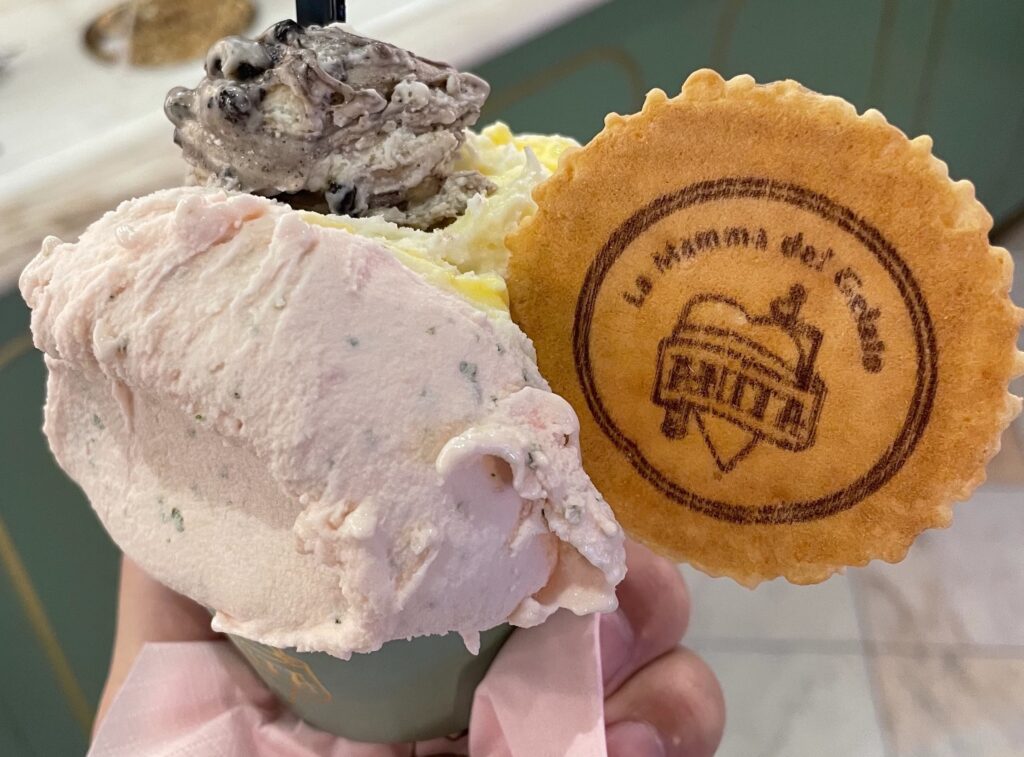
Cool off with some quality gelato at Anita La Mamma del Gelato
Usually a long line, but so worth it! Located conveniently near attractions like Parque de las Palomas and La Fortaleza. Every flavor is good! I can’t help but get the watermelon mint as one of my flavors every time. Try some samples before settling on a couple flavors (you’ll want more than one, trust me).
Day 2
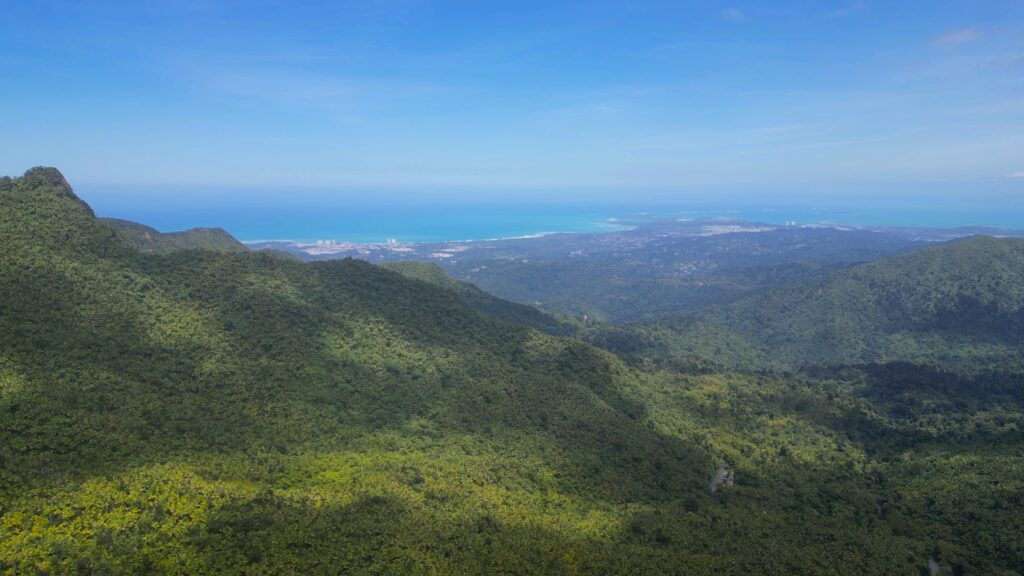
Next, you’ll travel to El Yunque National Forest. It’s one of the most popular places to visit in Puerto Rico for a reason. Pick up your rental car to drive there. All of the popular hikes are short and simple, you won’t get lost.
On the way, get breakfast at Panadería España – an amazing bakery with so many options. Like at any bakery, you can’t go wrong with their egg, bacon, and cheese sandwich.
Arrive at the national forest early. It opens at 8:00am and they only allow 200 cars in at a time. The gates close at 5:00pm.
The following is a list of my favorite spots in the order I typically visit them, for a more in depth guide, check out my El Yunque Itinerary.
La Coca Falls
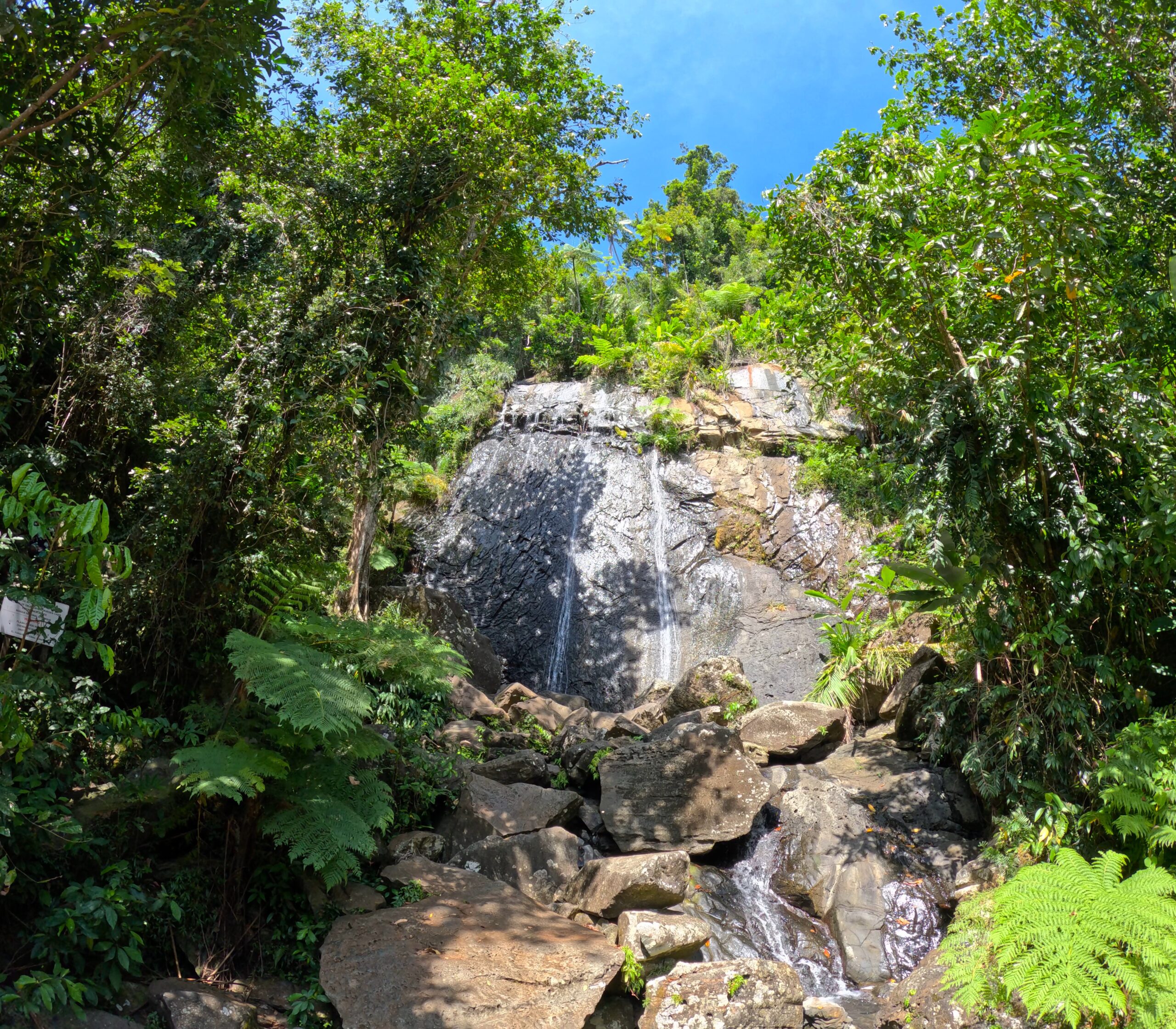
Yokahu Tower
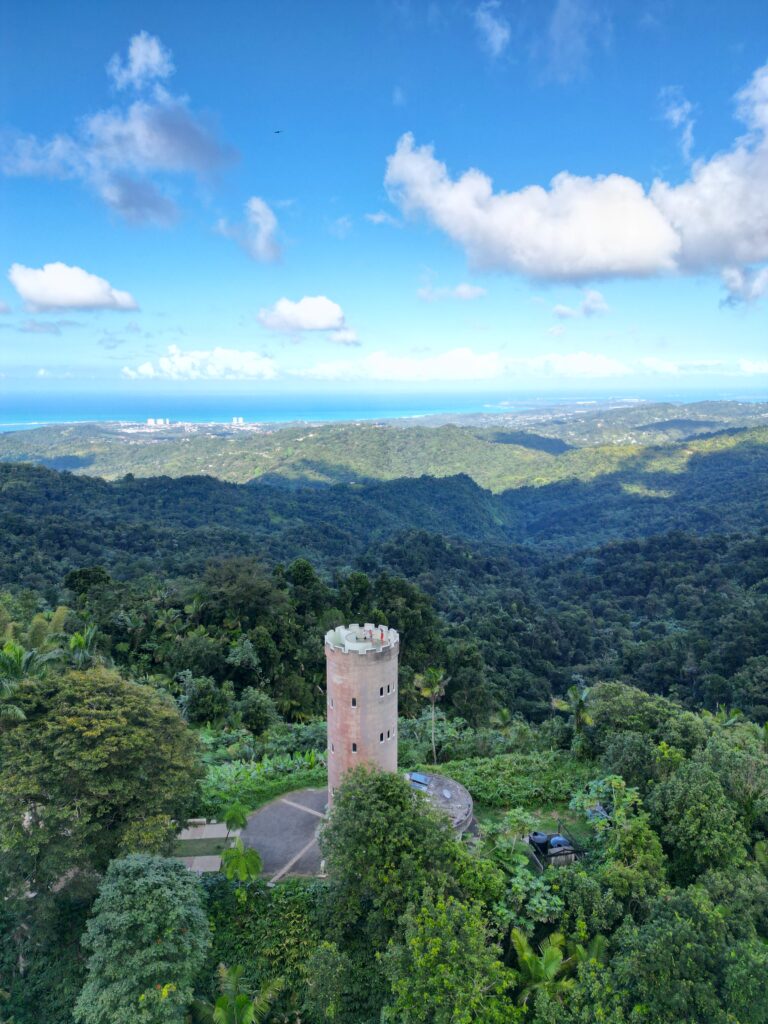
Juan Diego Falls
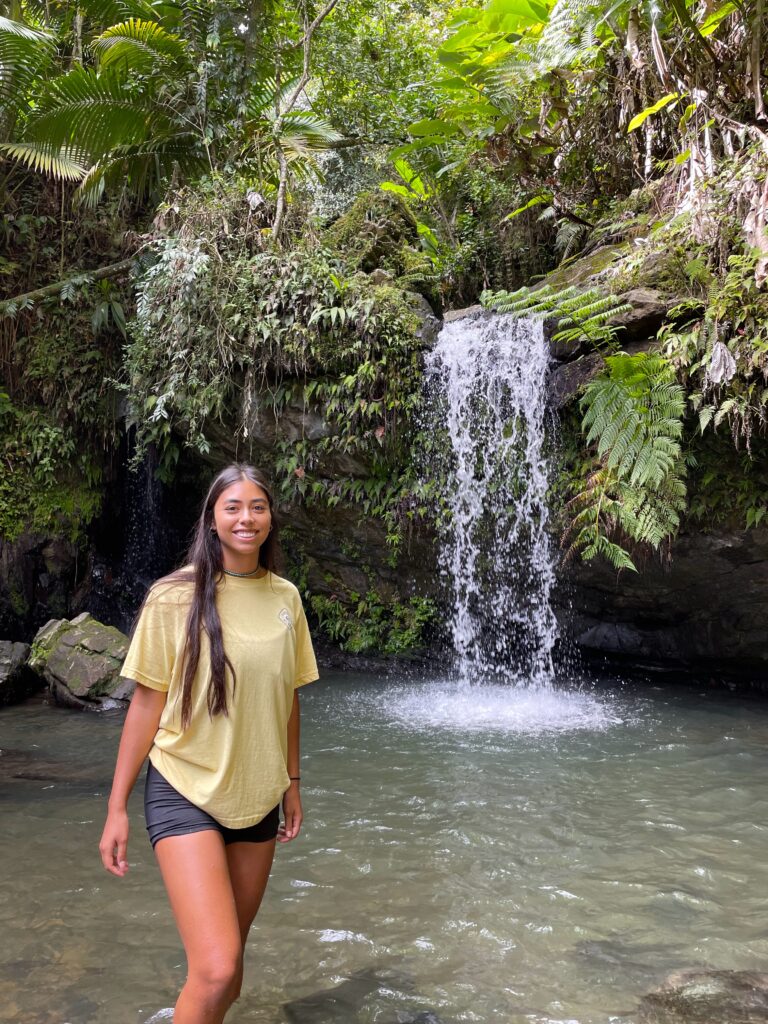
Britton Tower
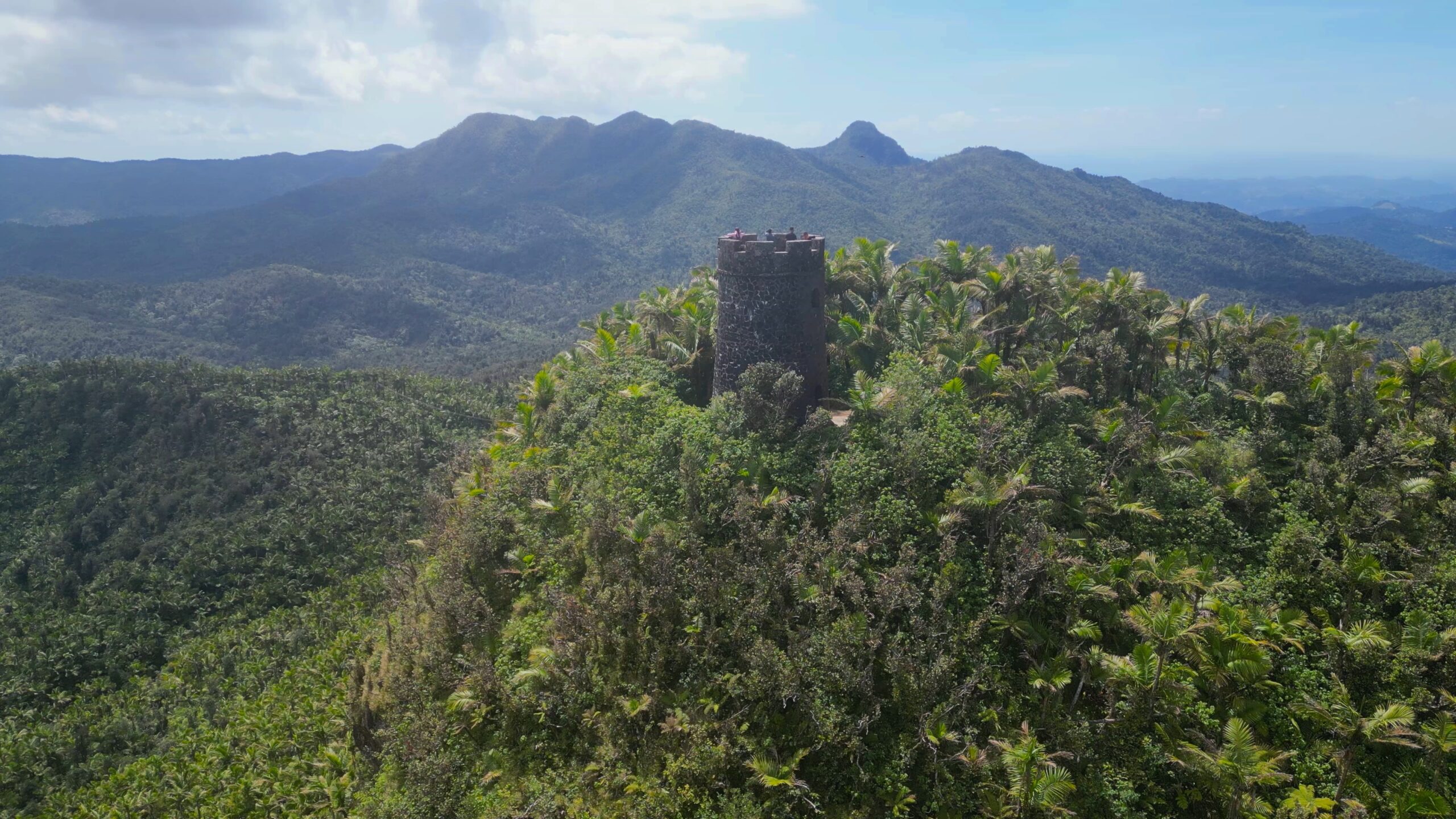
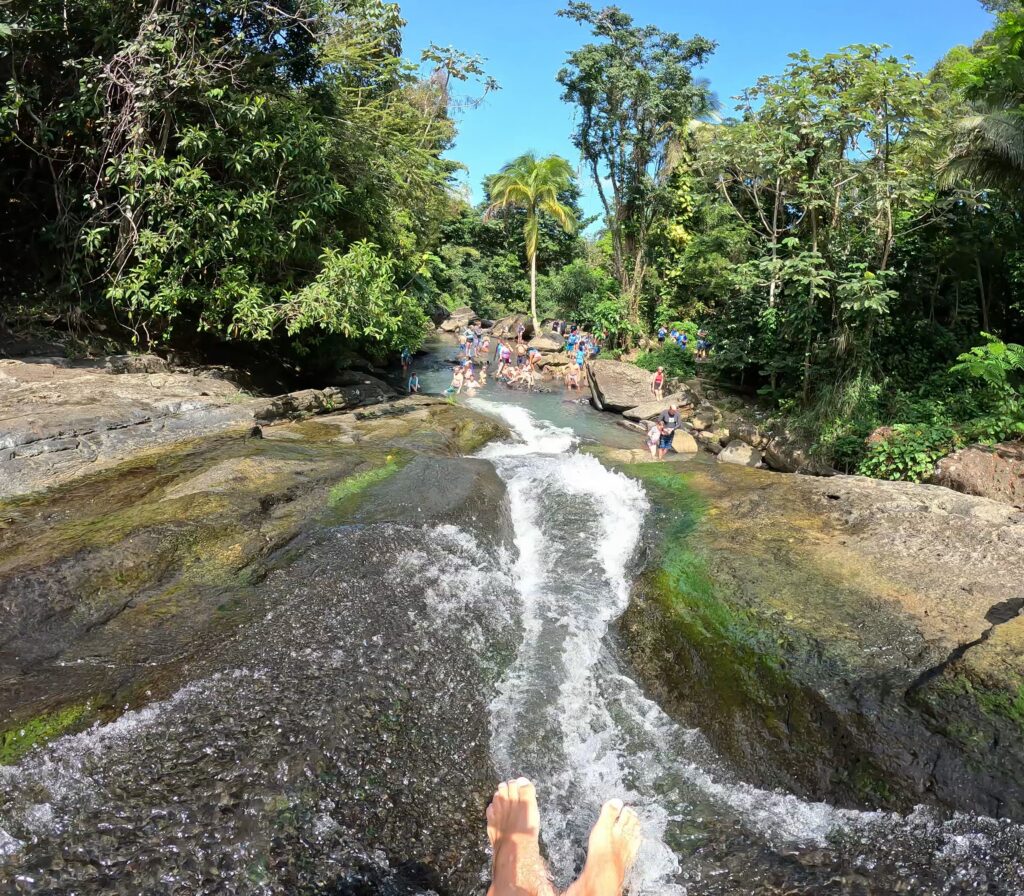
If you follow my itinerary and arrive close to 8:00am, you’ll finish at around 12:30pm. As you leave El Yunque, a great stop is the natural water slide and swimming hole called Las Paylas. It costs $5 to park in front of someones property and $1 to walk through their property. The walk can be a little muddy and slippery. Walk up the rock on the right side of the slide. Careful, it is very slippery! When sliding down, sit up and run your hands over the rock as you go down for balance – like sitting in a chair with arm rests. After the slide, walk down the river a ways to find a large swimming hole where you can relax in the water.
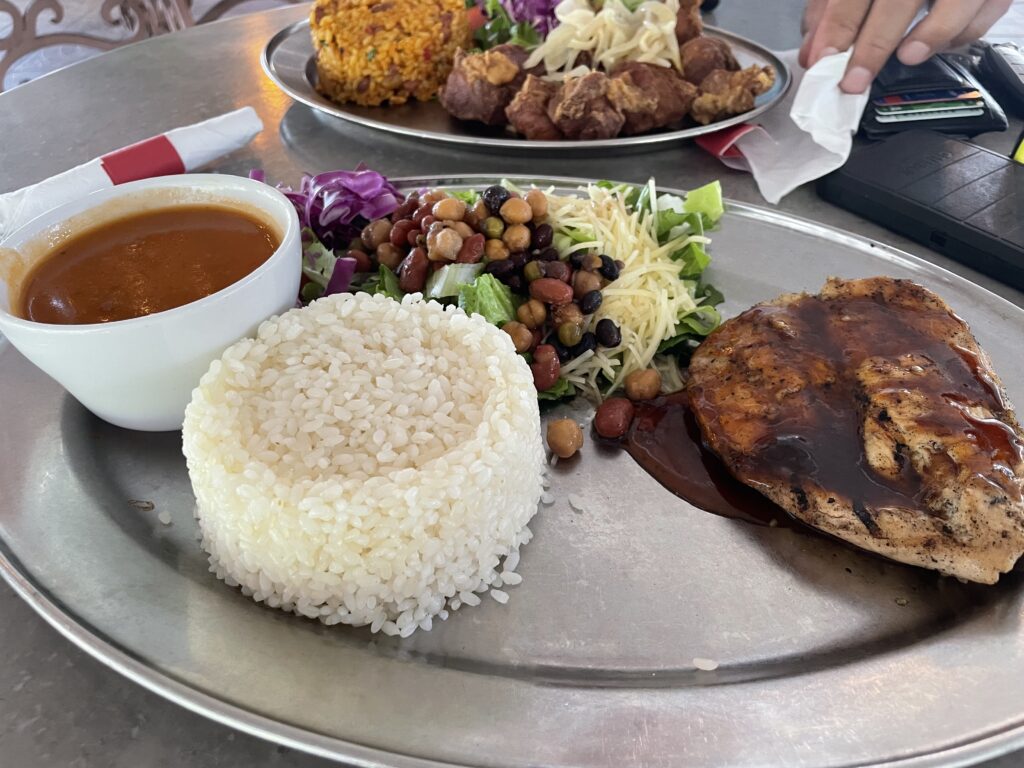
It’s lunch time! Drive from Las Paylas to the Luquillo Kiosks – a long line of kiosks which are mostly restaurants or bars. My favorite place to eat is at La Parilla but I highly recommend walking from kiosk to kiosk sampling the different food you see on display if you want to try different traditional foods. Most of those kiosks are on the east end, opposite of La Parilla restaurant.
Luquillo Beach

The kiosks are located right on the beautiful Luquillo Beach. Walk to the beach and find some shade to set up under. The water is calm and shallow. If you walk to the far east side of the beach, near the paid parking lot and where the beach rounds a corner, you’ll have an awesome view of El Yunque. The water is calm enough for paddle boarding, and renting jet skis is popular here.
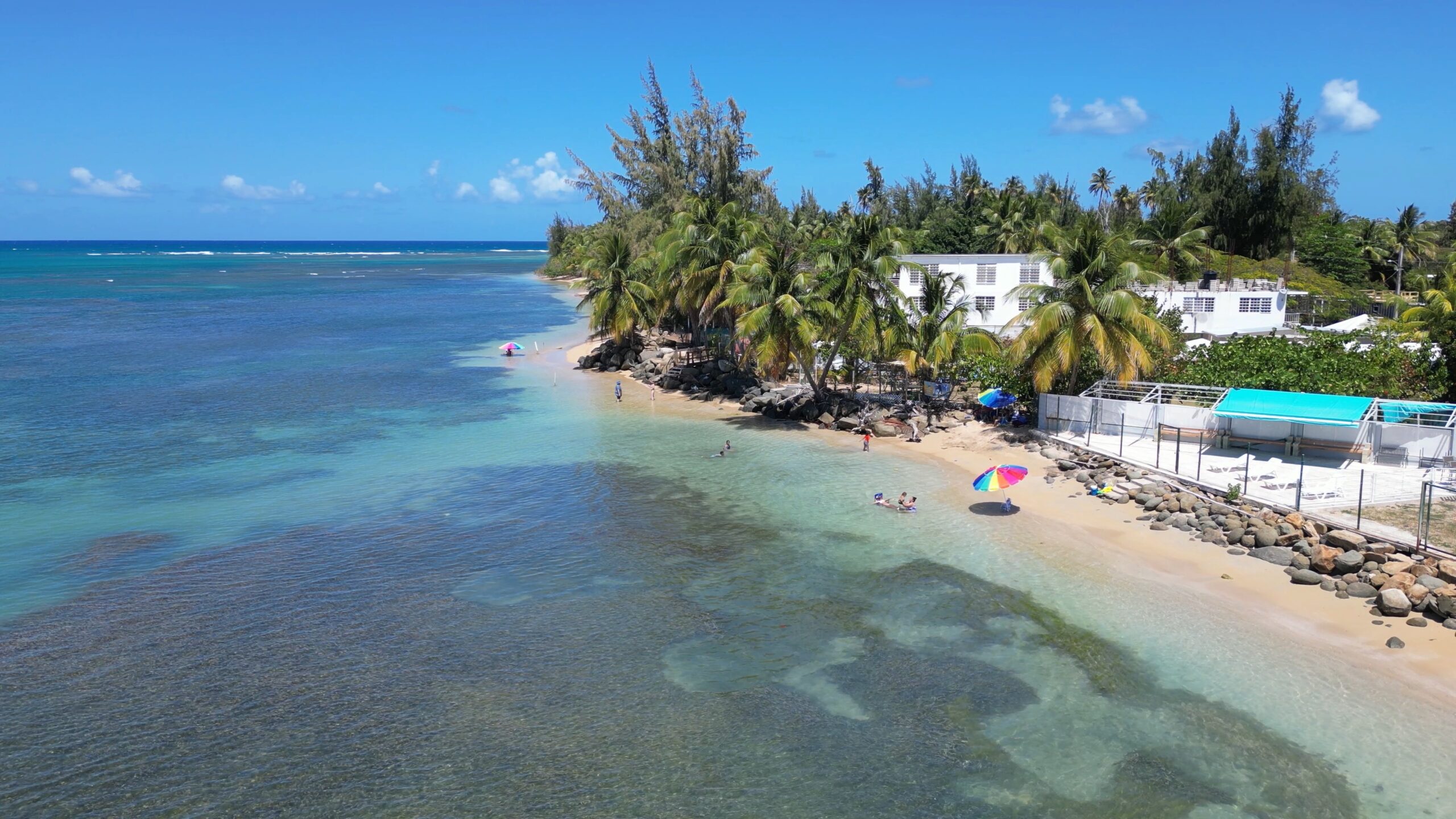
A good alternative to Luquillo Beach is the nearby Las Picuas Peninsula Beach. Beaches surround a peninsula lined with residential properties. The sandy bottom turns to sea grass after a few feet in most areas which leaves just enough room to lay in the shallow water. There are signs that say “ruta” that mark paths to the beach between the houses. The spot pictured has the most space but is also the most popular. There are umbrella holders set out in the shallows, all you need to do is pop an umbrella in, set a beach chair in the shade, and relax. During high tide there is very little sand. There are coral reefs past the sea grass you can swim out to for some snorkeling, but there isn’t a whole lot to see. The reefs are almost completely dead.
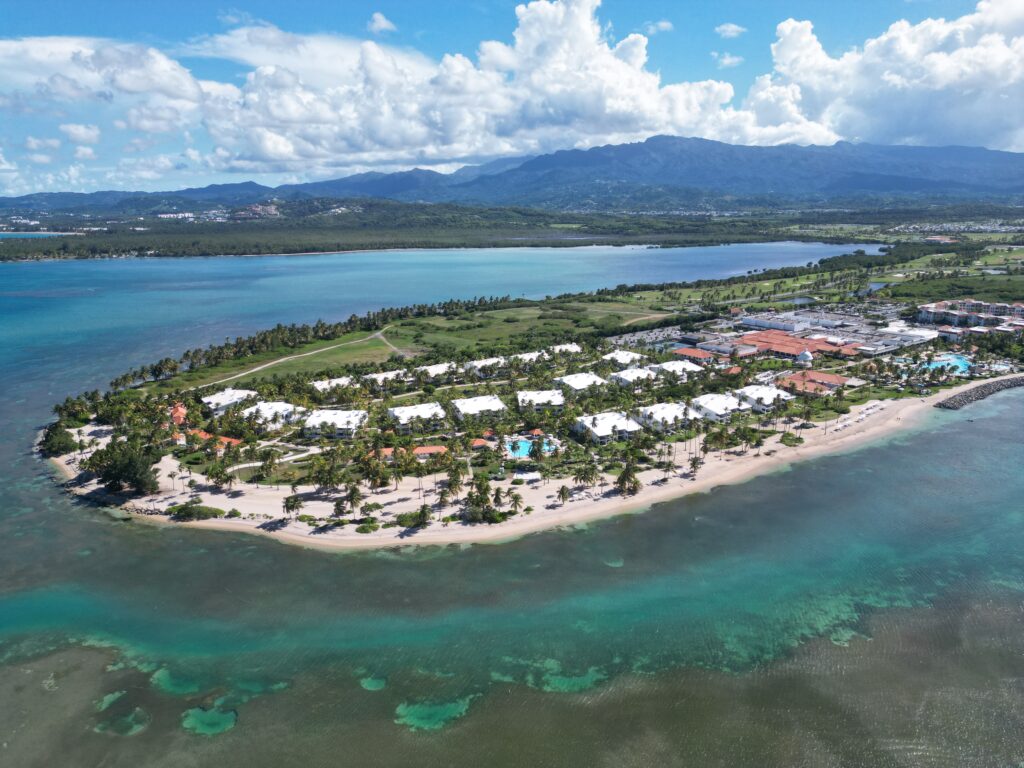
When the sun sets and you dry off, head to a hotel or Airbnb in the area. Getting a place to stay in Luquillo, Fajardo, or Ceiba will make for a shorter drive in the morning. There are several fancy resorts nearby like the Hyatt Regency, which owns it’s own mini-Florida shaped peninsula. For those hoping to spend less than $800 a night, check Airbnb like I do. For dinner, consider trying popular Puerto rican fast food like El Mesón – a fancy subway, or Pollo Tropical, which offers cheap Puerto Rican food. If that’s not your style, Cinco Nudos is a restaurant in the Fajardo Marina with some good seafood options and has a nice ambiance.
Day 3
On the last Sunday of every month, there are ferries running between Culebra and Vieques. If you are able to manage the timing, it would be perfect to move directly between the two. Odds are, you’ll need to ferry back to the main island to catch the ferry to the other island. It doesn’t matter which island you start with, for this itinerary I’ll choose Culebra first.
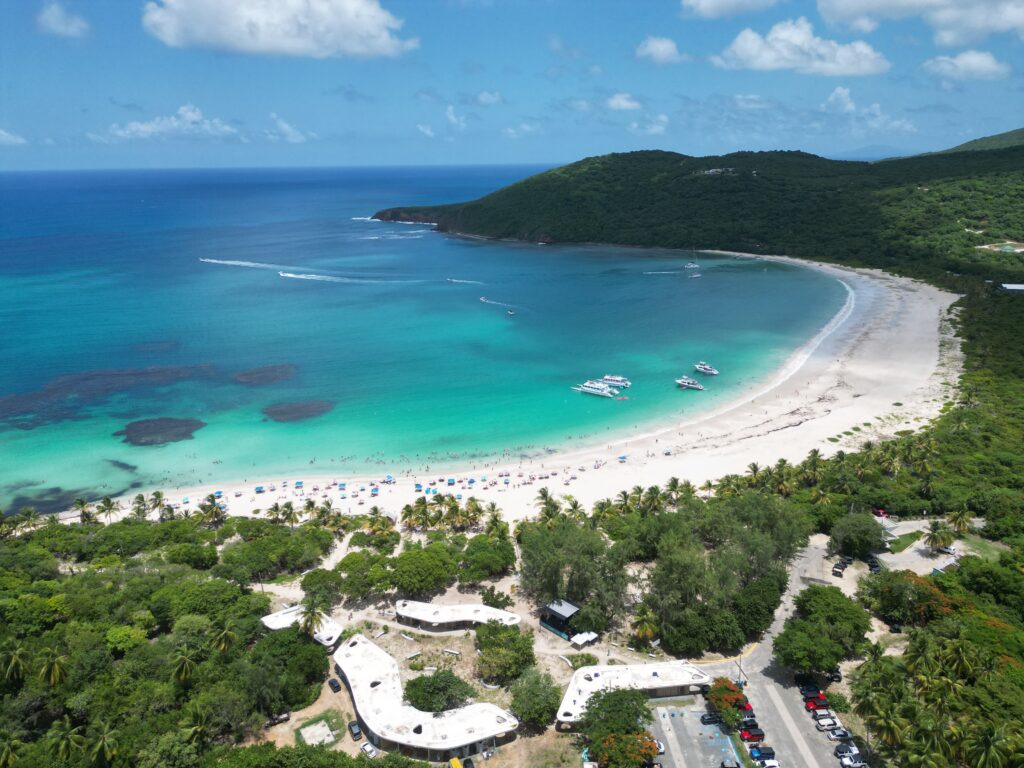
Head to the Ceiba Ferry Terminal. If you decided to stay the night back in San Juan, the drive will take about an hour. In advance, up to a month prior, you need to buy round trip ferry tickets. If you are not able to buy the tickets in advance, you’ll need to check online to see that there are enough ferry tickets available at the ticket booth and buy them the morning of, or better yet, the night before. I suggest buying tickets to Culebra departing around 8:00am and return around 5:00pm on the following day. There are some limited Airbnb and hotel options available online. Bring some cash to Culebra to pay for the taxi to the beach and the entrance to the beach. Spend the morning enjoying the beautiful Flamenco Beach. There are restaurants near the beach where you can get lunch, or you can buy snacks in town before you take a taxi to Flamenco.
Check out my Culebra Itinerary for an in-depth guide to making the trip to the best beach in Puerto Rico.
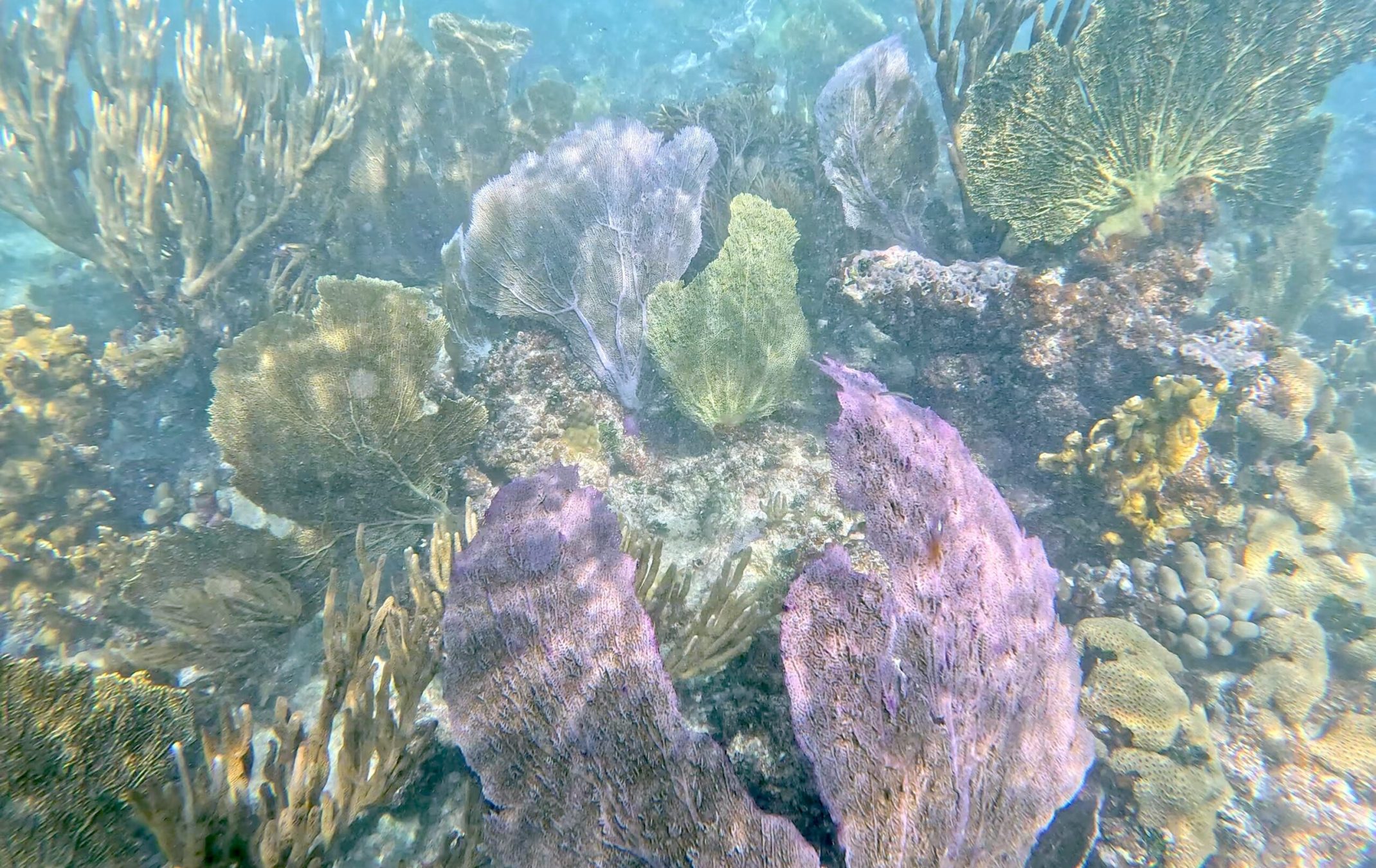
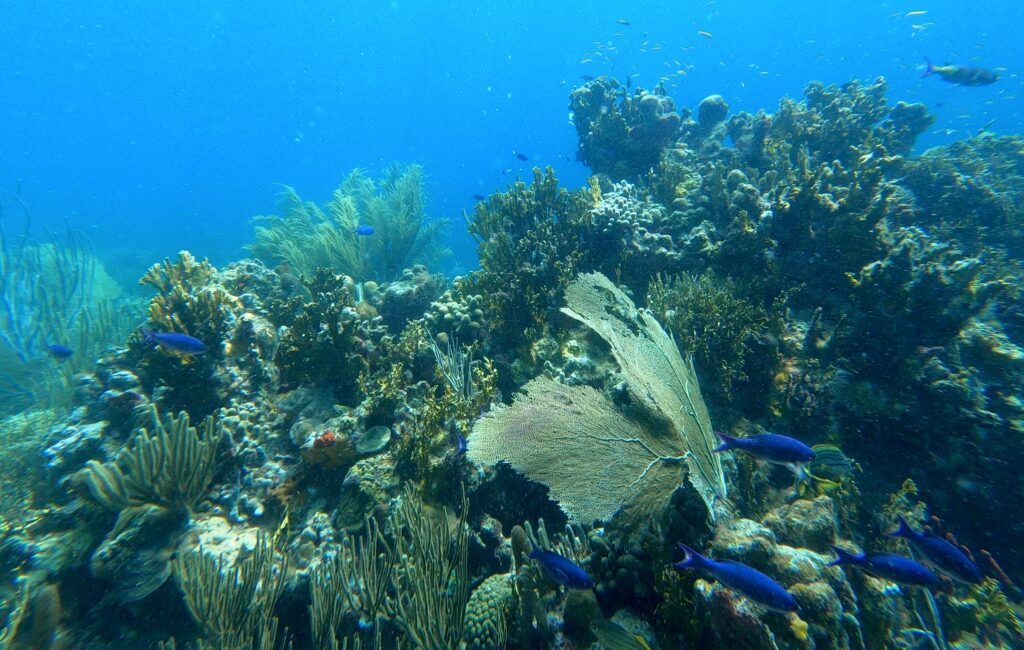
These two beaches are right next to each other and only separated by a tiny peninsula. Walk from the Flamenco Beach parking lot down a trail for about 15 – 20 min. If you have trouble finding it, just ask one of the restaurant owners. Both have excellent snorkeling and offer very similar conditions. The visibility is usually excellent and the coral and sea life is abundant. There are sections, especially of Carlos Rosario where the reef is totally bleached and dead. If you go out further, past the dead reef you’ll find more fish and healthy soft corals. Here, sea turtles are common in the seagrass, especially at Tamarindo Grande. Jellyfish are common here so a rashguard isn’t a bad idea. When swimming this reef, don’t over exert yourself before you swim back to shore as it’s easy to journey out pretty far and get tired.
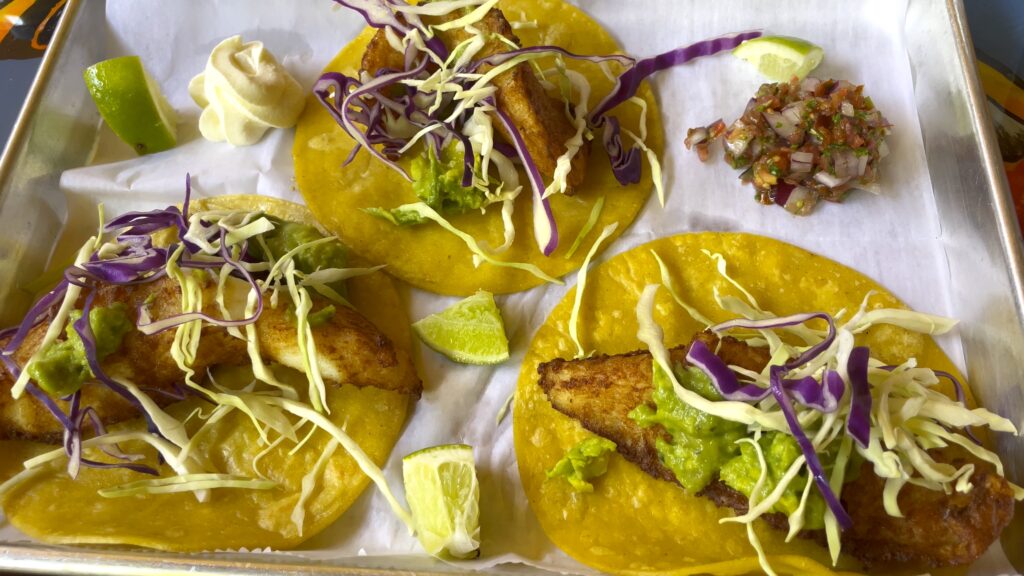
After you’re done snorkeling, take a taxi back to town. There are limited dinner options, but at least a couple good places. Zaco’s Tacos restaurant is open sporadically and is pretty good, though not the cheapest taco you’ll ever buy. It has become our go-to spot for it’s good service and decor. I like their fish tacos, but we haven’t disliked anything we’ve tried here.
Spend the night in town and get ready for another incredible day tomorrow.
Day 4
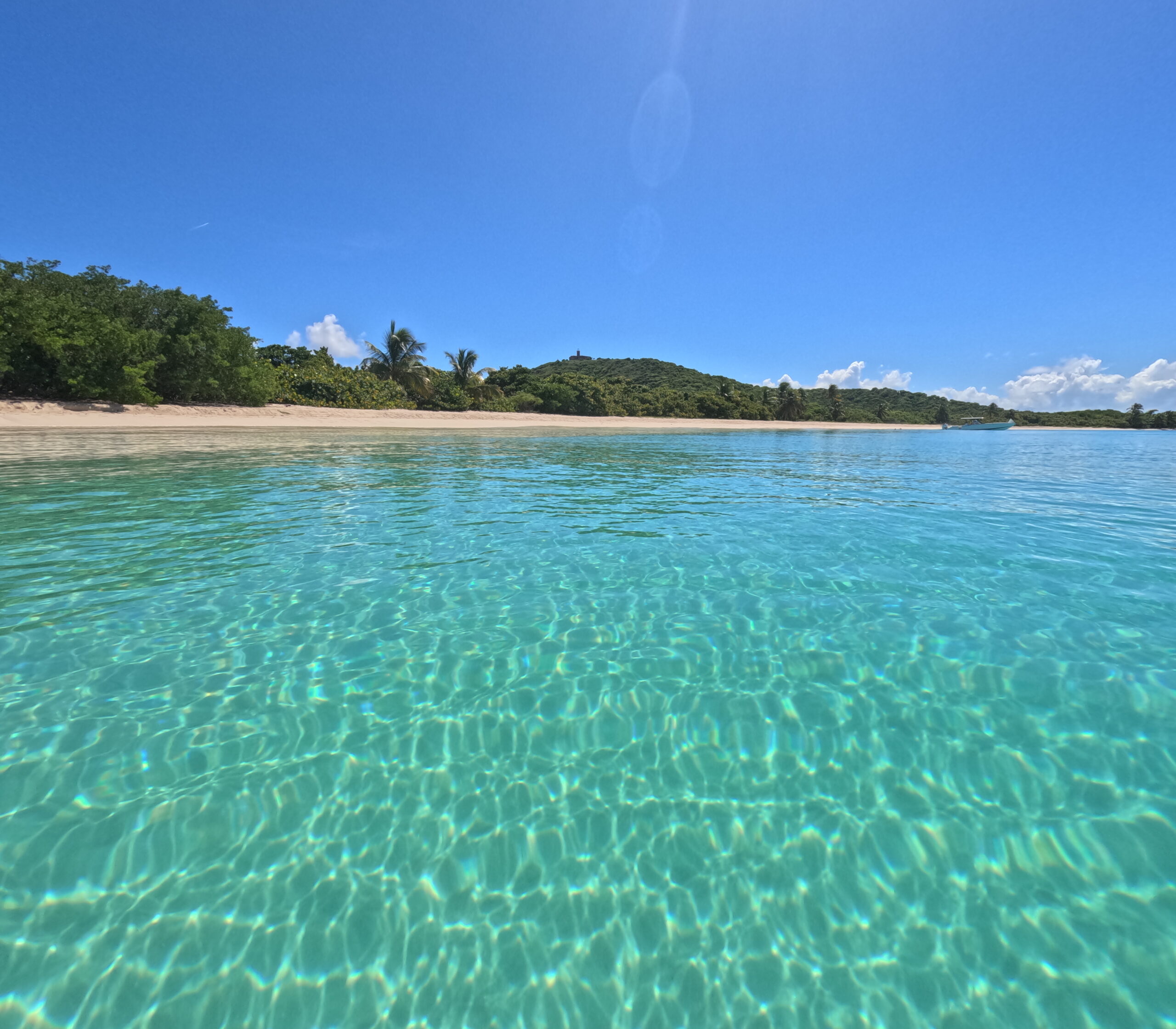
Today you’ll be headed to the beautiful Tortuga Beach. To get there, you’ll need to hire a water taxi or organize a tour. I highly recommend Gammy’s Water Tours, we had a great experience with the couple than runs this business. In addition to dropping you off on the island, they also provide chairs, umbrellas, snorkel gear, and even a paddleboard for you to use. They’ll pick you up 5 hours after they drop you off, but I believe you can extend if the next boat has enough room.
Tortuga Beach is located in a picturesque bay on Culebrita Island. This small, uninhabited island is the easternmost island in the Puerto Rican archipelago. The neighboring island of St. Thomas is clearly visible and is closer than the Puerto Rican main island. Tortuga Beach is a Caribbean Paradise with crystal clear water and white sands. Sea turtles munch on sea grass in the bay and coral reefs surround the island on all sides, making for some amazing snorkeling. The reason this beach does not take the #1 spot is because it is more difficult and expensive to get to than either Flamenco or Caracas.
Gammy’s will drop you off at the ferry terminal. Get tickets back to Ceiba, then the next ticket back to Vieques Island. (If it’s the last sunday of the month you can get a direct ferry ticket).
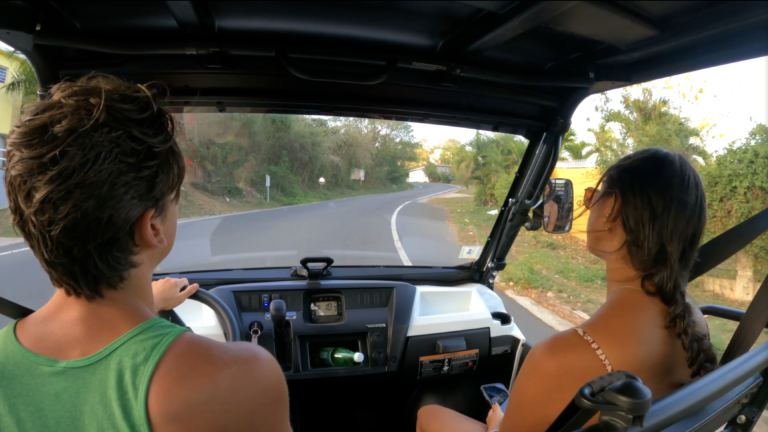
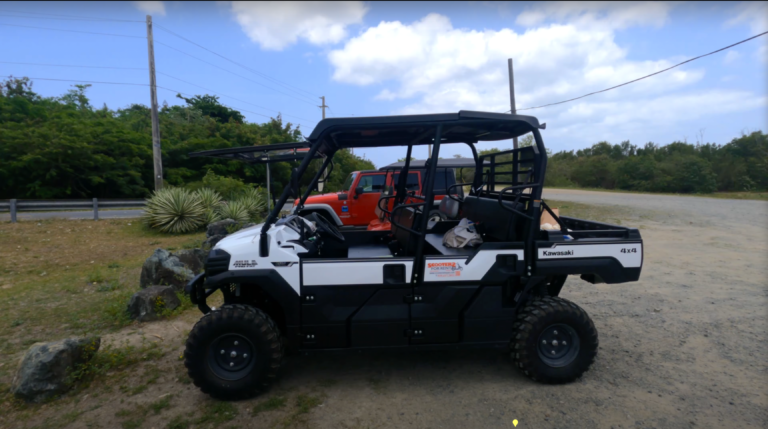
For more in-depth information, check out my Vieques Travel Itinerary.
You’ll need a place to stay on Vieques. There are a lot of Airbnbs to choose from on the north or south side of the island. I have stayed here twice and can recommend it as comfortable and cheap at $157 for 4 people at the time of my last visit – April 2023 (It will be cheaper in the off-season). You’ll also need a way to get around the island. I always rent from Scooters for Rent by Vieques Inc.. When you arrive in Vieques, walk 10-15min from the ferry terminal to their building. I recommend getting a UTV over a golf cart . The UTV is more expensive, but can go much faster (if it’s a 4 or 6 seater, the 2 seater is as slow as the golf cart). That’s important for getting to all the places you want to see. The golf carts move painfully slow at 20-25 mph top speed. If you are hungry, there is a good panadería right next to the rental shop – Panadería La Viequense.
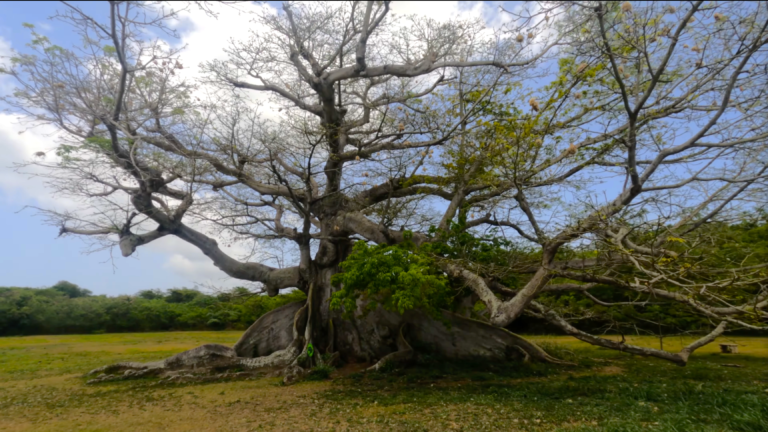
Drive from the rental shop to Parque de la Ceiba de Vieques Reserva Natural to walk around a 400 year old Ceiba tree. There are some plaques with interesting information nearby and small stone benches set along the perimeter to appreciate a living thing four times older than you or I will ever be.
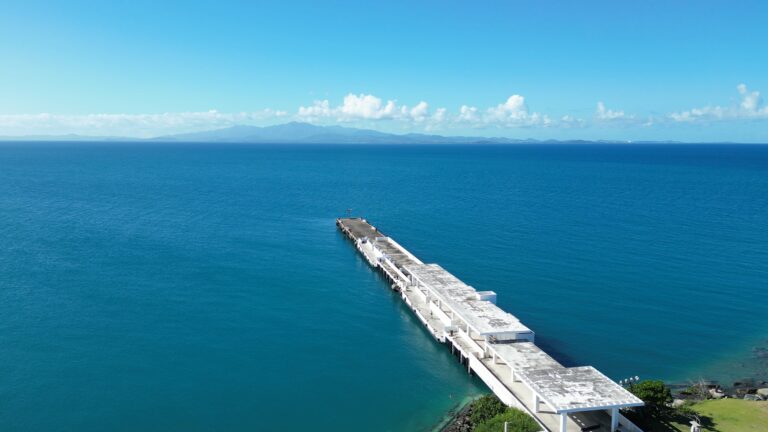
Continue west to the nearby Mosquito Pier for some snorkeling. I have seen a variety of tropical fish, turtles, pufferfish, barracuda, tarpon, and on my most recent visit, a majestic spotted eagle ray. This is a popular scuba diving location for the marine wildlife that can be seen swimming between the pilings (yeah, apparently that’s the proper technical term for the underwater columns that hold up the dock). Visibility is often good, but I have never seen it crystal clear here so I imagine this varies depending on conditions. To enter into the water, you can find a good spot in the rocks that line the pier to scramble down, and then swim towards the dock. You’ll likely see star fish and Flamingo Tongue snails eating sea fans as you approach.
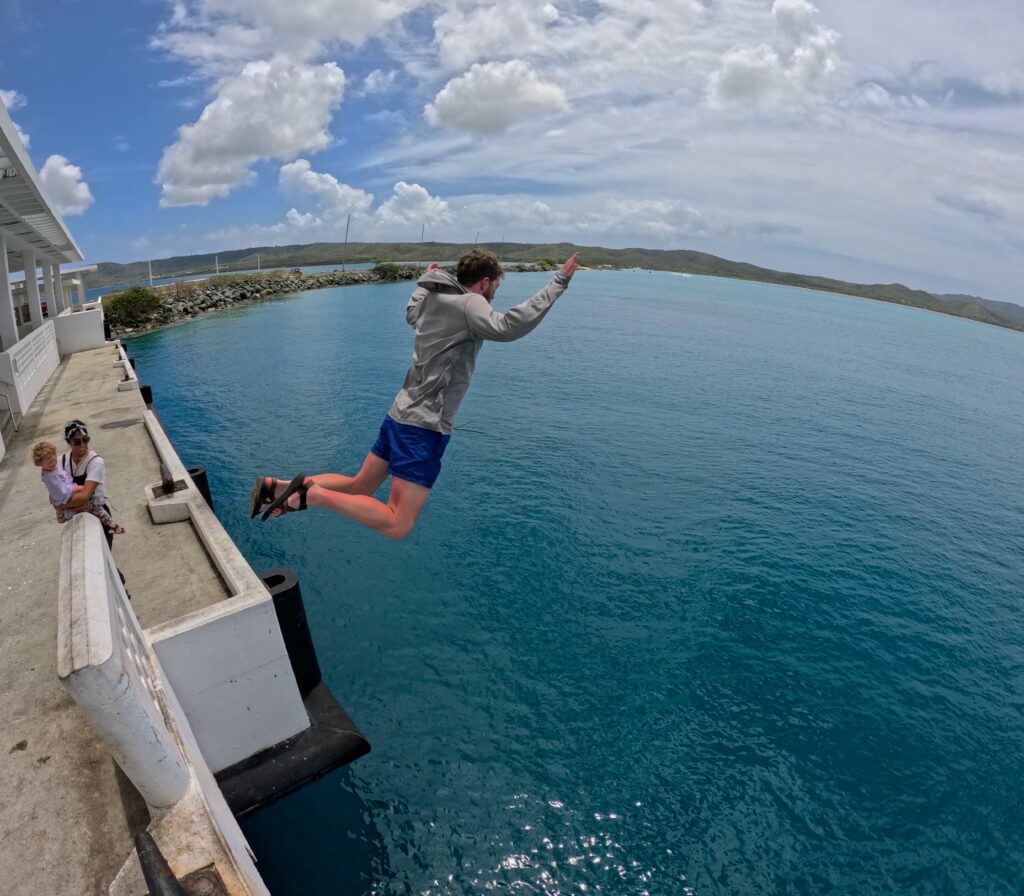
Alternatively you can walk from where you parked on the side of the road over to the dock and hop off (around a 10ft jump) and start snorkeling. The depth is somewhere around 50ft for the length of the dock, if that freaks you out, you don’t have to swim too far, just stay close to the pier and you may still see a lot. If you brave it, I think you’ll find it’s worth the swim.
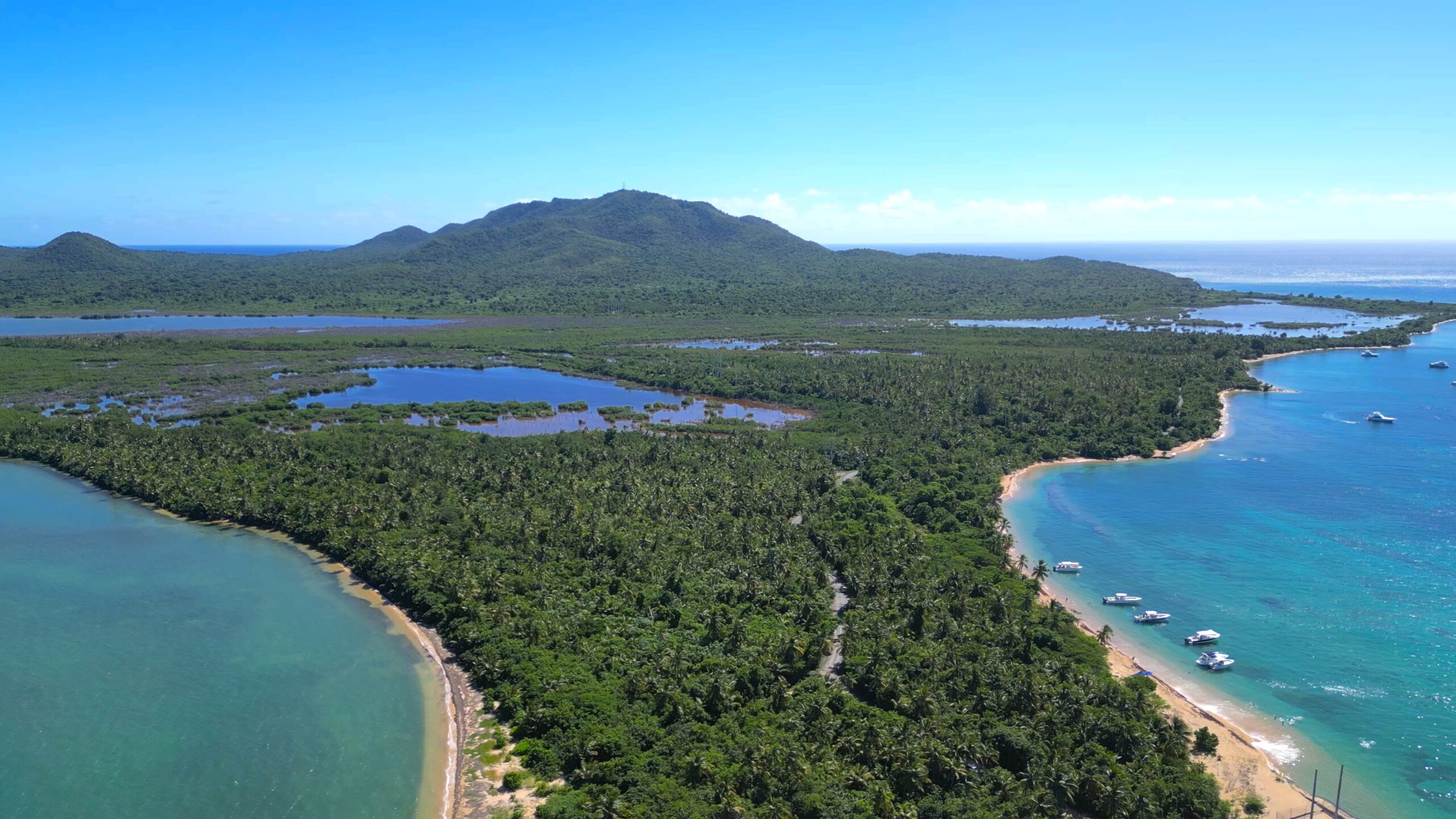
On the Northwest tip of Vieques island is a beautiful beach with leaning palm trees and boats anchored in the sand. It’s a long drive to get here, but totally worth it. The last part of the drive is on a rough dirt road where unmarked speed bumps have been built, I recommend a UTV for the drive. There are two places to park, the first spot is better. There are conch shells washed up on the shore and many more in the shallows. I hear there is a great reef to explore here close to shore. The sand is partially composed of smoothed granite pebbles mottled with black stone and quartz. Floating in the clear water affords a great view of the main island.
Drive to the town of Esperanza for dinner. This place is one of my favorite restaurants in Puerto Rico and definitely my favorite on Vieques. Grabbing food at Duffy’s at sunset before heading to the bioluminescent bay is a core memory for me now. I suggest the spicy chicken sandwich, it’s a beast. The fish tacos are good and also huge. For something special, try the delicious sesame-crusted ahi tuna.
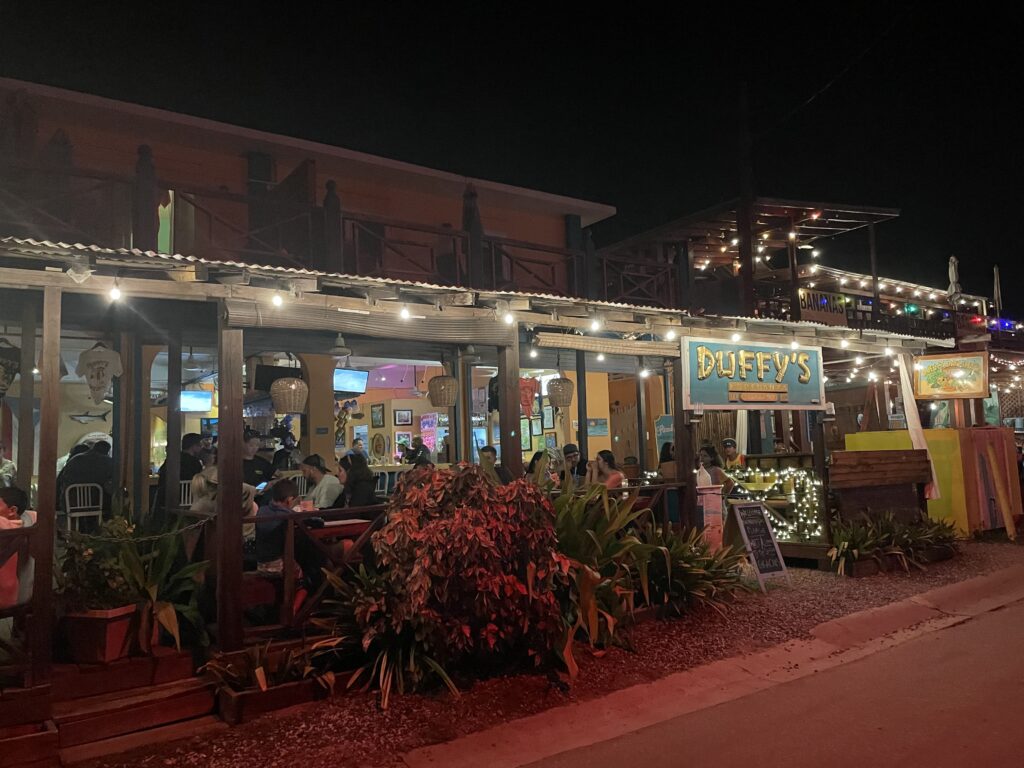
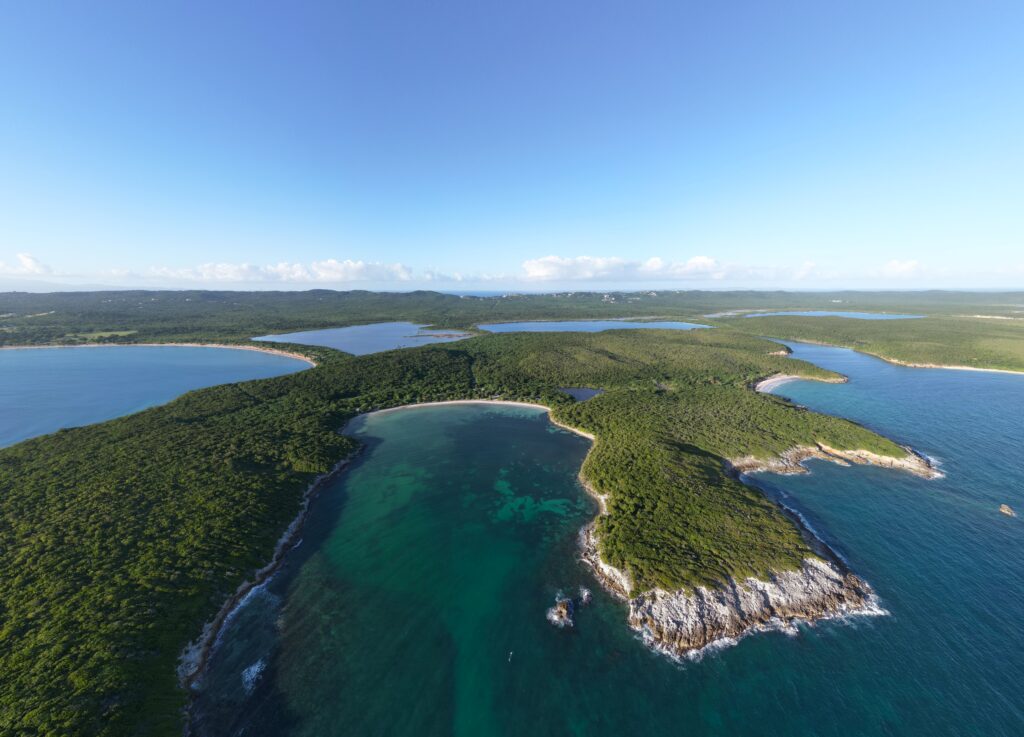
It’s been a full day but we’ve saved the best for last, Puerto Mosquito Bioluminescent Bay, the brightest bioluminescent bay in the world. You can find a tour operator who will rent you kayaks and show you around. Getting a photo of the bioluminescence is impossible unless you have a serious camera for it. I bring my inflatable SUP and we go out by ourselves. If you do the same, I recommend a UTV because the road to get there is very rough. To get into the water you’ll have to slog through nasty mud. Go as close to the new moon as possible. In good conditions you will see perfect outlines of the sea life illuminated beneath you leaving trails of green, shimmering light as you paddle over the dark water.
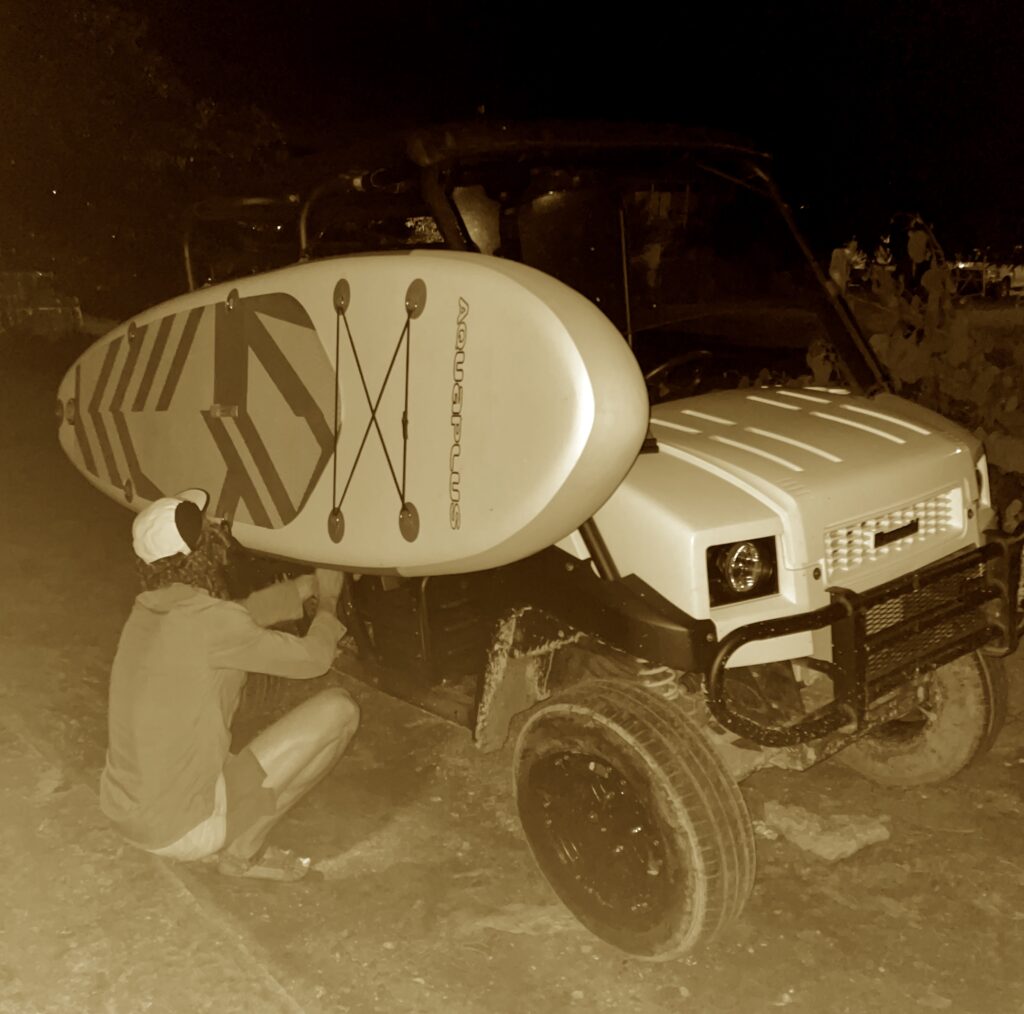
Day 5
Grab breakfast in the morning at a bakery. D’frozz has some good breakfast options. Grab some food at the supermarket to eat while you are beach hopping in the Vieques Nature Reserve. The beaches are quite far from town.
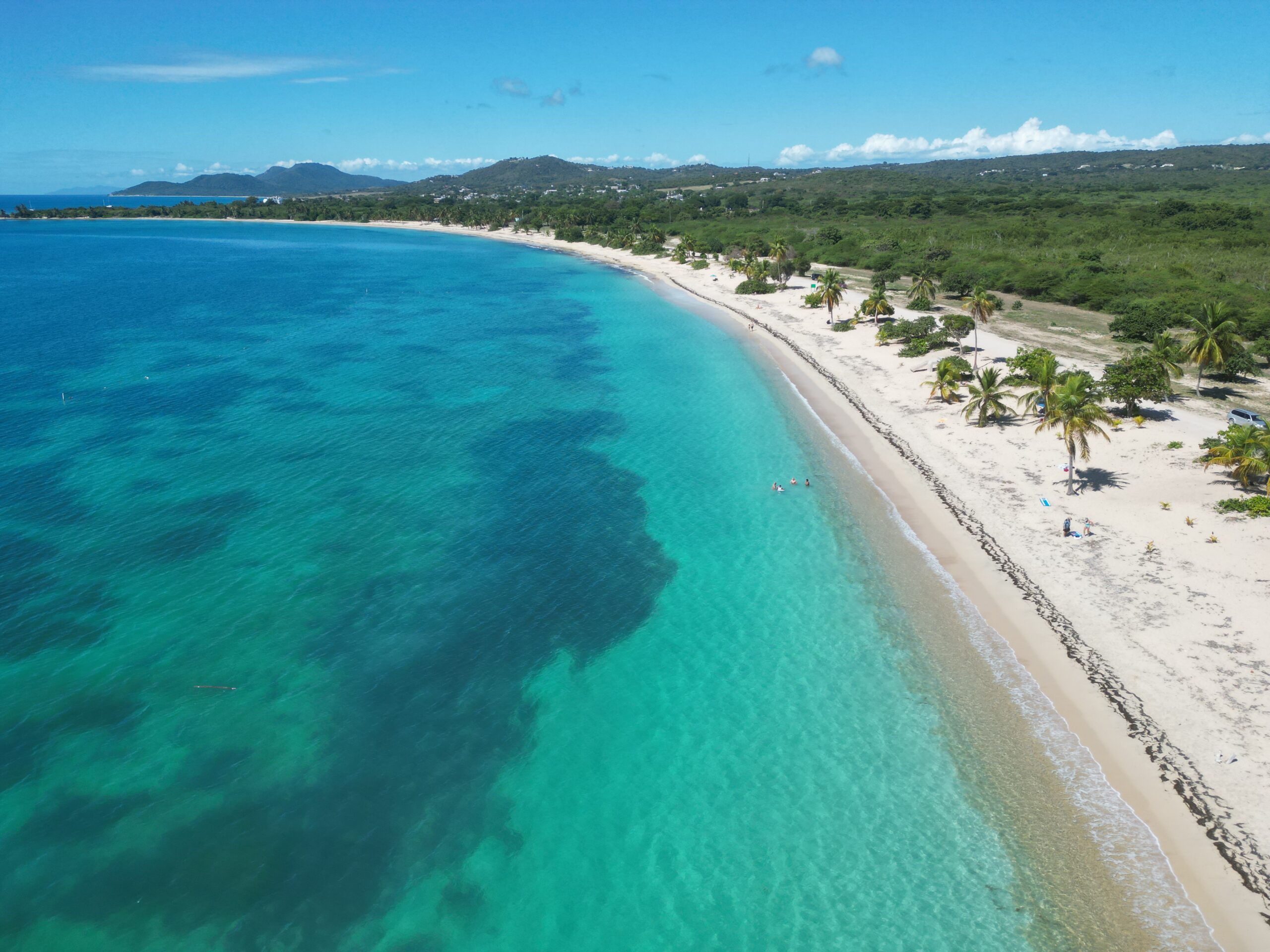
A 1 mile long, crescent-shaped beach with palm trees lining one side and the blue Caribbean water lapping on the other. My friend Sam said upon seeing it, “This is straight out of a commercial.” Drive down the sandy road and pick a palm tree to lie under. This is the perfect place to spend the day on Vieques. I really don’t have a photo that does it justice. It’s more accessible than the other popular beaches on the island as it’s the closest.
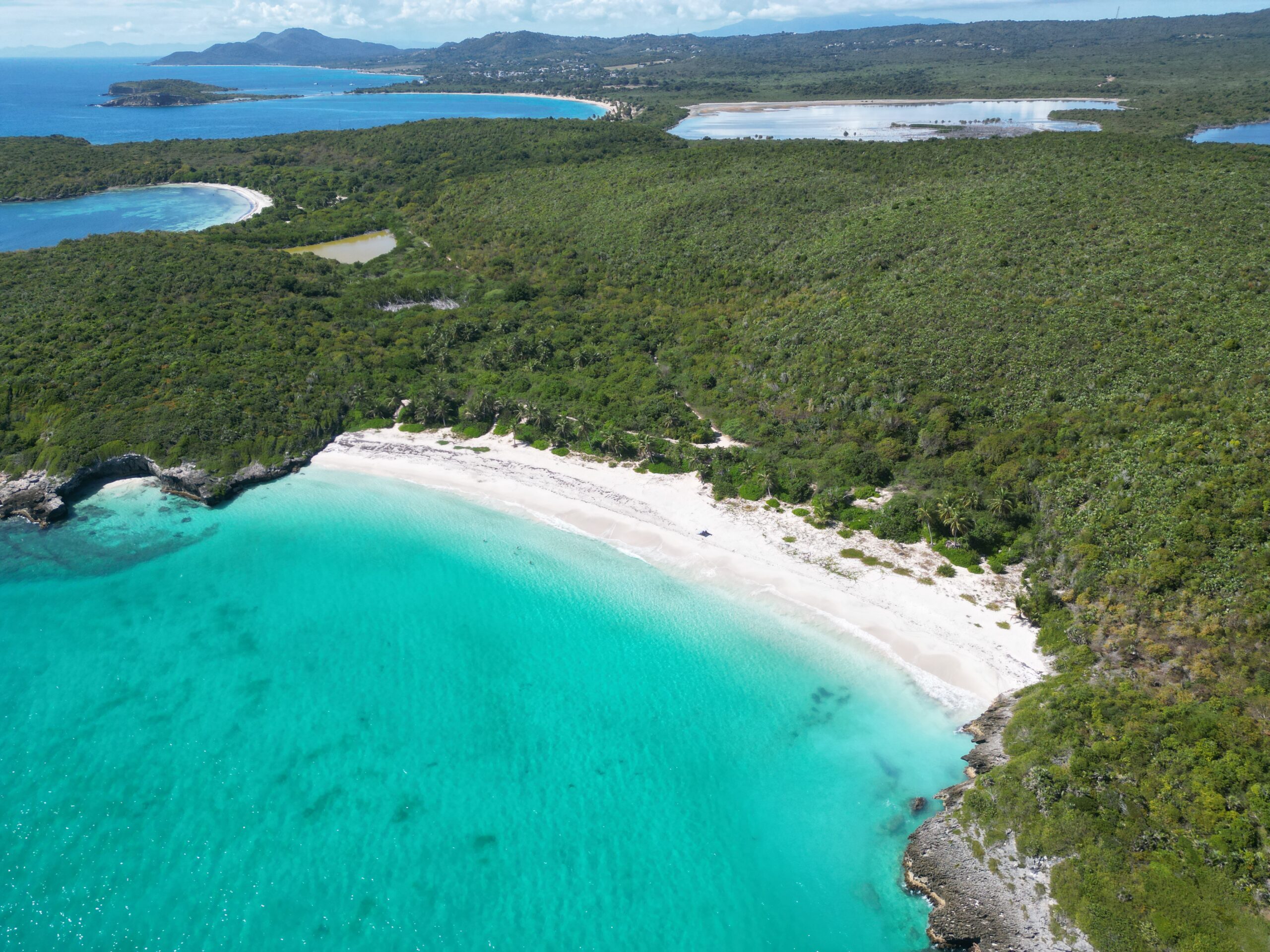
This beach is tucked away down a long and rough dirt road past Sun Bay Beach. Getting there isn’t easy, a vehicle with some clearance is required. The drive is 100% worth it! The sand is white and the water is turquoise blue and crystal clear. We went two days in a row and found the beach mostly empty, probably due to its remote location.
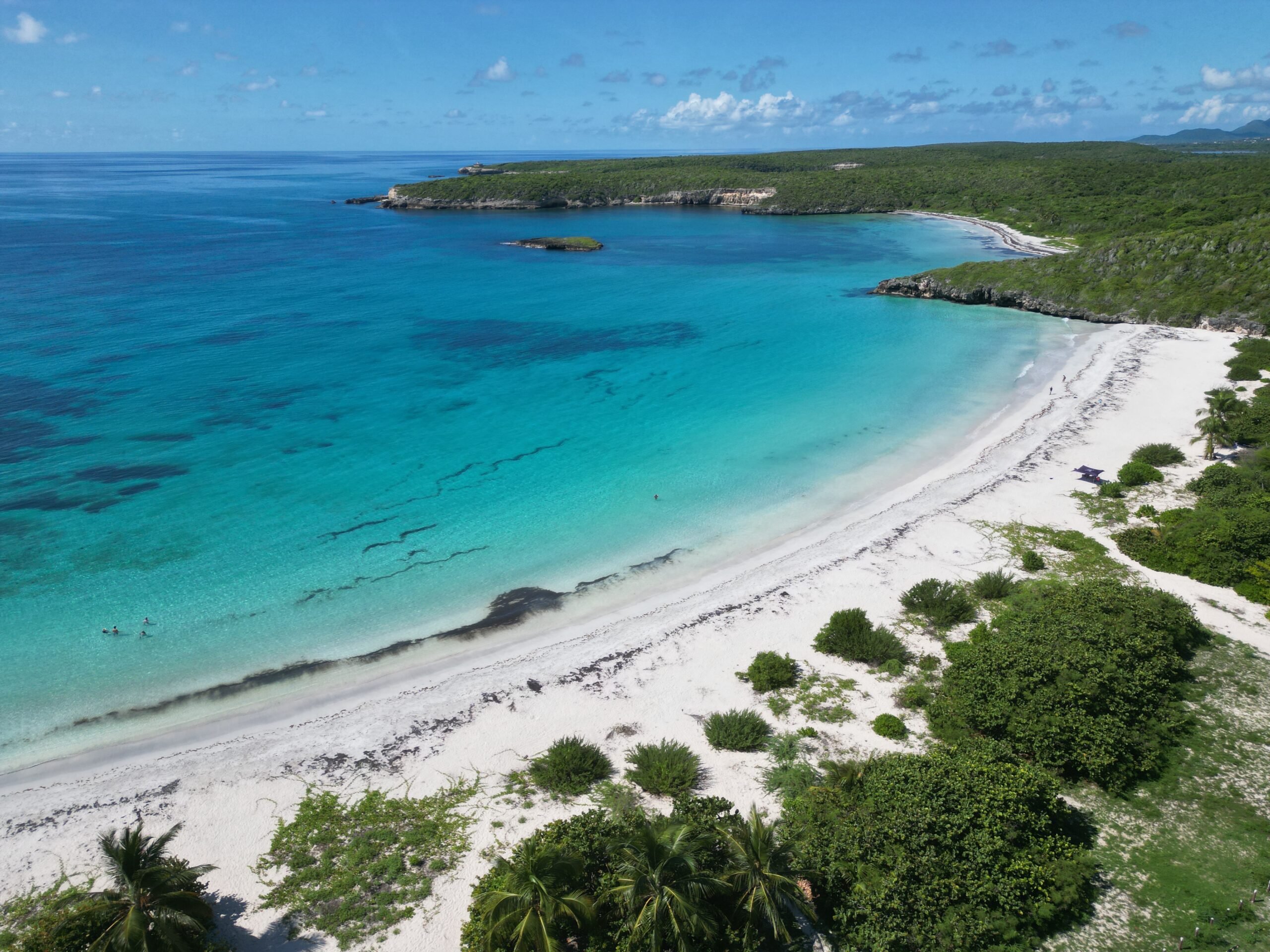
Located in the Vieques National Wildlife Refuge, Caracas Beach has soft, white sand. I think it’s the best beach on the island. It is popular among locals and visitors alike. It has pavilions with picnic tables and BBQ’s which are often all claimed. Generally the water is very calm and clear. This picturesque Caribbean beach will only get more popular in the coming years. It’s cheaper and easier to get to than many of the other beaches on the island. Because the roads are all paved to this beach, you can get there via taxi instead of needing a UTV or golf cart rental.
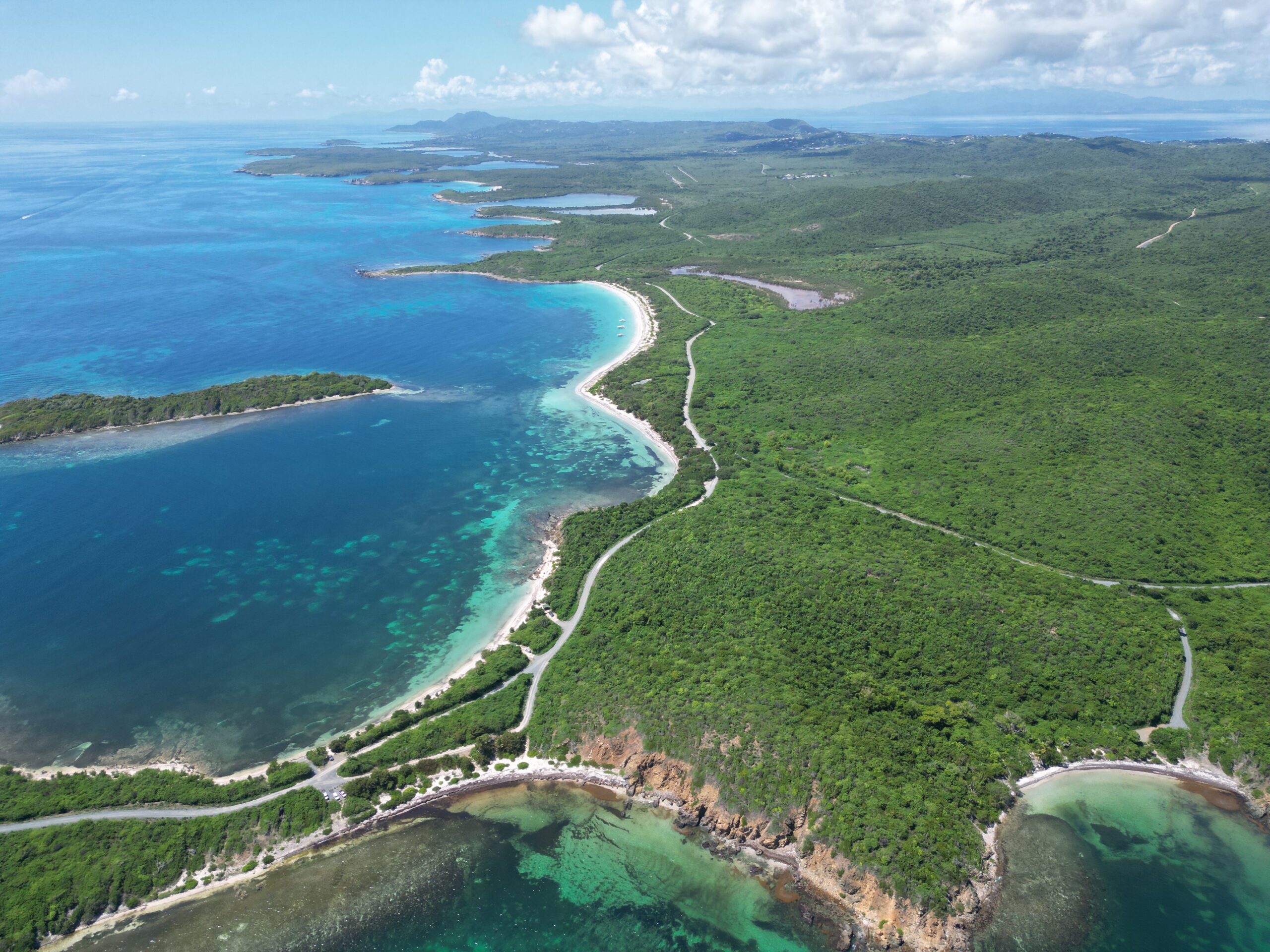
Next is a picturesque beach stretching 1.5 miles along the southern coast of Vieques Island. The sand is almost white, a light grey like the color of dry cement. The water is shallow and crystal clear. To get there, you’ll need to drive down a bumpy dirt road through the Vieques National Wildlife Refuge. You’ll see roads to the right marked 1 – 23. The entrances to La Chiva are numbers 4 – 18. The sandy point in the middle of what looks to be a giant “W” (pictured above) is shallow a long ways out, park at or near #9 to be close. You’re more likely to find seaweed and other debris at numbers 10 – 15.
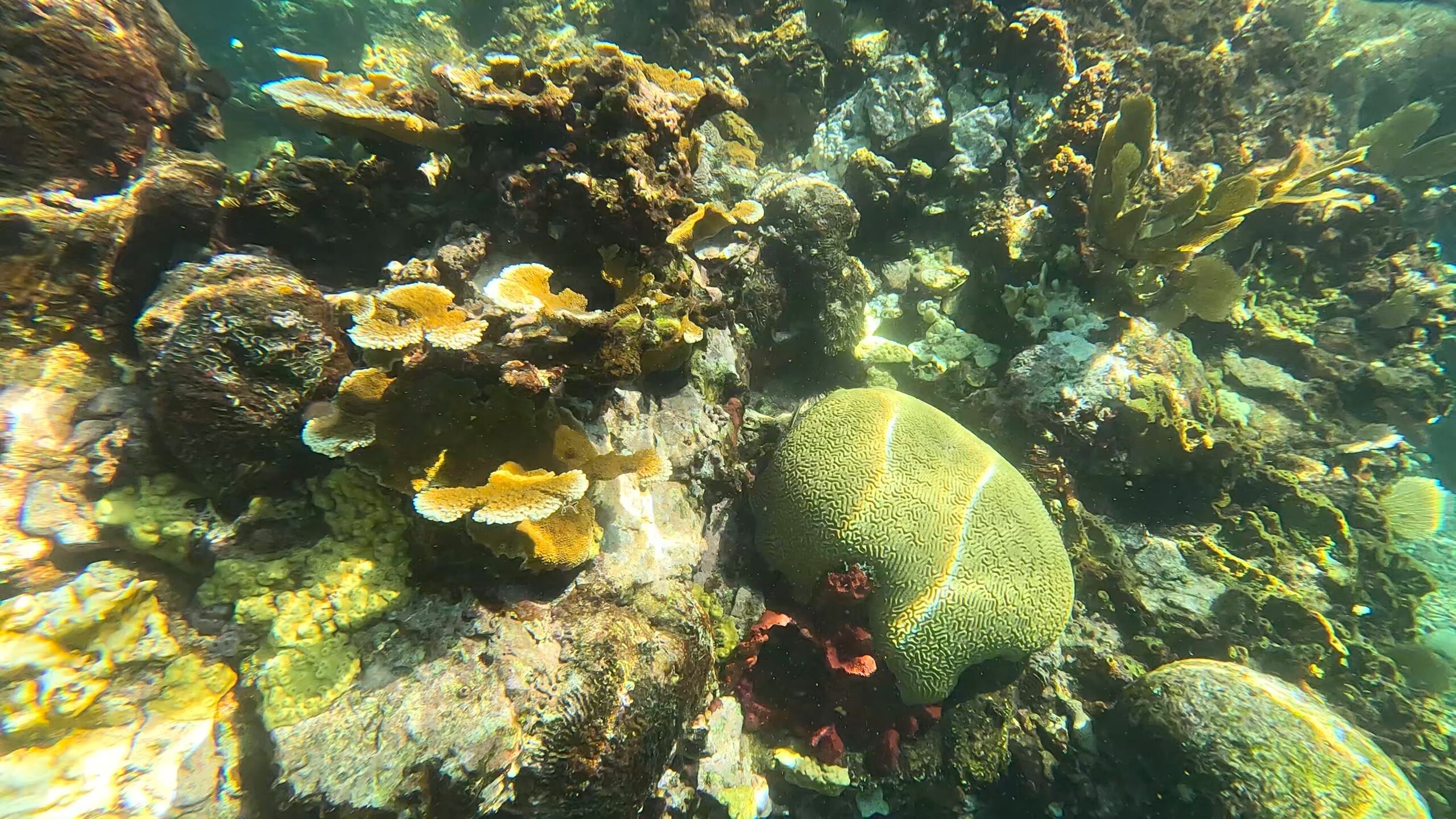
A small beach around the corner from La Chiva Beach that you might find totally empty. There is some good snorkeling offshore from the rocky point with the teardrop-shaped lagoon in the center. To get there, swim from the beach passing the area with waves on your left. It gets very shallow, you’ll have just enough room to swim over the coral at times. The further you go, the healthier the coral becomes until you are cruising over a beautiful, shallow reef. It will eventually get deeper and you’ll see tons of marine life and a variety of hard and soft corals. I saw a good variety of fish, sea turtles, and jellyfish. My wife saw multiple barracuda.
Fill up the tank and return your UTV to the rental company, this does not take more than 15 min. If you are leaving before they open, you can put the keys in a mailbox. Get to the ferry terminal with some time to spare. Boarding usually starts later than in Ceiba, but it still closes 10min before departure, if it’s on time. The passenger ferry back takes 30 min. Pick up your rental car from the lot. Parking there for 3 days will have cost $45.00.
Drive 25 min to this restaurant in Naguabo. El Makito extends into the port of Naguabo, lending those dining on the deck a beautiful view. You should be showing up just in time to watch the sunset while you dine. The fried red snapper comes recommended.
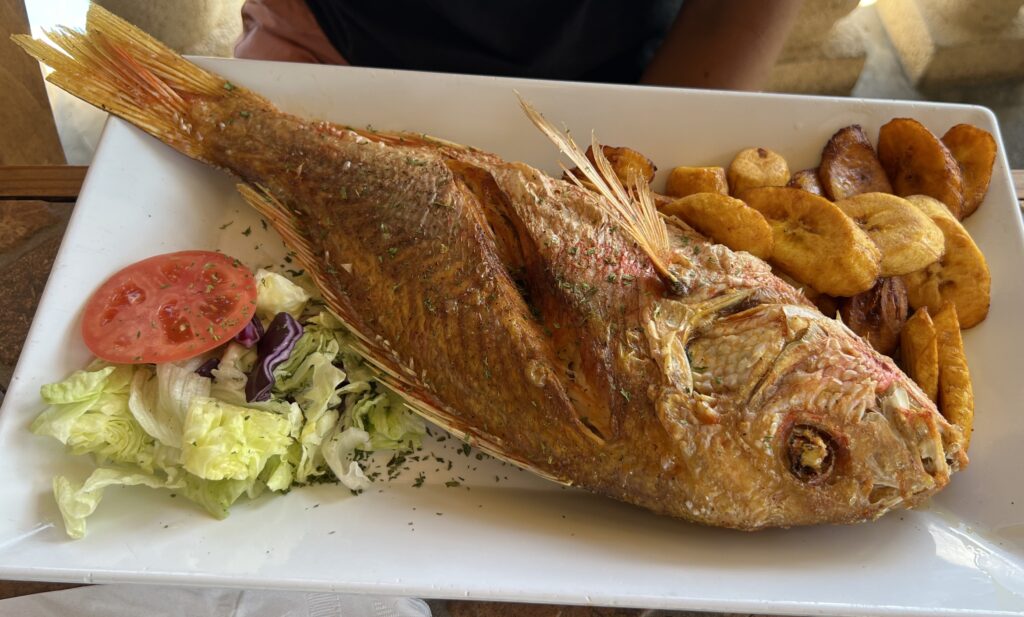
Spend the night in Ceiba or Naguabo to be close to the southern border of El Yunque National Forest, that’s where we are headed tomorrow.
Day 6
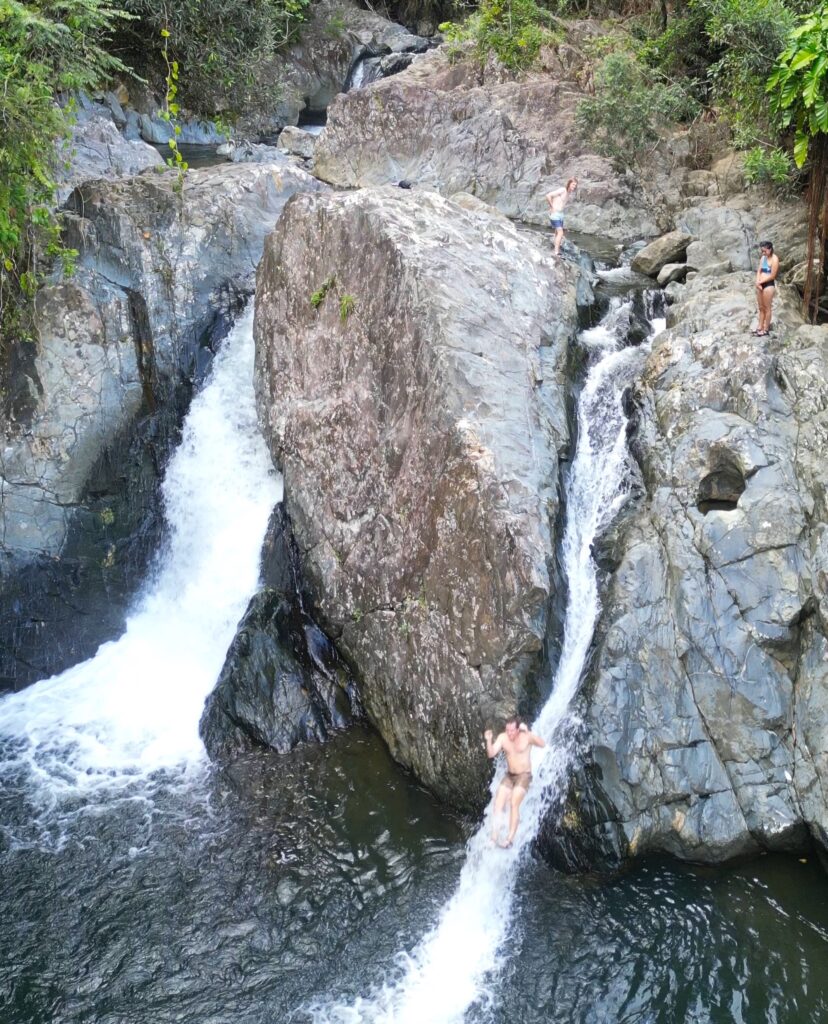
From Naguabo it’s a 20 min drive to this unique spot located on the south side of El Yunque. There is a spot or two for cliff jumping, a rope swing, and two natural water slides. Park in the private lot for $5 cash. Then, hike along the trail (ask around if you are unsure where that is) until you reach a swimming hole with a rope swing. You’ll need to pay $2 per person to cross private property, a man will be waiting to collect. Alternatively, you can follow the river directly until you arrive for free, though I have not tried this. Cross the river to get to the rope swing and follow the trail on that side of the river and you’ll find the first water slide which is the longer and better one. If the water is brown and intense only use the bigger slide, not the smaller one pictured as it can be unsafe.
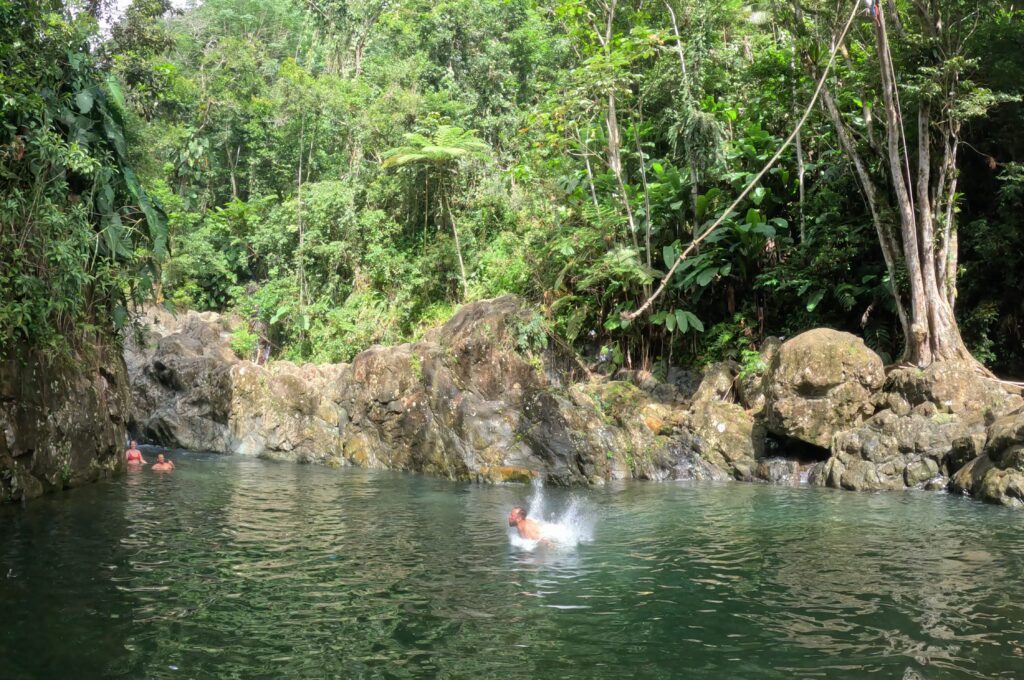
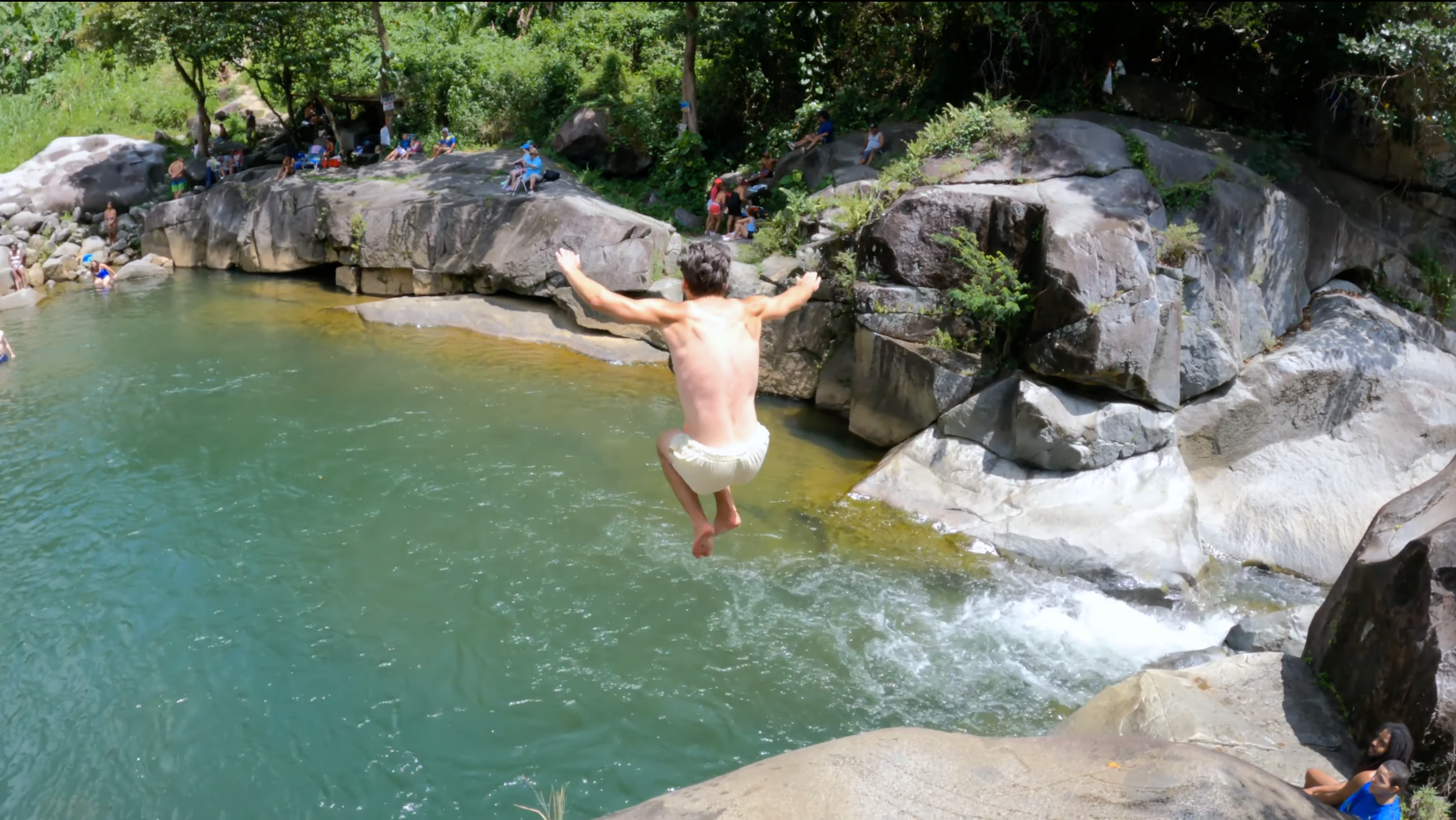
From there, drive 30 min to Charco El Hippie – a popular swimming hole and waterfall in Naguabo. It’s on private land, which means you’ll need to pay $5 for parking. This natural pool receives water from a small, cascading waterfall. You can climb up the rocks on one side to hop into the water below. Make sure to do a depth-check before you jump as it can get tricky when the water level is low with a very shallow section on the right of the jumper pictured below. The name “El Hippie” comes from the area apparently once being a popular hangout spot for hippies in the 1960s.
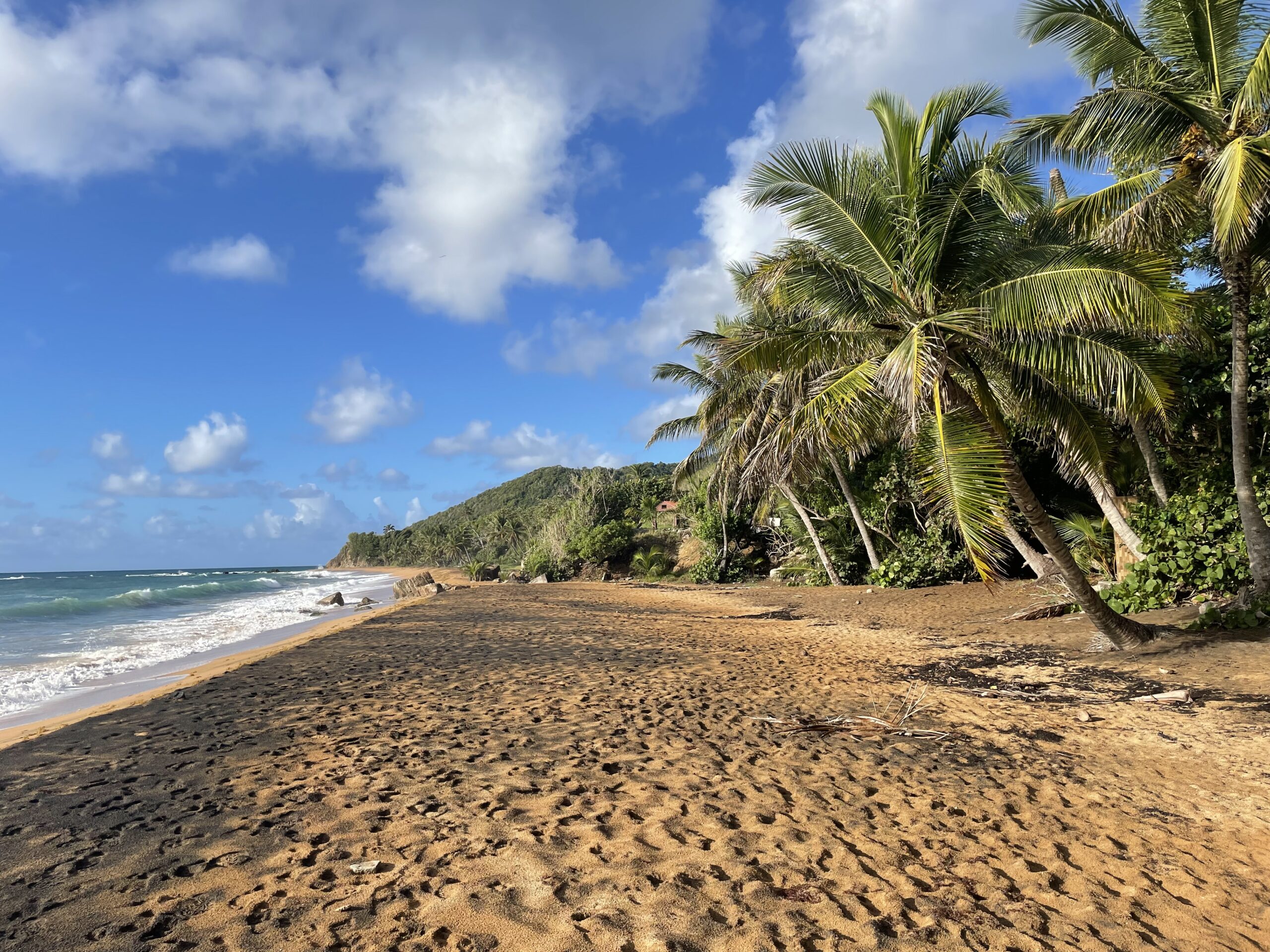
Next, drive 35 min south to El Cocal, or alternatively Yabucoa Beach. It’s one you are likely to find empty on weekdays. There are shore-break waves that make it hard to lounge in the shallows. Still, this is a nice beach to walk down. There is an area protected by rocks with no waves where you can get in the water on the left side. We found some ripe coconuts to break open and drink further down the right side. Although it’s not a top-tier beach, it is still beautiful and worthy of a visit if you are nearby.
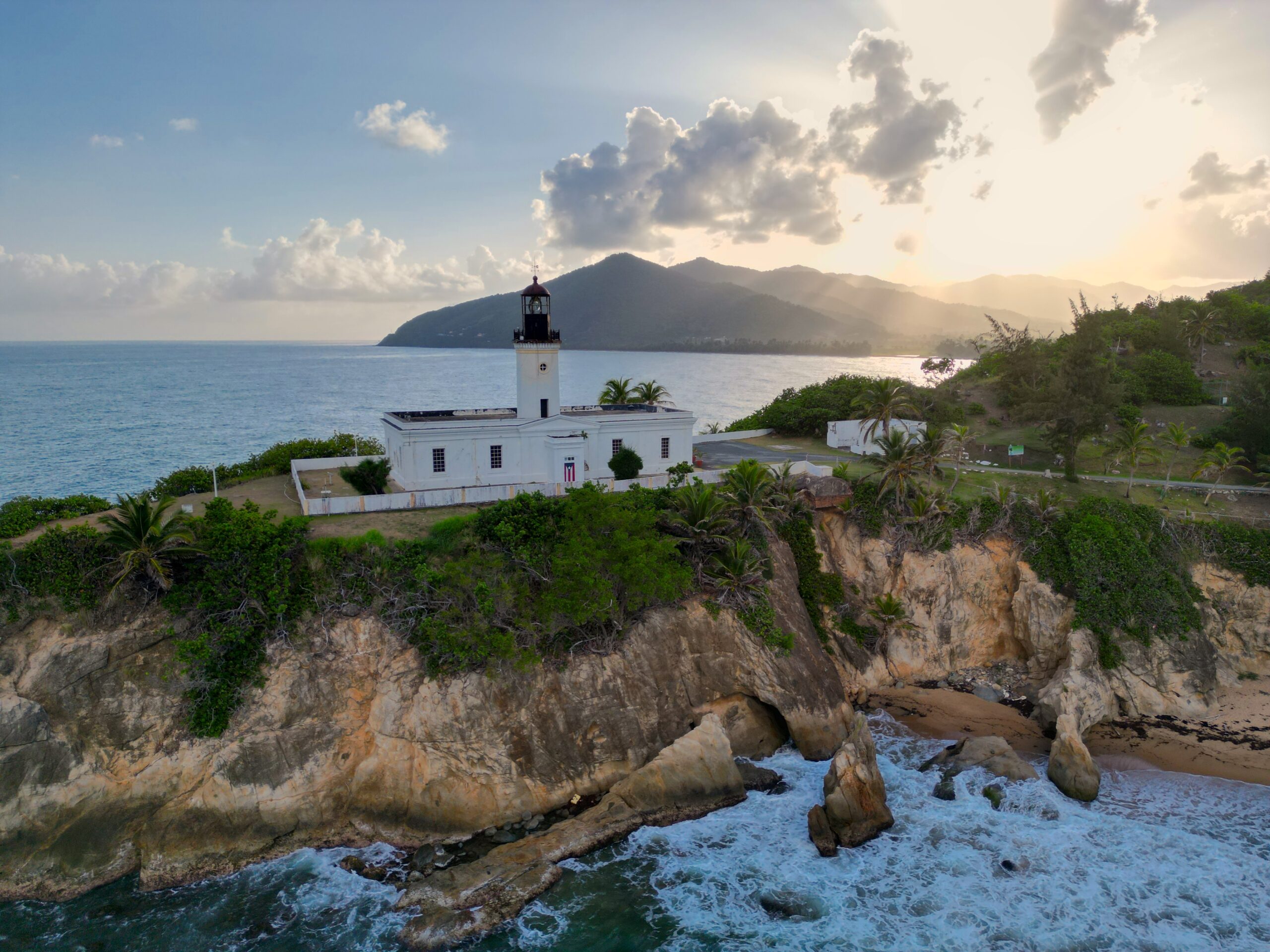
15 min down the road is Punta Tuna Beach. This beach, like others in the area, has the feeling of a virgin coastline that has been left largely undeveloped. Palm trees and other foliage line the sand, near the shore. The sand is as soft as powder sugar, though an earthy brown tone. The lighthouse perched on a cliff overlooking the beach is picturesque. When I have gone, I was the only person on the beach. The shore break waves can be rough so the signs say not to get in the water.
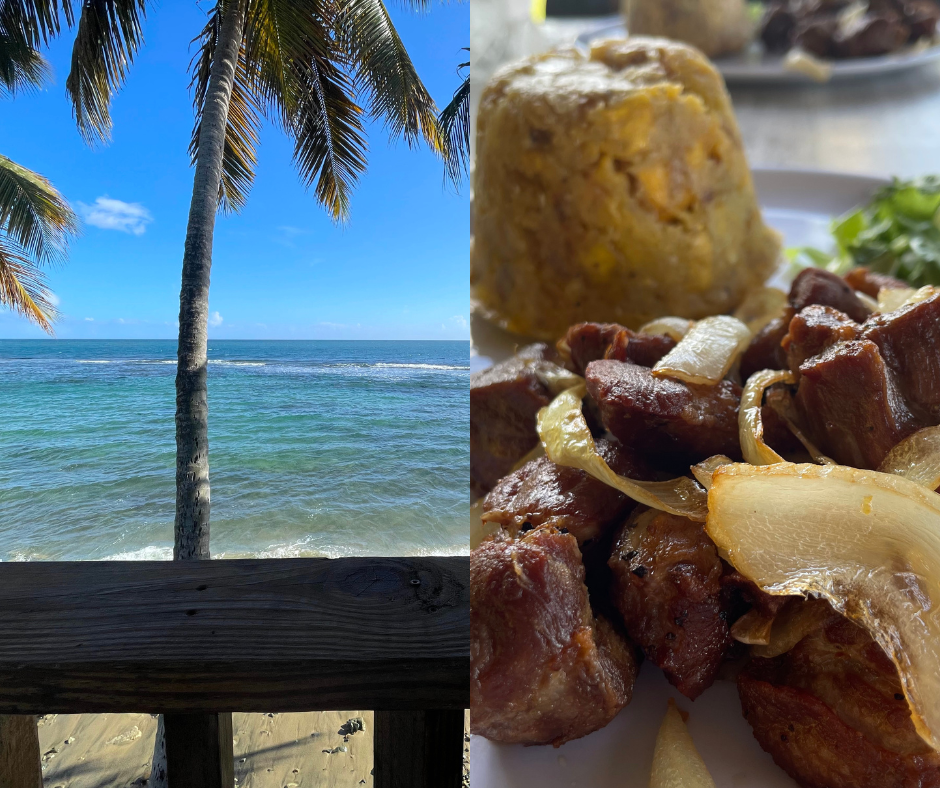
For dinner, drive to this seaside restaurant in Patillas. It can get busy on weekends but is virtually empty on weekdays. There are plenty of tables on the balcony looking out at the Caribbean Sea. I highly recommend watching the sunset here over dinner. I like all the dishes I have tried, most recently I got a simple fried pork and mofongo for $12.00 and quite liked it – it’s the cheapest thing on the menu.
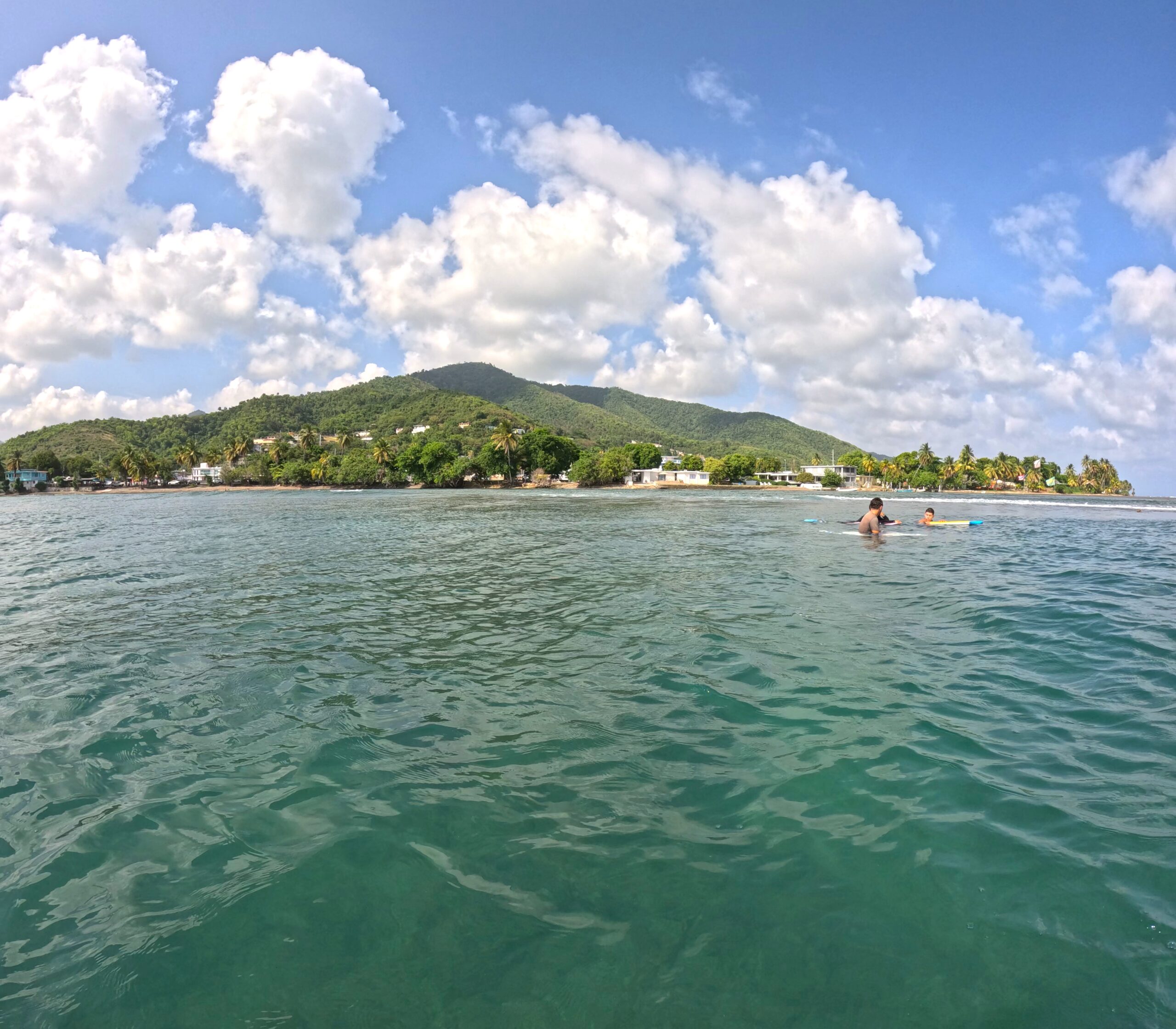
If you are interested in surfing and you have some experience, I really like Inches Beach. It usually has pretty small waves or is altogether flat. When you see 2-3 ft on Surfline, it’s on. Inches is a true reef break. The reef is so shallow that there is even a section sticking out of the water. Wait for waves parallel with the exposed coral. The part you surf over varies in depth, most of it is safe if you fall flat on your back or stomach. There are, however, sections that are extremely shallow and if you fall over them, you are eating coral. I have done this twice but I’ll keep coming back. The view from your board looking to the shore will make you grateful to be alive.
After dinner, drive to Coamo to relax in the only natural hot springs on the island – the Aguas Termales de Coamo. They are open from 6:00am to 9:00pm. The springs are down a long road that looks like you’re going the wrong way. It’s nicely paved, but there’s not much around. When you arrive, park anywhere on the street. As you enter, there will be someone at a booth where you will tell them your name and where you’re visiting from. They’ll let you know the house rules and direct you to a gift shop where you’ll need to pay the entrance fee – five dollars per person. Coamo residents only pay $3.50. You’ll immediately notice that the property is well landscaped and located next to a small stream. Trees, bushes, and flowers cover the property. When I was there, April 2023, many of the trees were bursting with flowers and everything seemed to be in bloom. Butterflies and hummingbirds fly from flower to flower. Hidden speakers play relaxing music like chimes and ambient noise. It’s genuinely very relaxing and really improves the experience compared with the alternative of every party setting up their own speakers to blast Bad Bunny like on every beach. I visited in the morning on a Tuesday. There were 3-5 other older adults that looked like they visited often. I only stayed for about 45 minutes tops in the morning, and then stopped there for another 45min on my way home. While not an attraction to spend all day on, I think the Hot Springs are a worthwhile visit. Despite pavilions providing shade for both pools, I would skip it in the heat of the day.
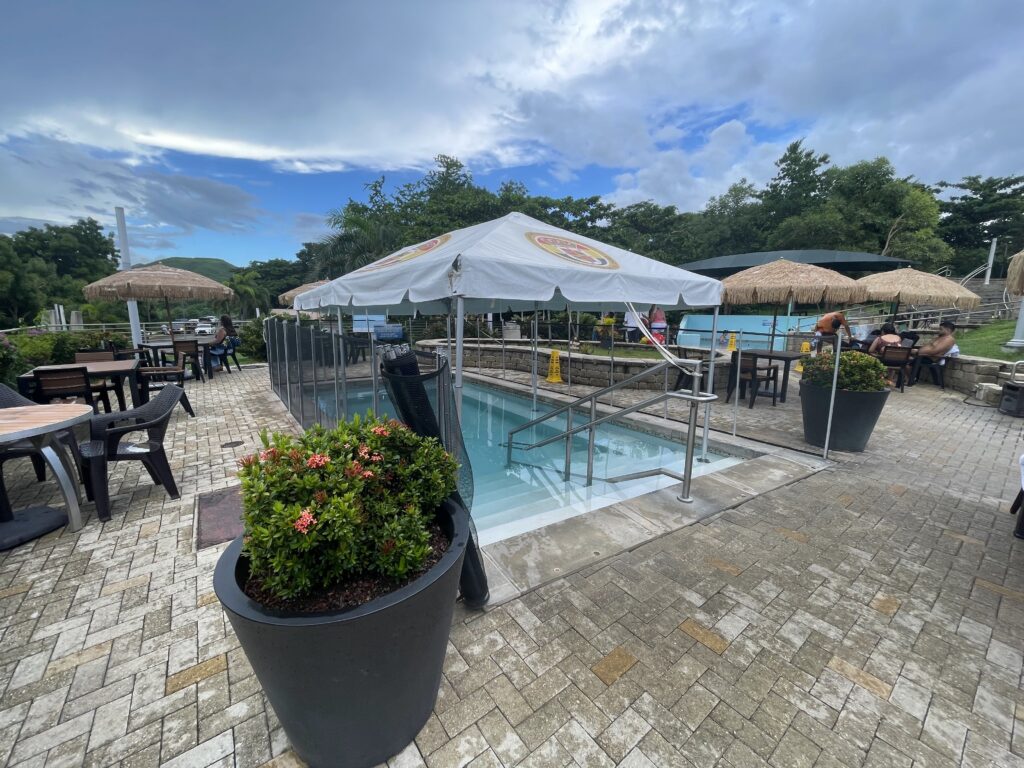
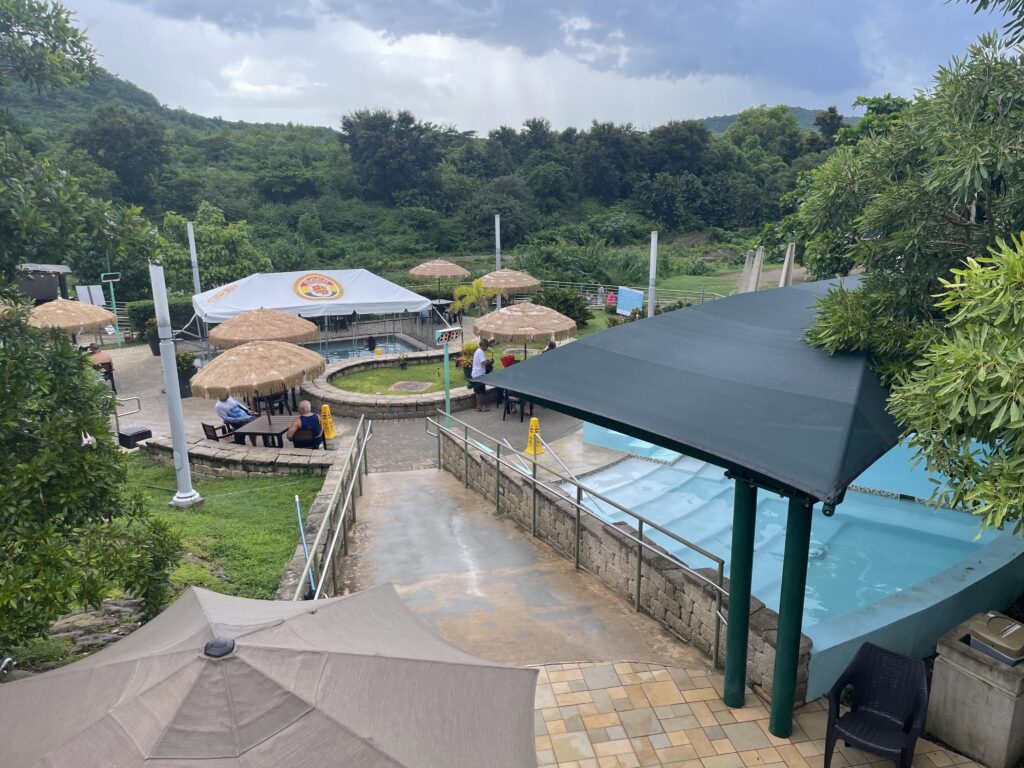
Day 7
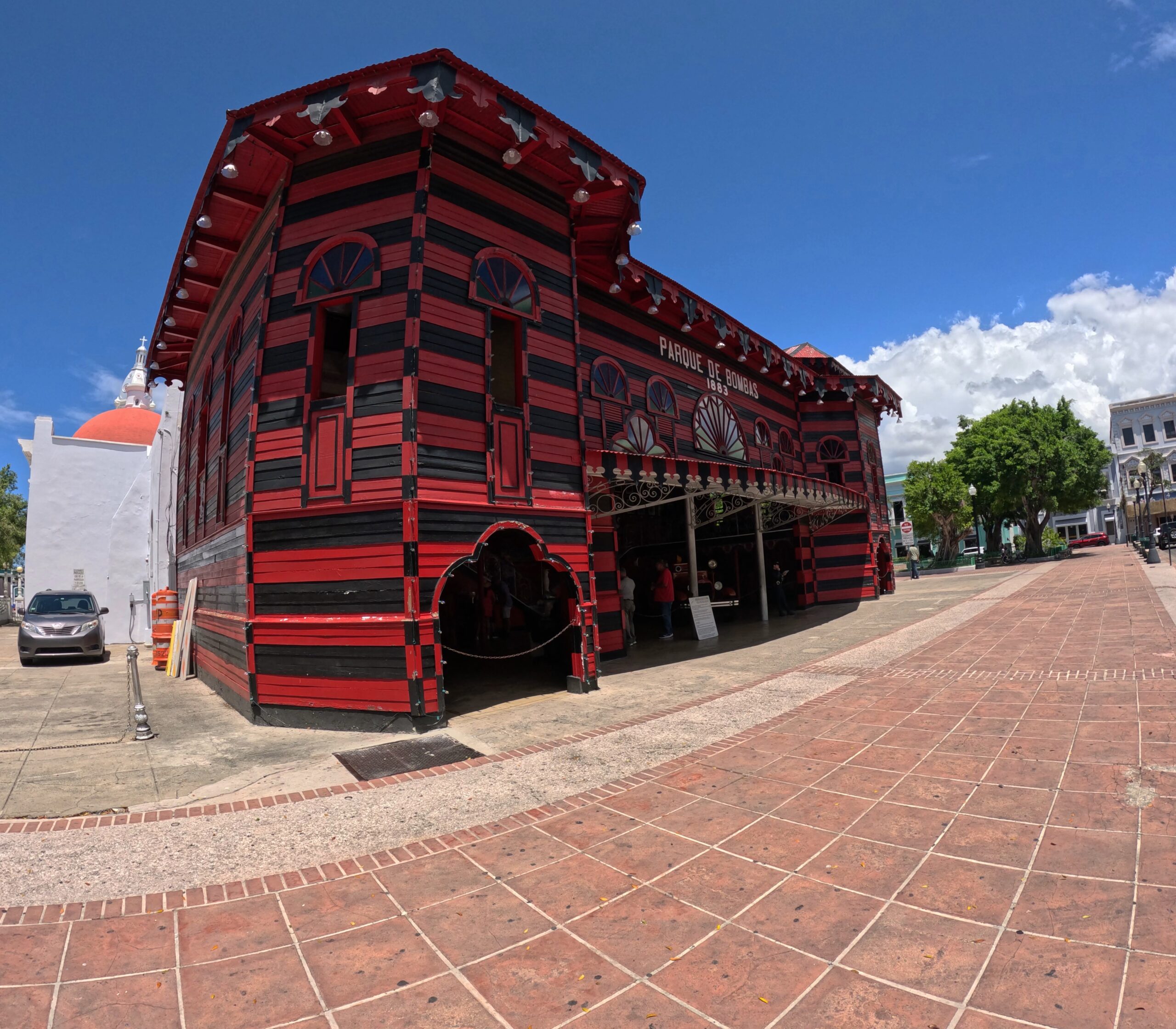
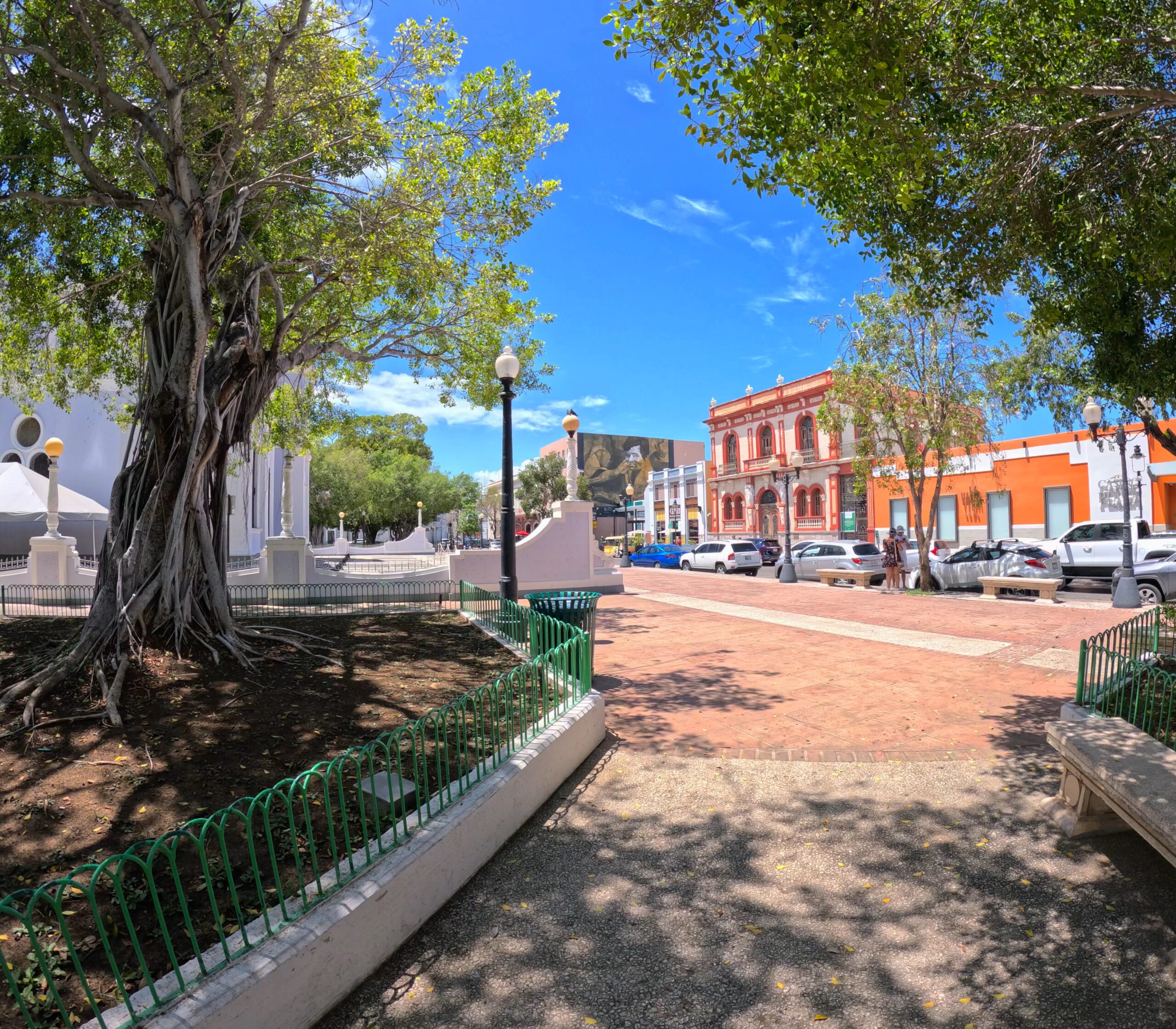
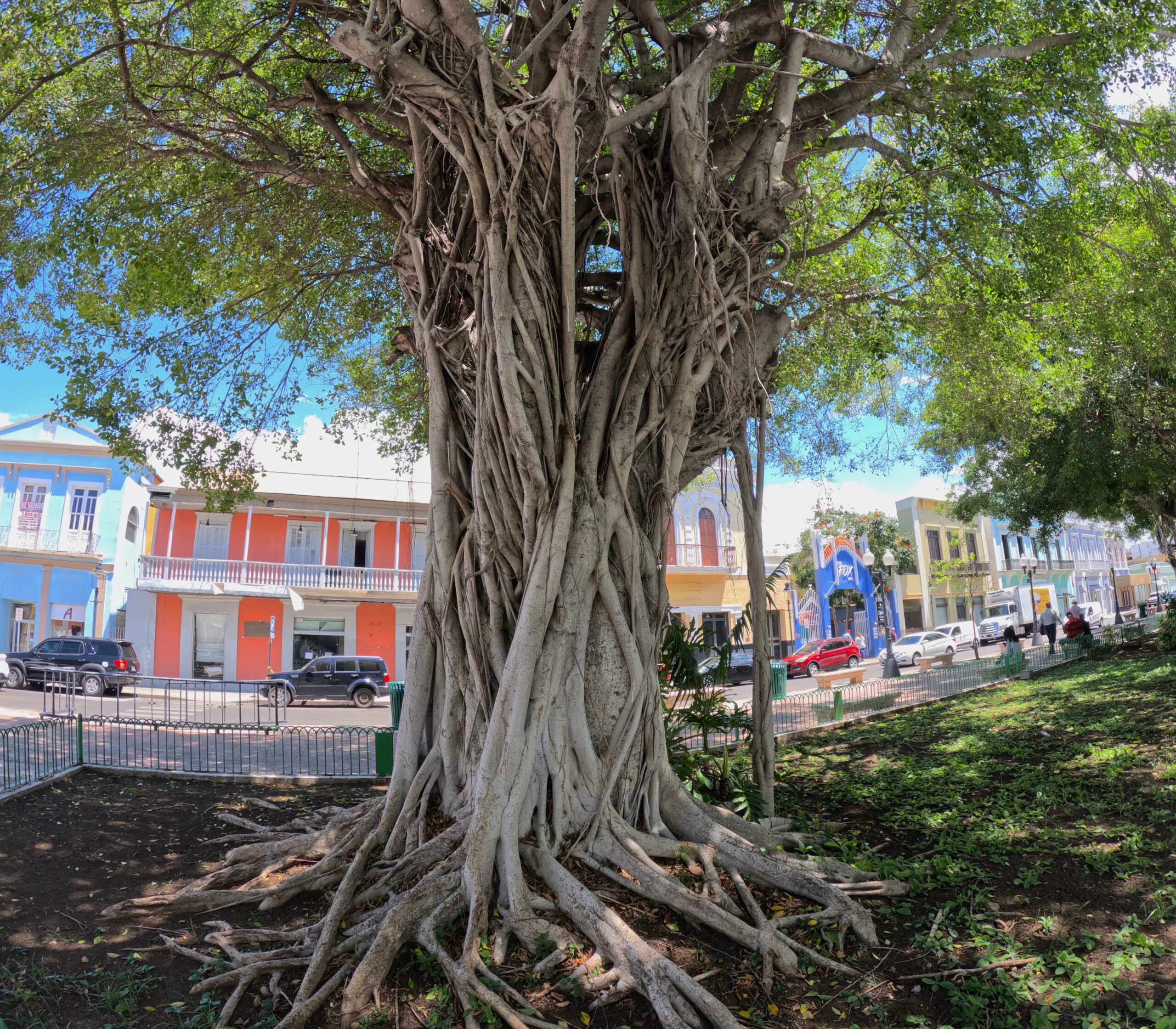
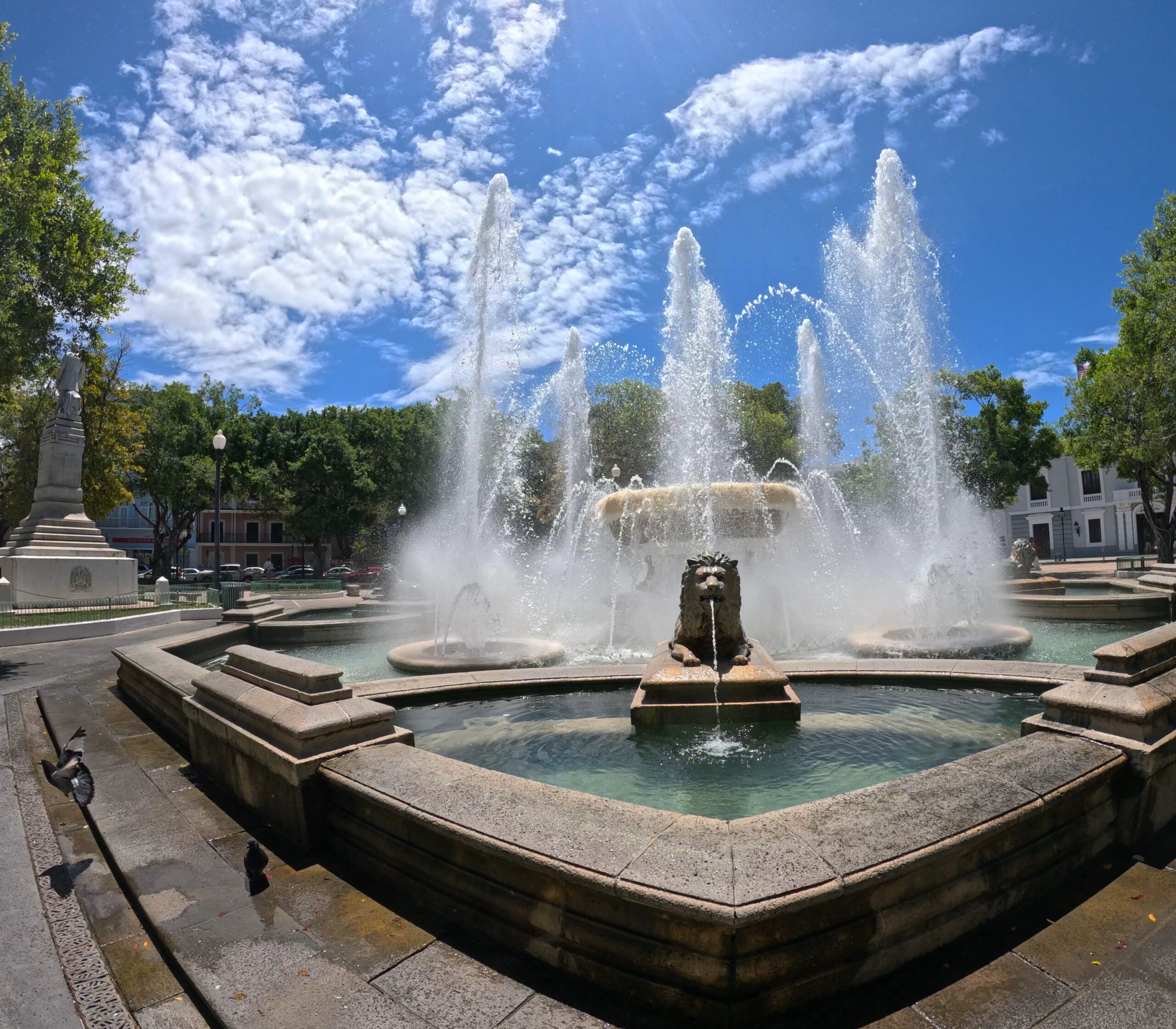
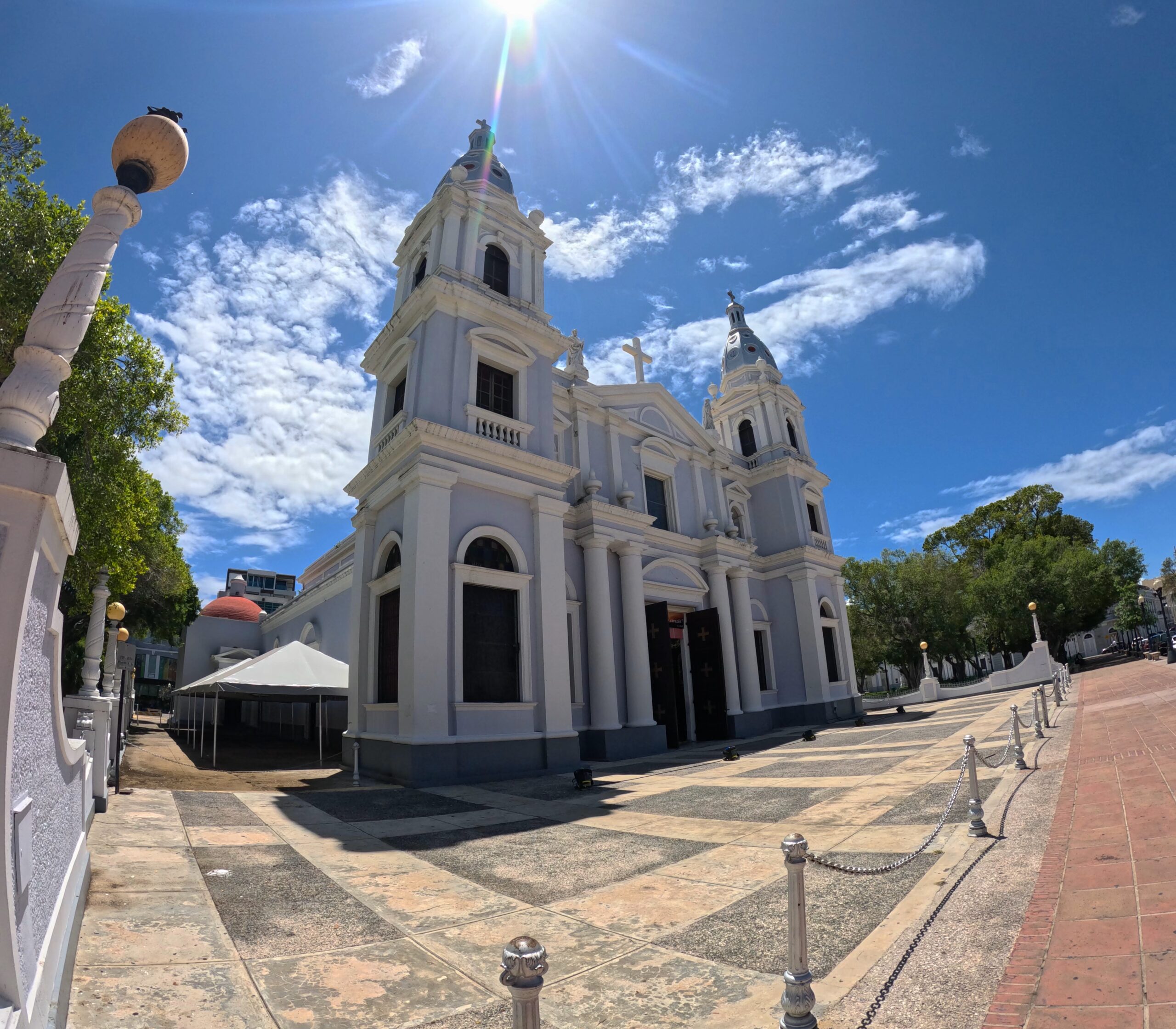
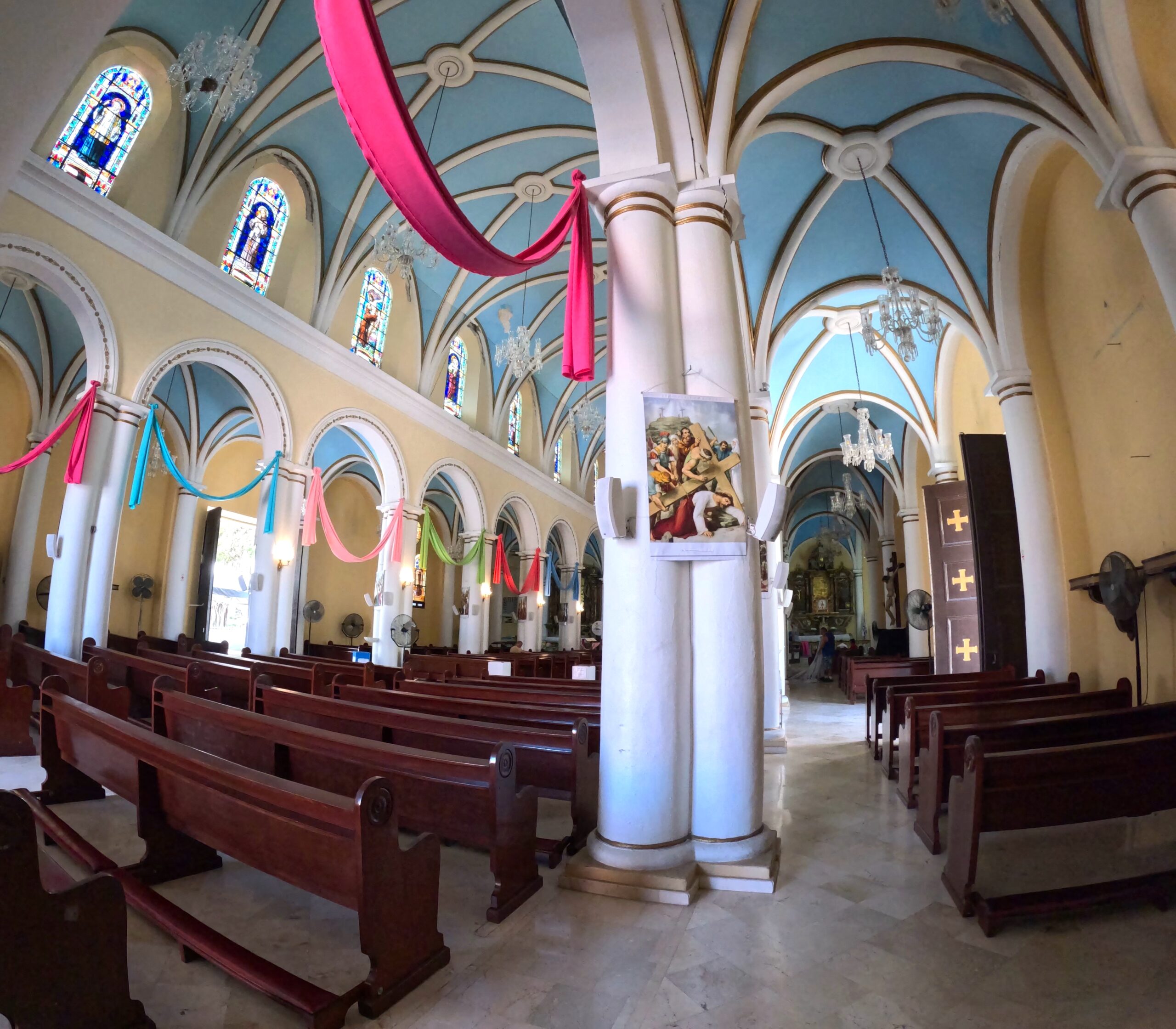
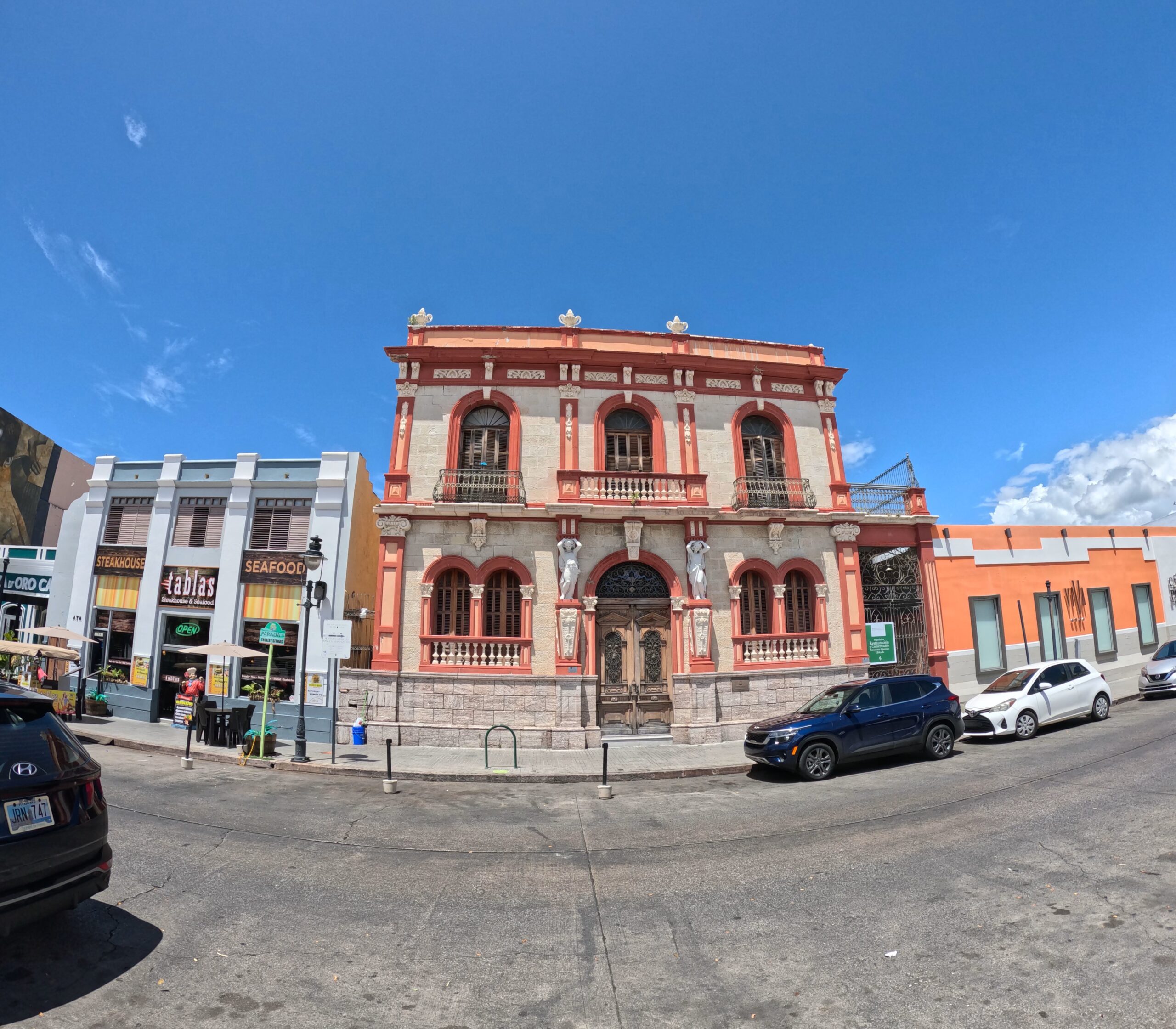
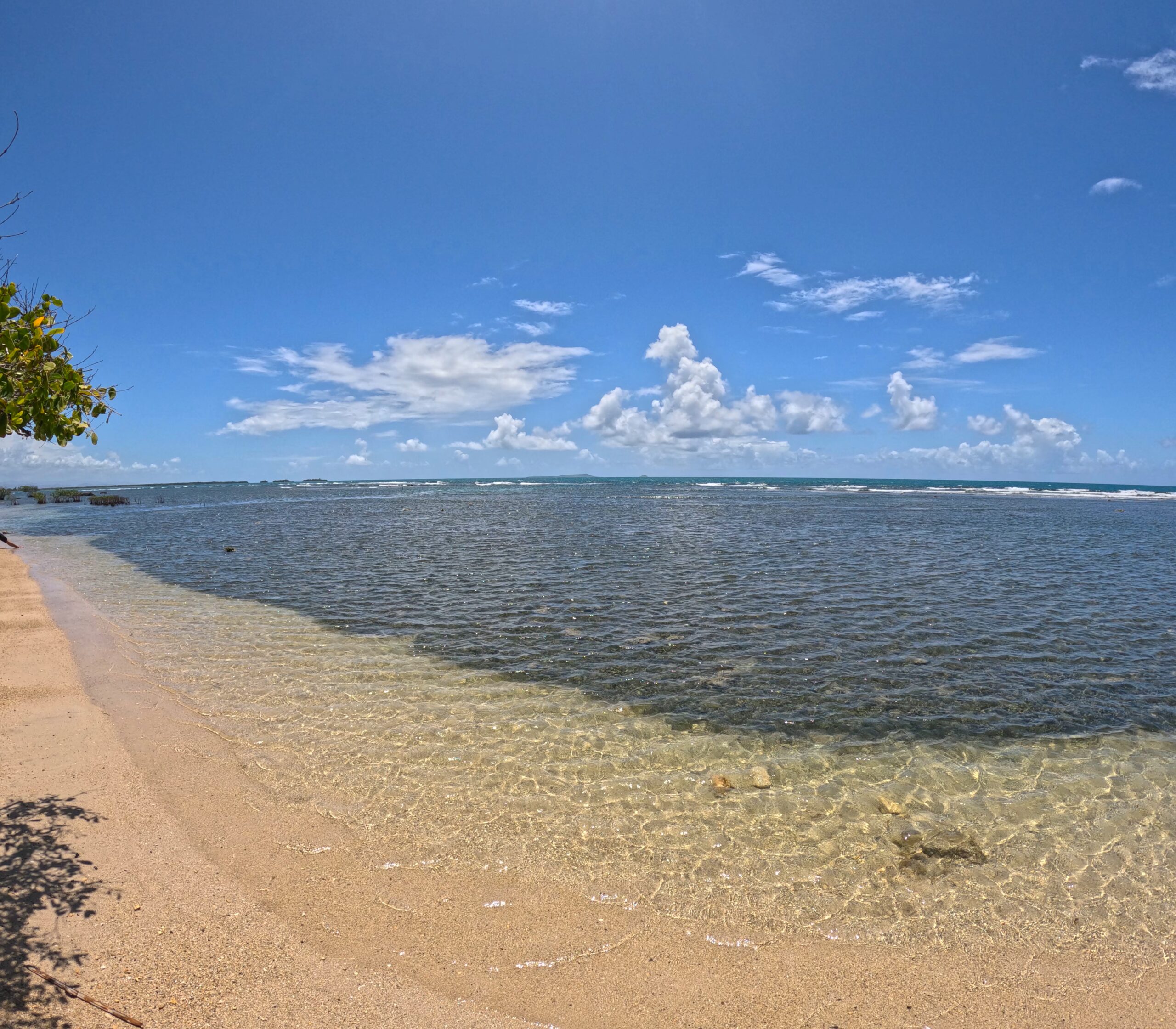
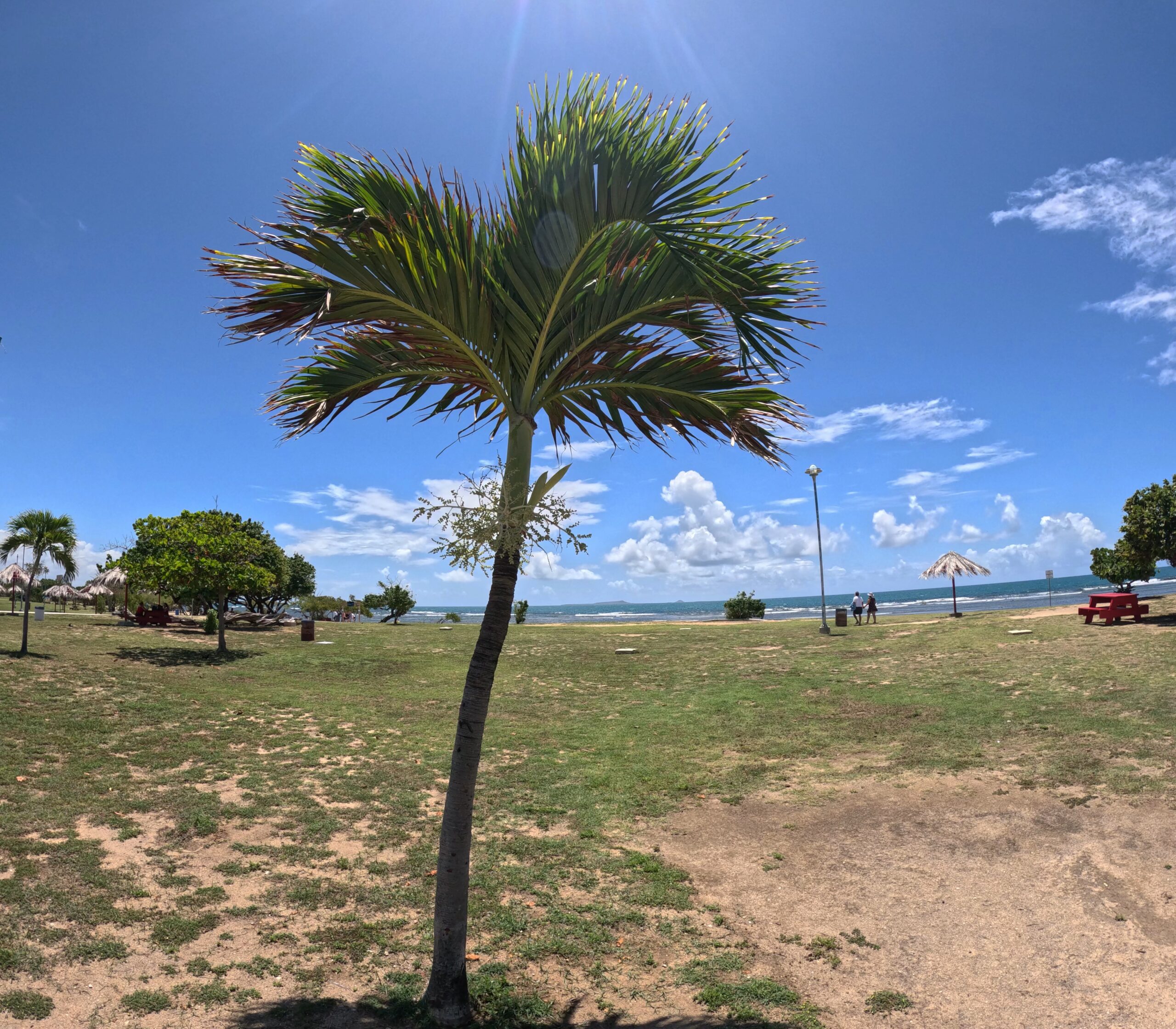
Spend half the day exploring the “jewel of the south”, Ponce. It’s the 2nd largest city on the island. Ponce isn’t my favorite city by any means, but it has some beautiful colonial period buildings to see, as well as one of the best museums on the island, and a quaint plaza with an old fire station turned museum. You may hear about La Guancha, a spot on the coast that’s apparently popular, don’t go. It has a lot of grass next to a sad, boring coastline, a few food trucks serving mediocre fried stuff, and that’s it. Unless there’s something I’m missing there really isn’t much to see.
Grab food in Ponce where you’ll have the most options. If you’re looking for something cheap to fund this very long and amazing trip you are on, try Viktor Pollo. I think it’s good and the price is great. It wins best value restaurant award in my book.
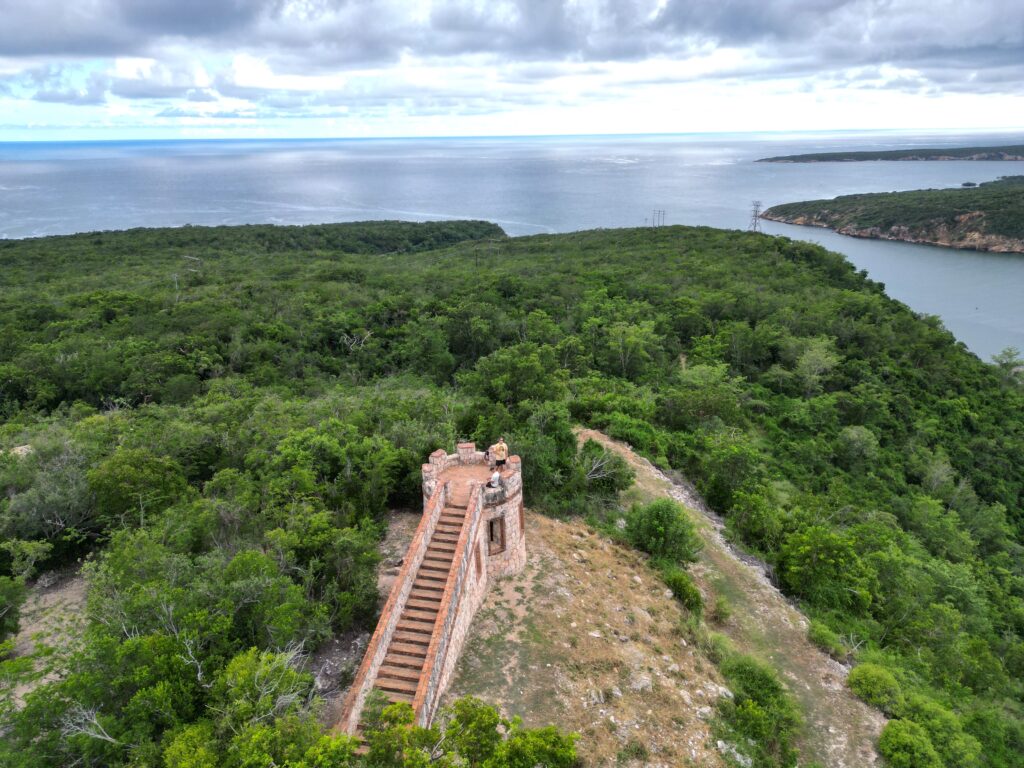
To get to this small lookout tower in Guánica, you’ll need to drive 33 min to this trailhead. If you follow the other pin on Google Maps it will take you the wrong way – into the state forest. This is a short and mild hike taking about 20min to reach the top of the hill. When you arrive at the top you’ll be rewarded with an excellent view of the Guánica Bay and the Caribbean Sea. There are some beaches worth visiting nearby.
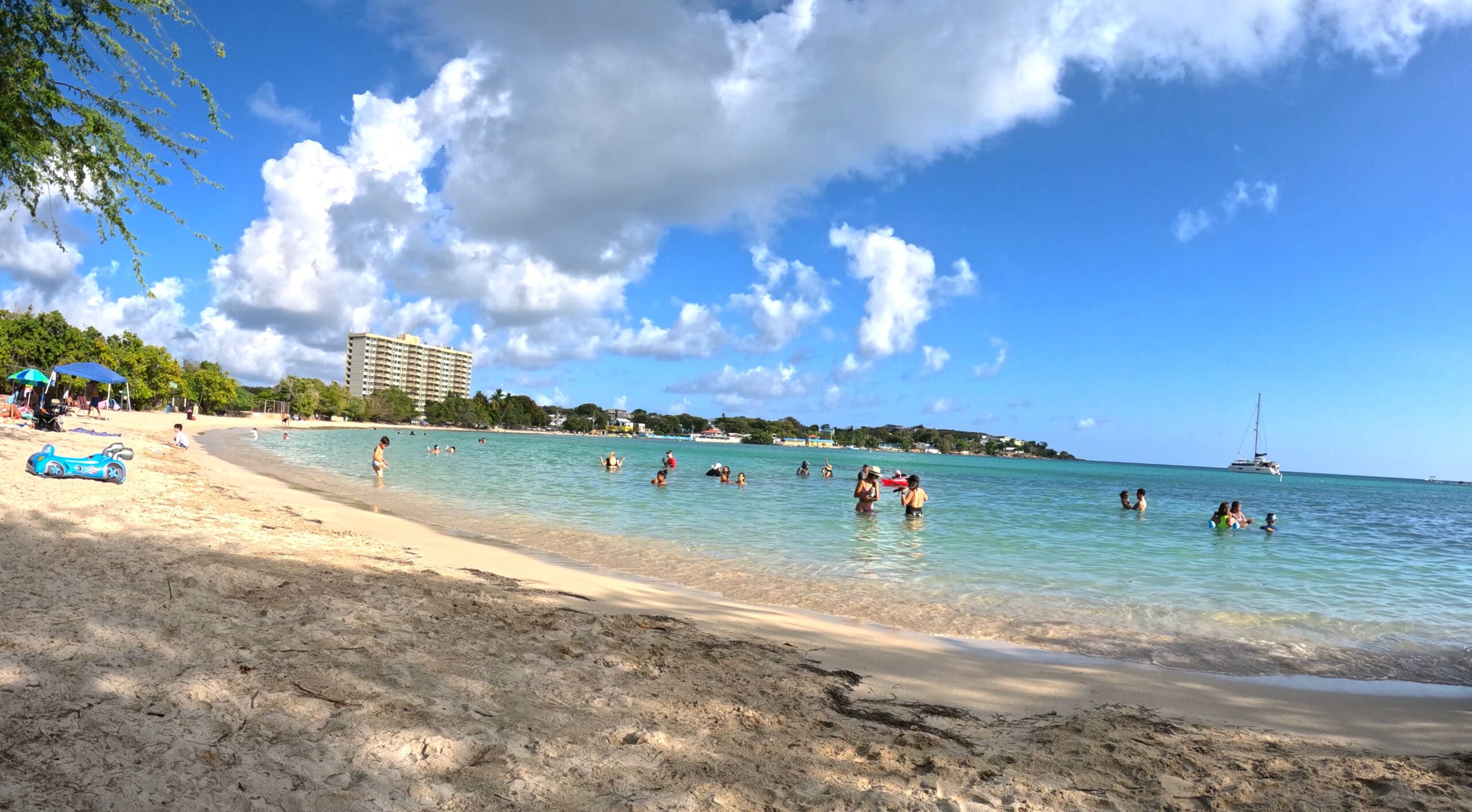
Next, cool off on this white-sand beach on the Caribbean Sea. The surrounding apartment buildings and chain-link fences make for an ugly backdrop to an otherwise pretty beach. Most beachgoers congregate around the entrance to the beach which offers the only shade. Head towards the middle to ditch the crowd, but you’ll find less shade there. Floating in the water you notice that the Caribbean Sea is a few degrees warmer than the Atlantic Ocean.
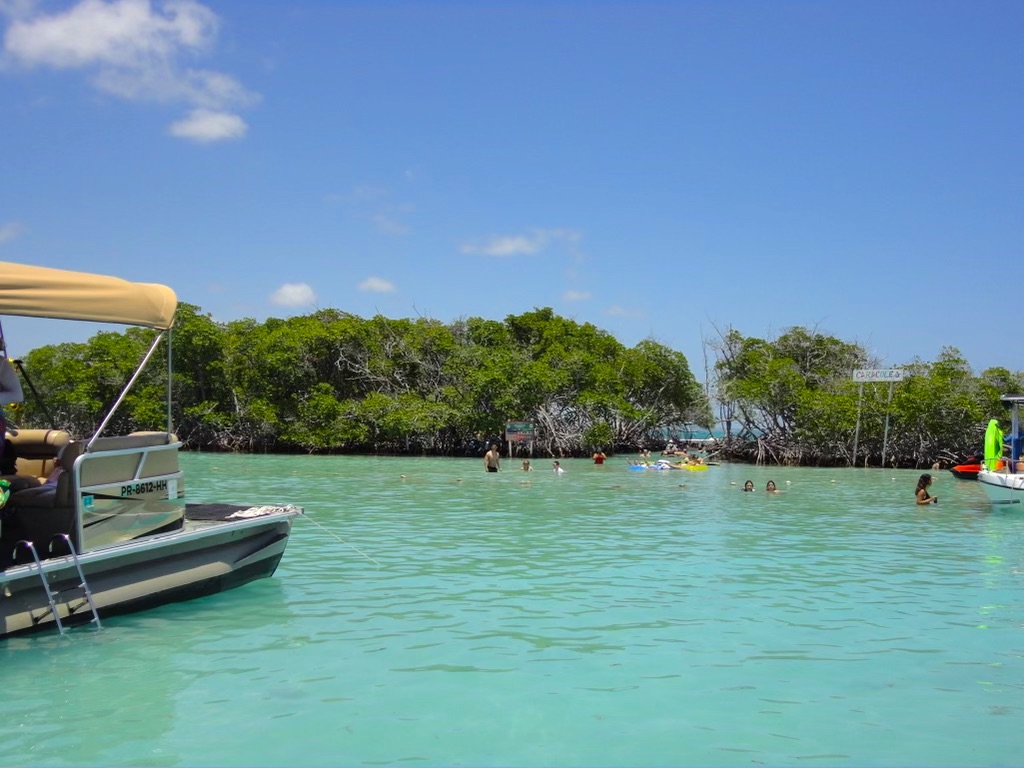
La Parguera is a small fishing village located on the southwestern coast of Puerto Rico, in the municipality of Lajas. Sharing the same name, La Parguera is a nature reserve comprised of a string of mangrove islands located off the southwest coast of Puerto Rico.
During the day, visitors can take a boat tour of the bay and enjoy the clear waters and abundant marine life. The bay is home to many mangroves, which grow on shallow sandbars to provide important habitat for marine life.
At night, visitors can take a boat tour of the bioluminescent bay, where tiny microorganisms in the water light up, creating a spectacular glowing effect. The bioluminescence is particularly vivid during the new moon phase, when the sky is at its darkest.
If you happen to be here while the moon is close to new, give it a shot! Unlike the other bio bays, this one is a boat ride instead of renting a kayak. Stay the night in the town or further west, that’s where we’re headed tomorrow.
Day 8
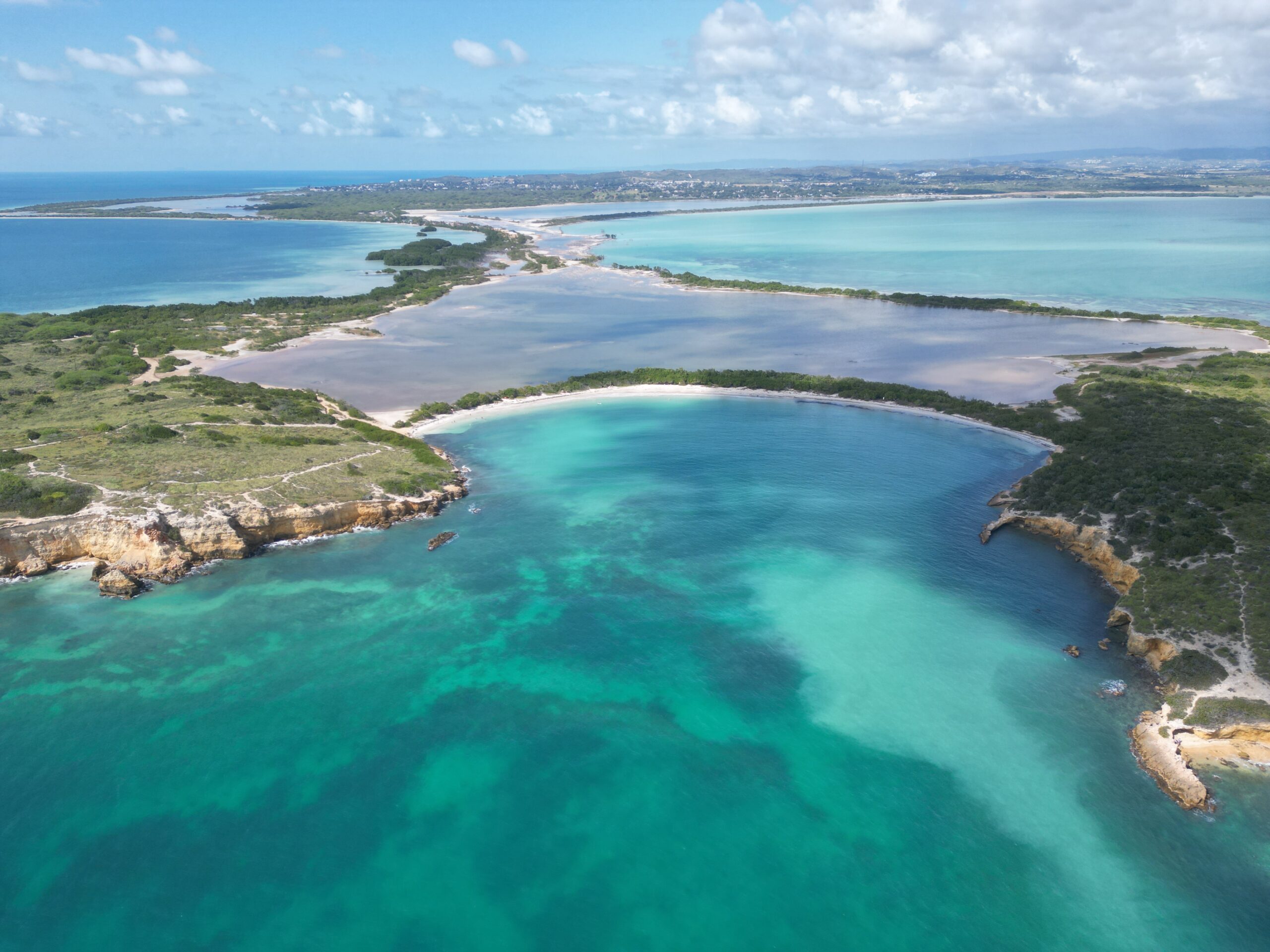
After breakfast, drive (45 min from La Parguera) to a tiny Y-shaped peninsula at the southwestern most point of the island. “Dirty Beach” also known as La Playuela, is in a dramatic location. It is important to bring plenty of water because it gets very hot here. The white sand beach is surrounded by cliffs and cacti, giving it a unique and rustic charm. Find a spot in the narrow line of trees between the beach and the lagoon. More often than not there has been a lot of seaweed when I’ve visited. Before you head to the beach, consider hiking the Los Morillos trail while it’s still relatively cool.
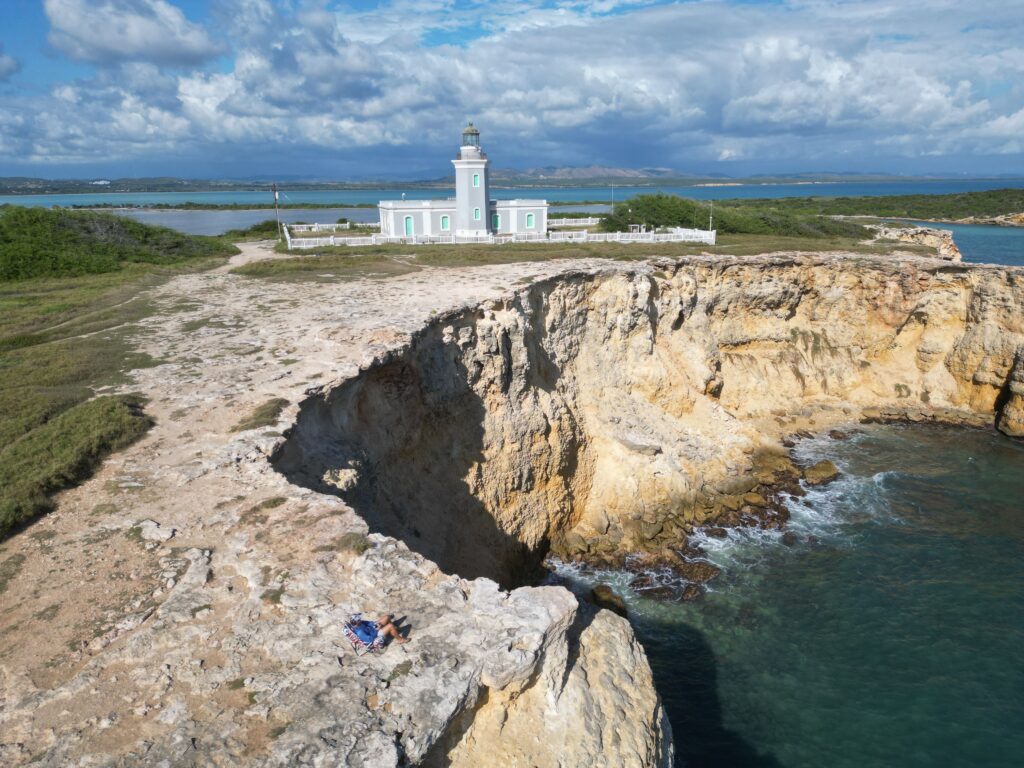
The road to get to this trailhead passes through the Cabo Rojo National Wildlife Refuge and is not well maintained. A car with some clearance will come in handy. Park here, to the right of the gate is the trailhead for the full scenic loop. The trail winds along the cliffs of this “Y” shaped peninsula ornamented with scrubby desert flora. A notable stop is at the rock bridge. Next you’ll arrive at the Morrillos Lighthouse (pictured). Once you’re done taking in the views, you can descend to Sucia Beach to cool off in the turquoise water, assuming there isn’t too much seaweed. There is no shade and it gets extremely hot so be prepared. If you want to take a shorter walk directly to the lighthouse, park here.
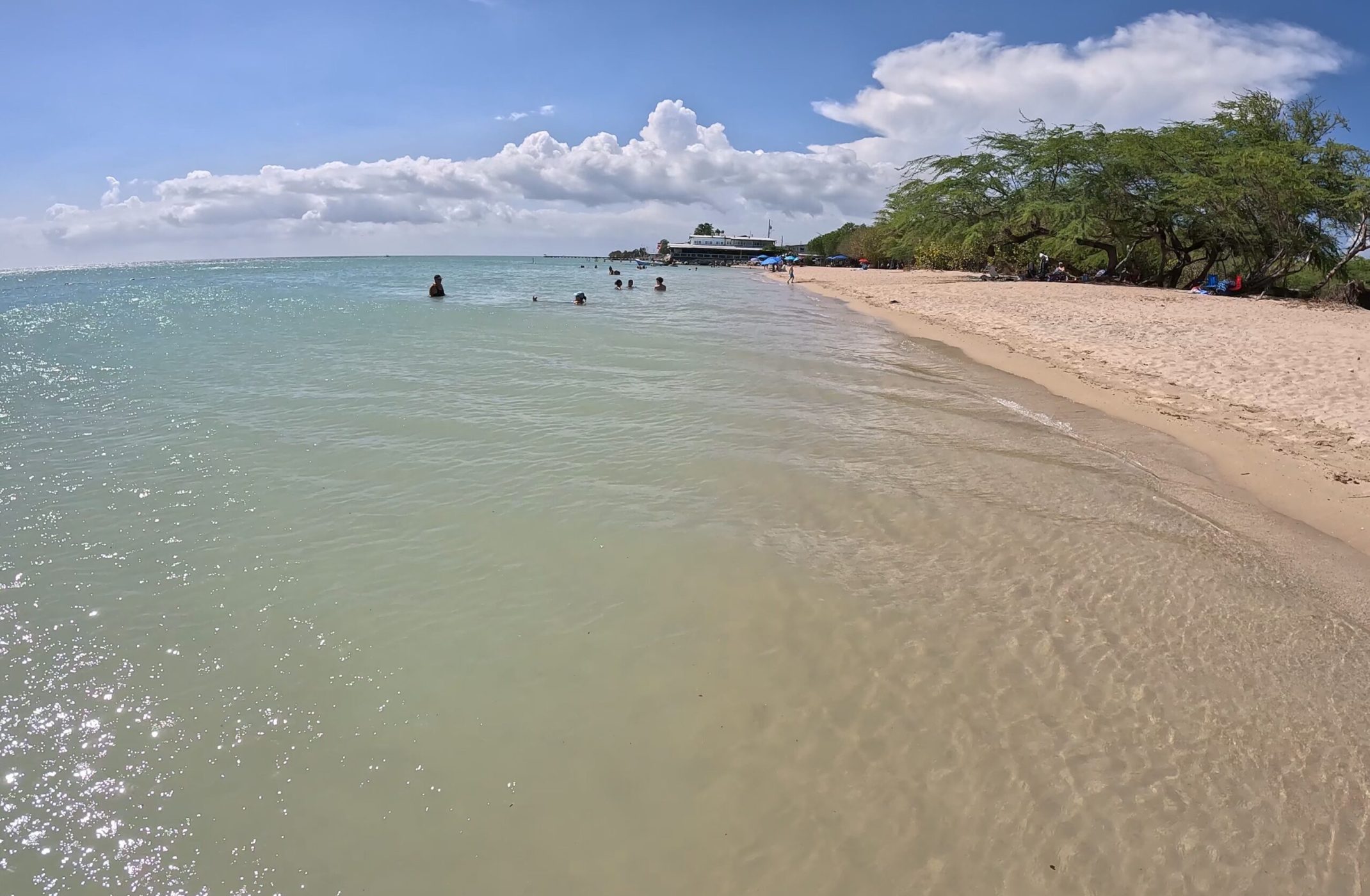
Drive 24 min to El Combate Beach, located in the southwest corner or the island. Like the rest of the region, it is very hot. Park at the end of a road in front of apartments and walk down a dirt path with little to no shade. There are some trees where you can find shade, though some are a little sparse. I have not seen the water extremely clear here but it’s totally possible I have not caught it on the right day.
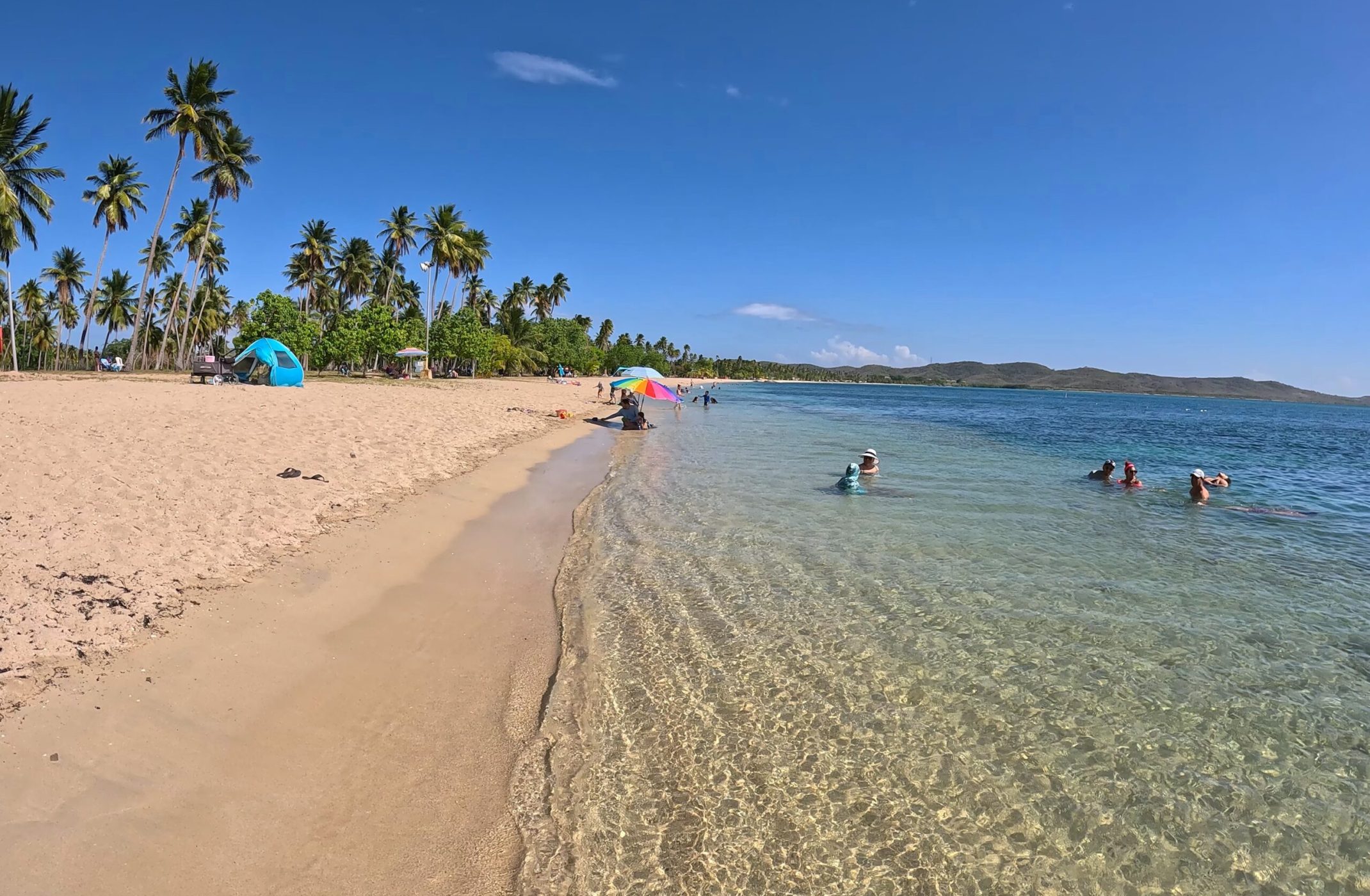
Continue north for 20 min to Boquerón. Park on the road outside some condos and walk across a large field of palm trees to get to the sand. This is a huge beach but most people congregate closer to the entrance. You may see a few catamarans at harbor in this large bay. There are a ton of cabins along the beach, from what I can tell they are owned by a government entity that has been incapable of rehabilitating them after Hurricane Maria.
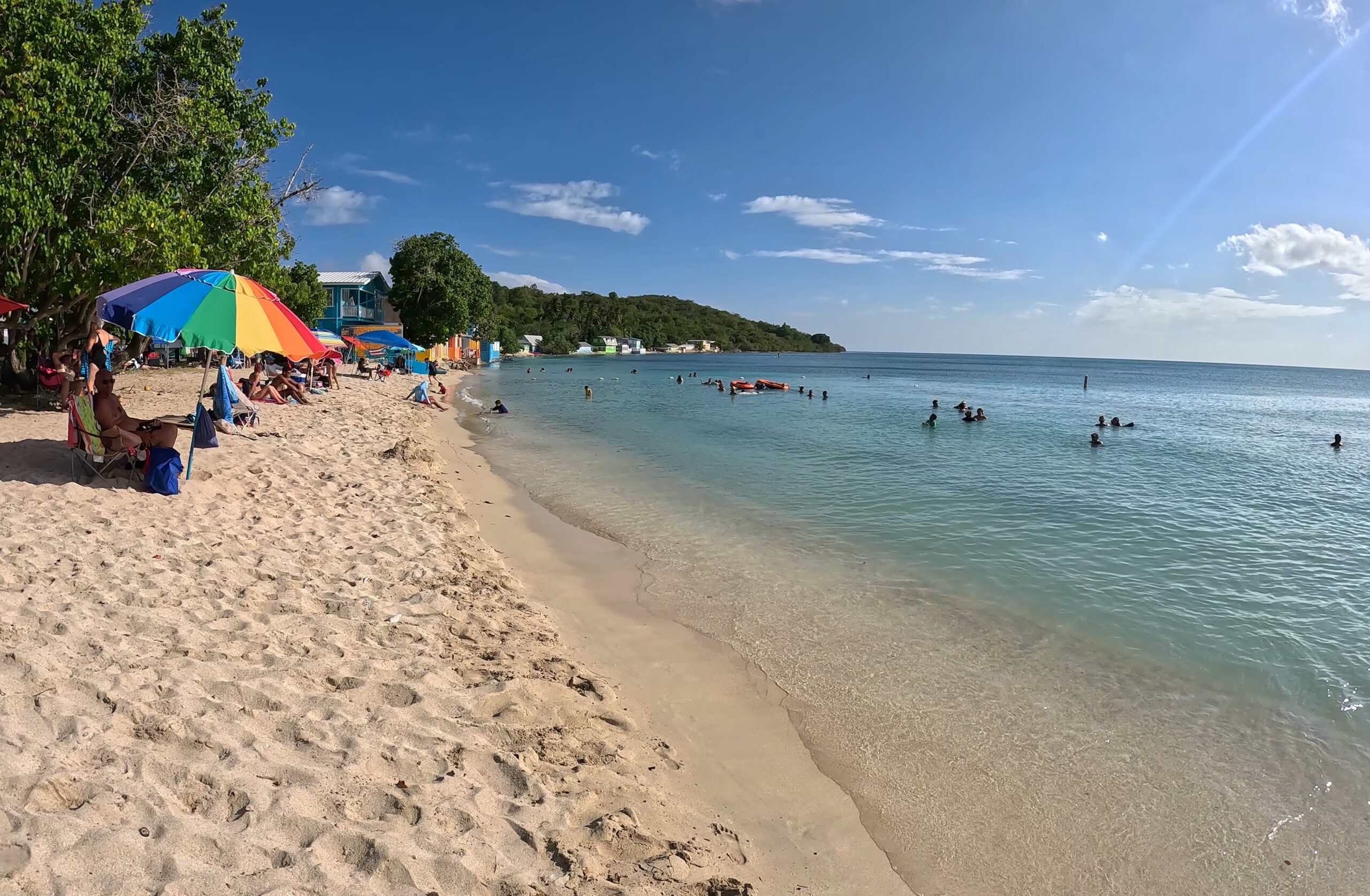
Follow the coast north for 13 min to Buyé Beach. Although this is a local favorite, I am not the biggest fan. It is very crowded, the parking is difficult, and the water is never very clear when I visit. The reason I include it is because I have seen videos online of it being crystal clear so I guess you have to get lucky. There is a good amount of shade available and apparently the beach gets better the further you go from the entrance. There is a restaurant right at the entrance and a coin operated shower.
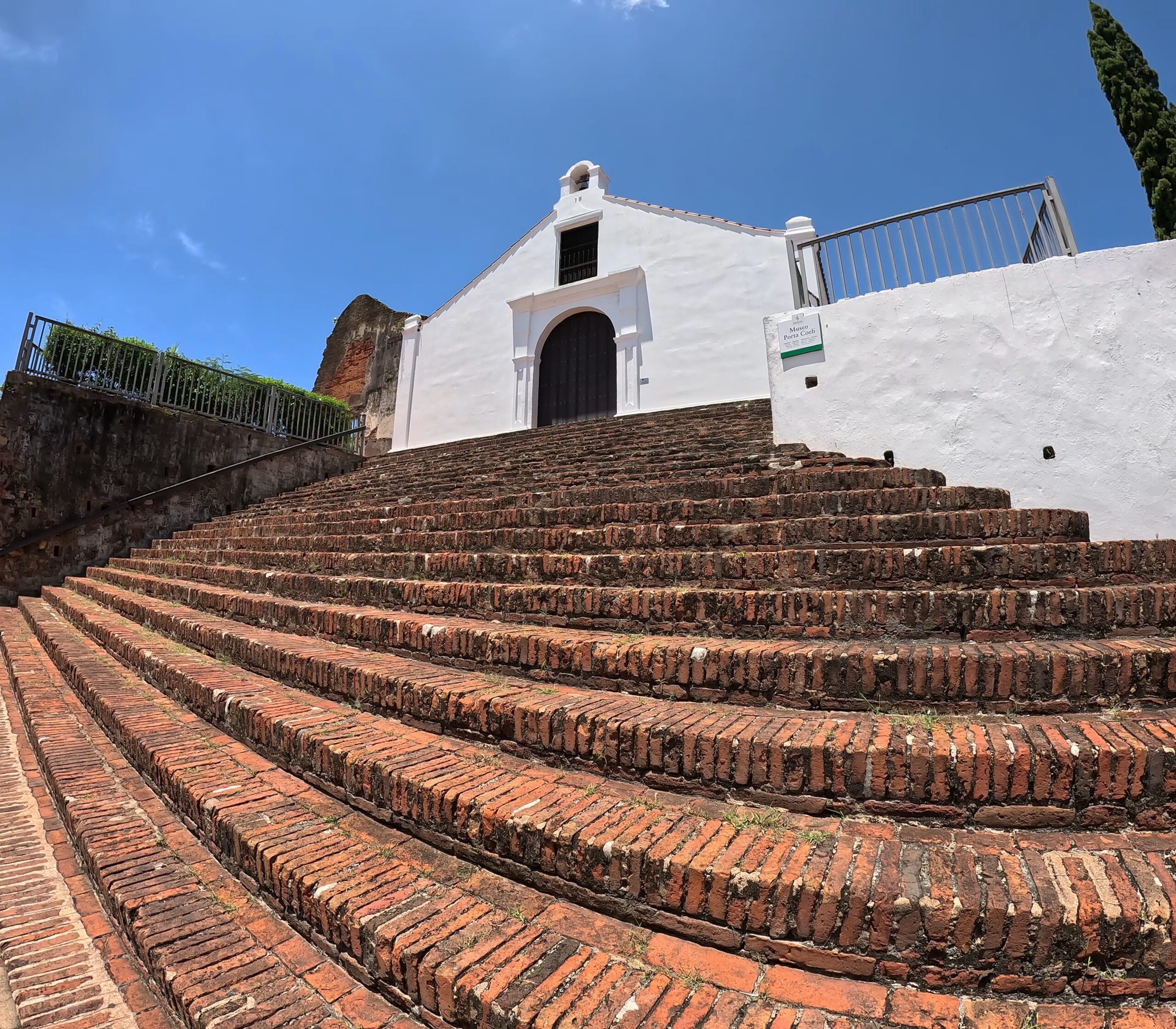
Drive inland for 30 min to the historic town of San Germán. This white-stuccoed church on a hill facing the plaza stands out in San Germán’s historic district. A convent originally built in 1609 was reconstructed in the 18th century and a church was built next to it. Both were more recently restored. The church now houses the Religious Art Museum. The historic district is full of beautiful historic buildings and is worth exploring for a couple of hours. Spend the night in San Germán or the nearby Mayagüez.
Day 9
Today you’ll be visiting the city that has the best surfing and snorkeling on the island. If neither surfing nor snorkeling interest you, consider heading to the south west corner of the island to visit the beaches there instead. Rincón is a surf town with a very different vibe from anywhere else you’ll find on the island. For a more in-depth guide, check out my Rincón Itinerary. Grab breakfast at a bakery and drive 30 min to Rincón.
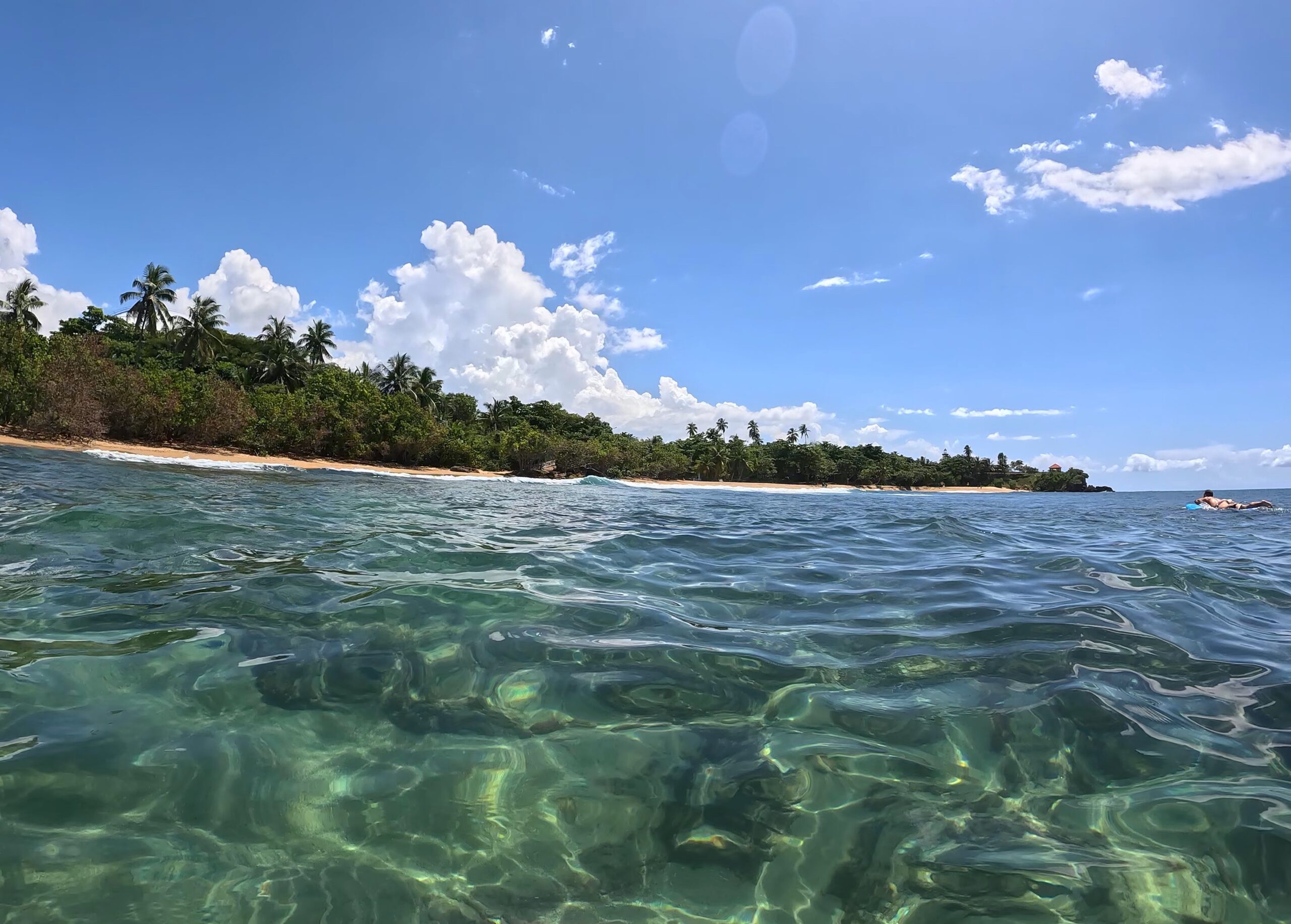
Domes Beach should be your first stop if you have any interest in surfing. It’s considered one of the best surf spot on the island. From my experience, it’s the best. I had the best surf day of my life here. The waves are clean and consistent, the water is clear, the ride time for each wave is long. It can get get crowded, but you can catch it on a day with very few people. If this were not one of the furthest beaches from my house, I would be here all the time. If you are not surfing, check out Sandy Beach instead.
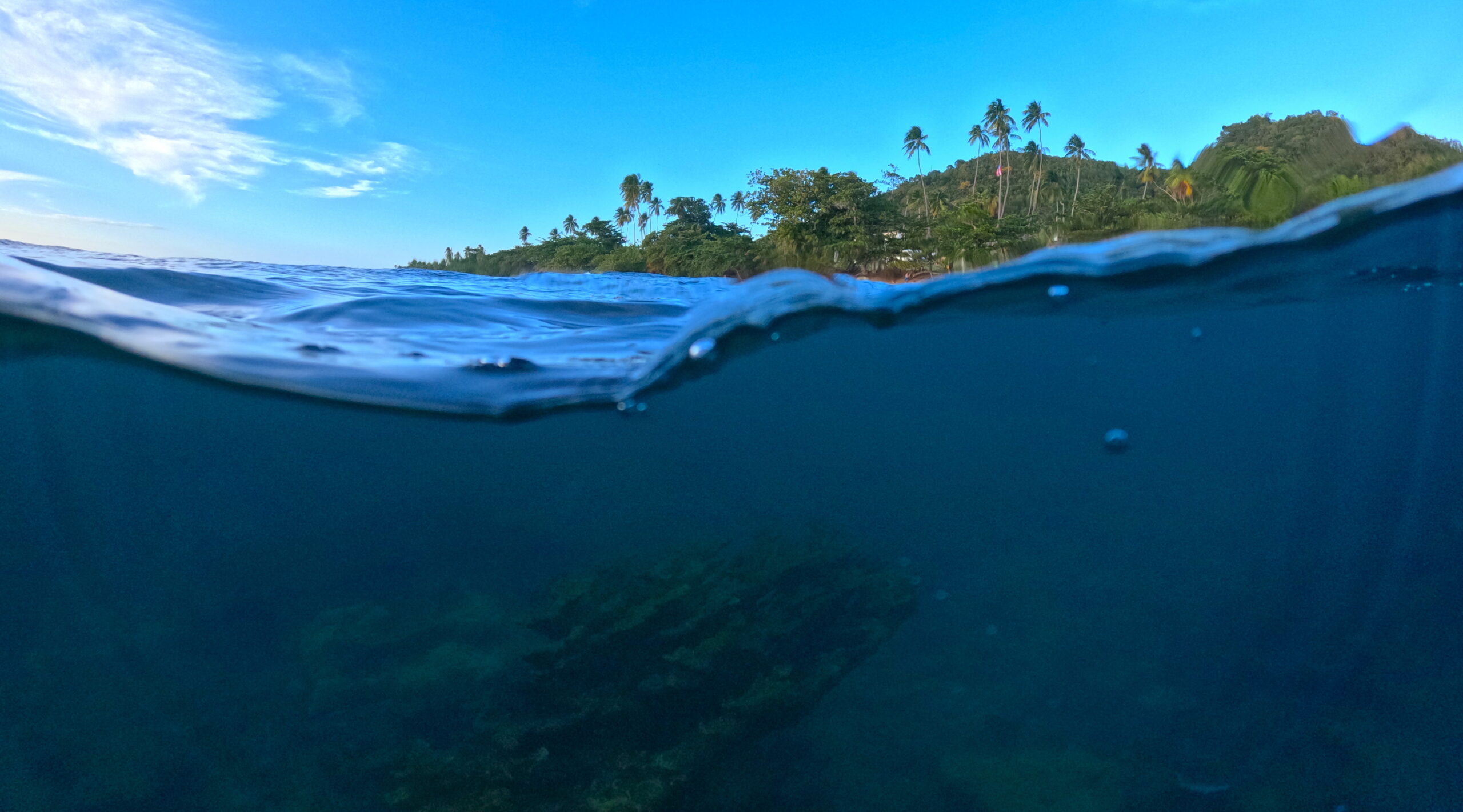
Drive 4 min down the road. You’ll turn down an unassuming farm road where you’ll find a beach with one of the healthiest coral reefs on the island. There isn’t a lot of diversity in coral species, what makes Steps Beach special is the sheer quantity of living elkhorn coral. Small tropical fish swim through the antler-like limbs they call home. It is important to go when the surf is calm because the swell clouds the water and can drag you around, risking a collision with the coral. The shore is rocky, look for an easier entrance into the water on the left.
Make a short drive to the town to check out Rincón’s main plaza. On Saturday mornings you’ll find a small farmers market and Thursday evenings an artisan market.
Walk to my favorite bookstore on the island: El Coquí Bookstore. On my first visit I picked up a battered but gorgeous 1956 edition of Jules Verne’s 20,000 Leagues Under The Sea.
Further down the street is the Rincón Bakery. If you like cream cheese try the local pastry – “quesito” from this bakery. It’s the best quesito I’ve tried so far.
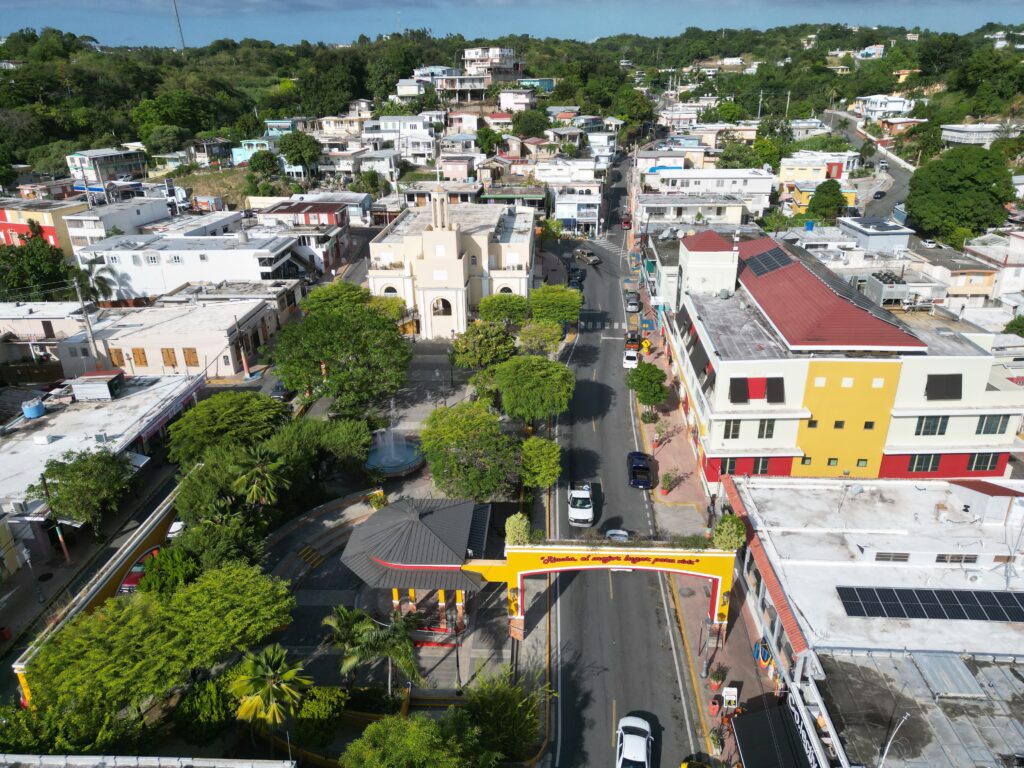
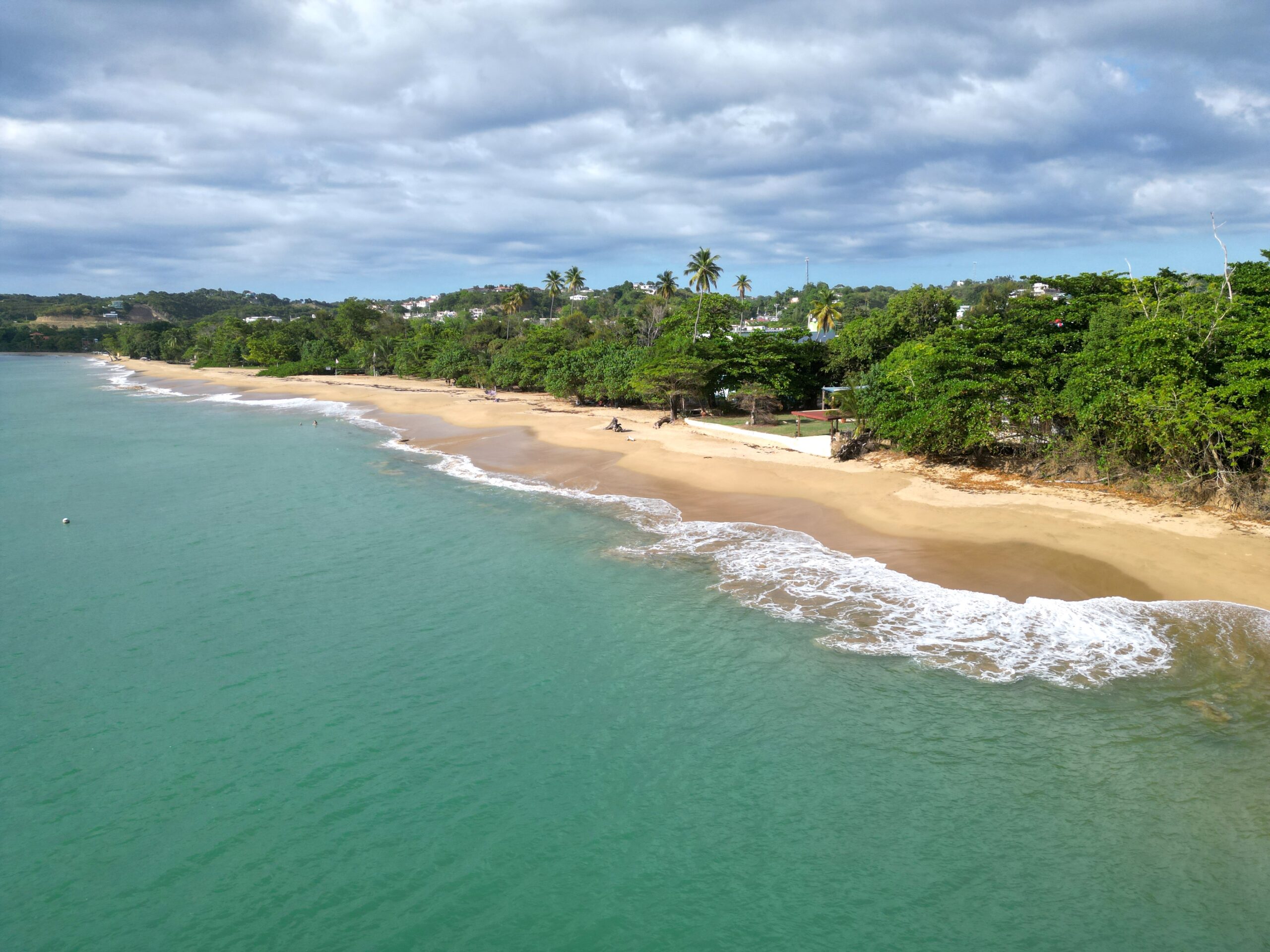
If you want to lounge in warm, shallow water, check out this beach. It’s a sandy beach a short walk away from Rincón’s main plaza. There is shade back in the trees, further from the water, but beware of sand flies. Small waves break on the sand. There is a beach volleyball net set up near the tree line. If you are looking for a beach in Rincón to lounge in the water, this is it.
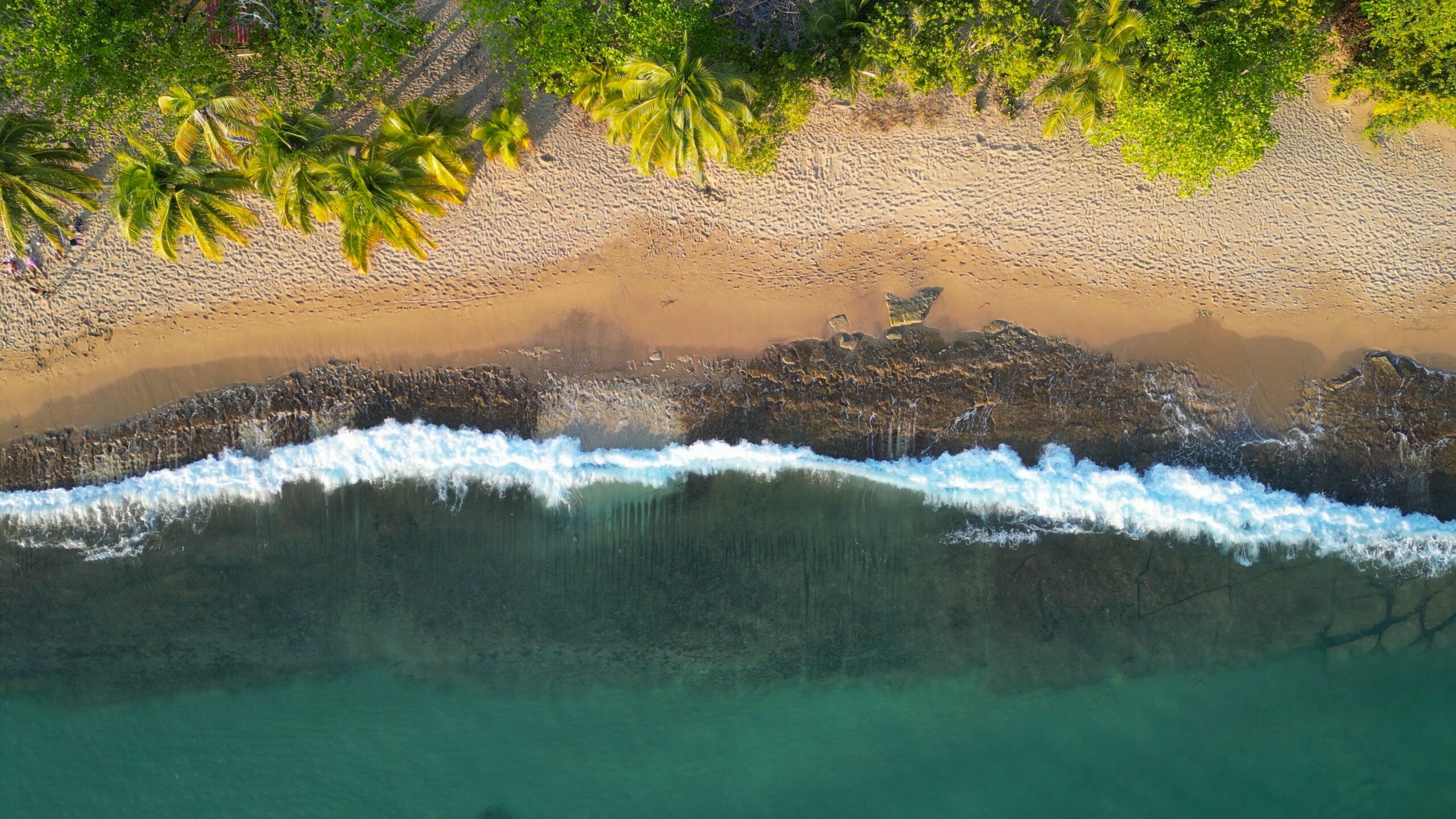
Nearby is a beach I often find myself visiting for sunset on the west side of the island. The water is calm and the bottom is sandy once you get past the rocky section that rings the shoreline. There is a bathroom at the bar right next to the beach and a lot of parking here as this is a boat launch. They say the best sunsets on the island go down in Rincón so no matter where you find yourself, make sure you don’t miss it!
Get dinner at Gylro – a greek restaurant with decent food. We liked the dishes we tried: Hummus + Pita Bread and a lamb gyro. There aren’t many good food options in Rincón, this is one of the best. The decor is well done with an impressive mural covering the walls and the waitress was very attentive.
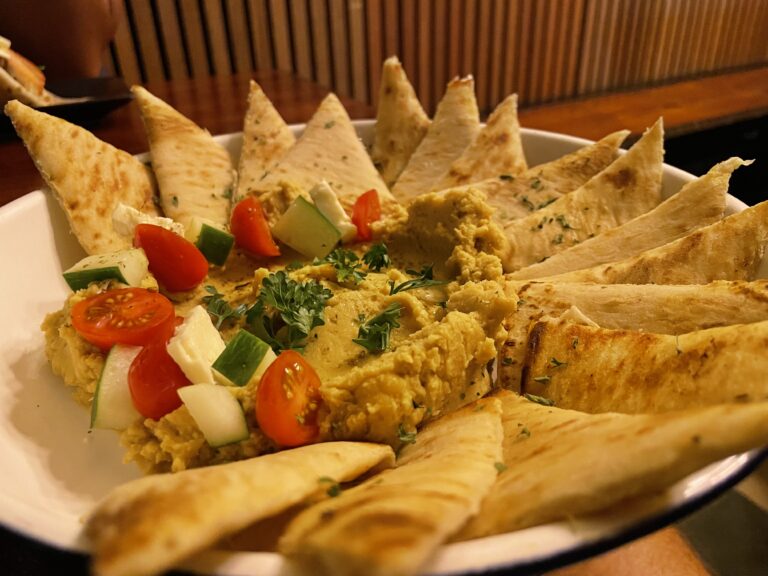
We spent the night in an Airbnb called Mango Mountain. I highly recommend it. It appears to be a couple giant residential homes on a hill that have been subdivided and turned into Airbnb’s. They are honestly a great value as it has a beautiful pool, an amazing view, they give you fresh eggs in the morning, the AC is strong, and the interior is nice, all for about $100 a night.
Day 10
Today you’ll be beach hopping some more along the west coast of the island. The west is known for having the best beaches in Puerto Rico. For a complete guide to beach hopping along the coast, check out this itinerary. Start the day with breakfast at the Rincón Bakery.
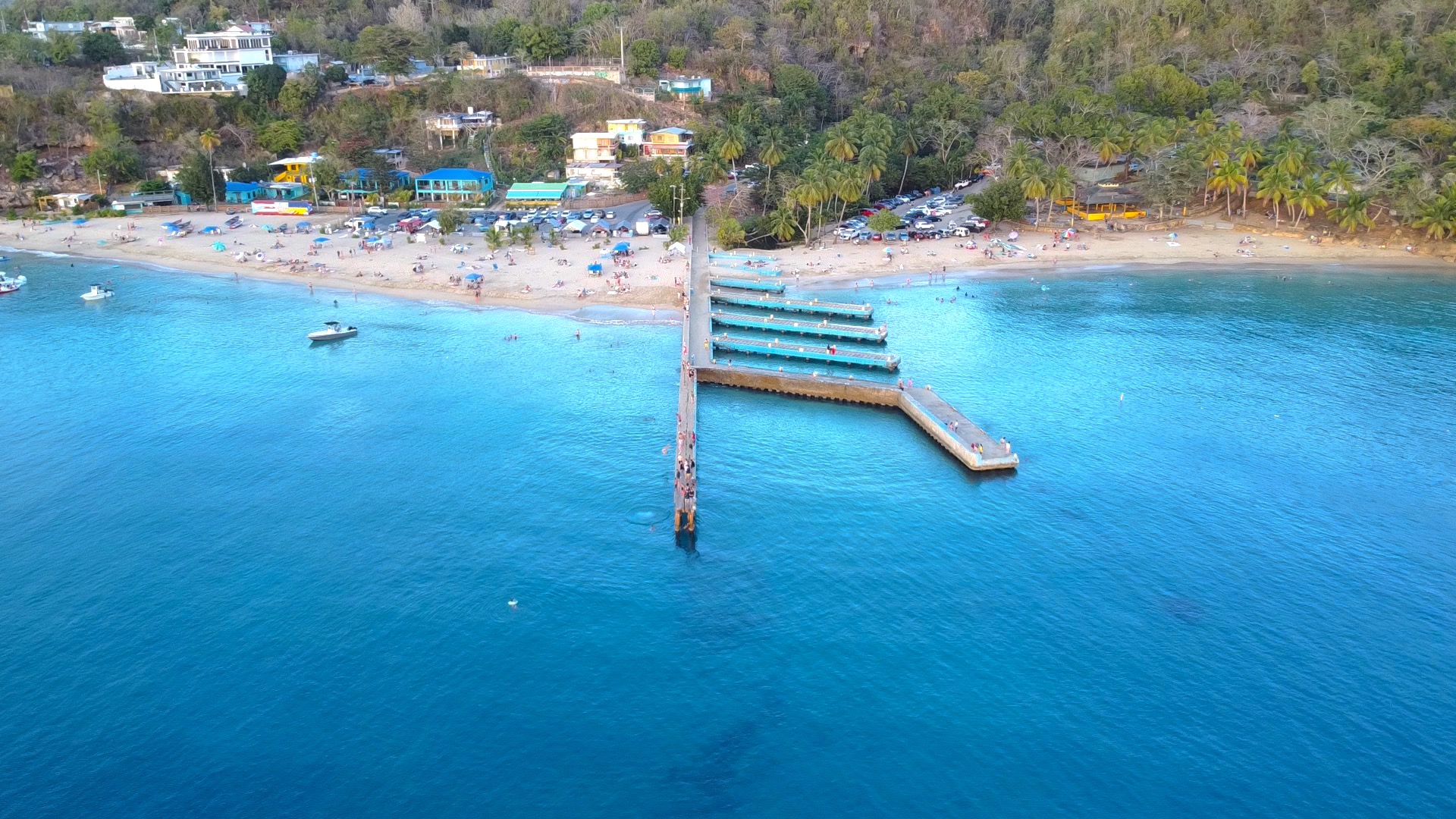
Drive 30 min from Rincón to what is easily one of the most popular beaches on the island. Parking is usually a headache, and of that doesn’t get you, the loud music will. But, it’s worth it! Everyone has congregated at this beach in Aguadilla for a reason. The water visibility here is perhaps the best on the main island. You can snorkel around the tip of the pier and see marine life like fish, sea snakes, and squid. This is a popular scuba shore dive location for these reasons. You can walk to the end of the pier and jump off in either direction, then climb up a rope attached to the end of the pier to do it again. It’s a location with a lot of energy and it’s always fun. If there’s one beach you don’t want to miss today, it’s this one.
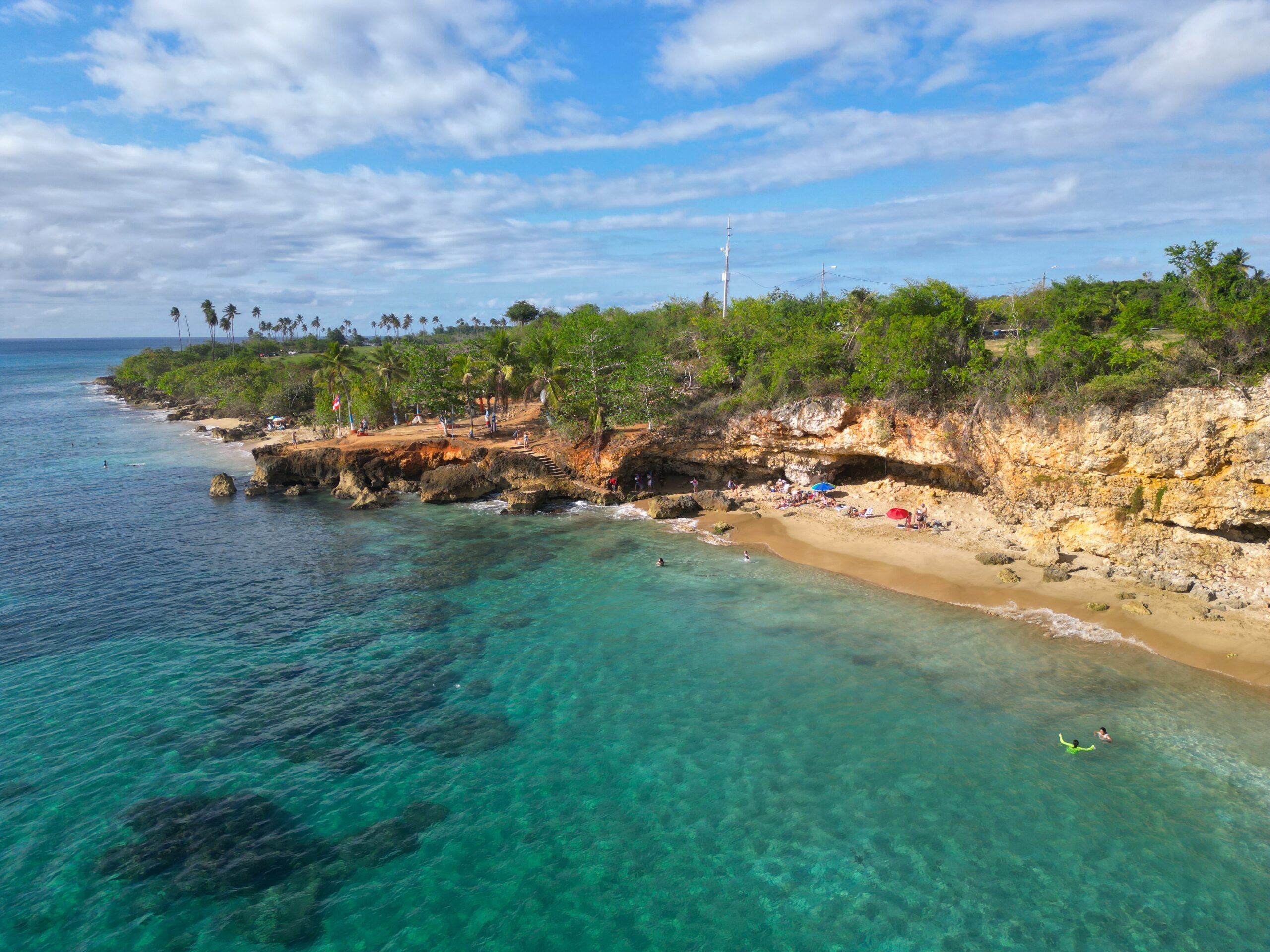
Drive 12min to Peña Blanca Beach. It’s a great beach for snorkeling, laying in the sand, or even whale watching! There is decent snorkeling here close to shore. I have seen fish, eels, and turtles. Whales pass between the shore and the distant Desecheo Island February – March. The water is almost as clear as the nearby Crash Boat Beach. We got a $100 ticket for parking close to the beach. It turns out that a man owns a dirt lot near the beach and charges everyone $10.00 to park on his dirt, if you park at the beach entrance (where there are no “no parking” signs), he calls the cops who promptly come to hand out tickets. High tide eats up much of the beach and makes it tough or impossible to get down to the water so check the tide.
Grab lunch at Khalan Thai, if you like thai food. I think it’s pretty good for Puerto rican standards. The only down side is that the food can take a while to come out. If you aren’t a fan, Desecheo restaurant offers good traditional Puerto Rican food, but I think it’s overpriced.
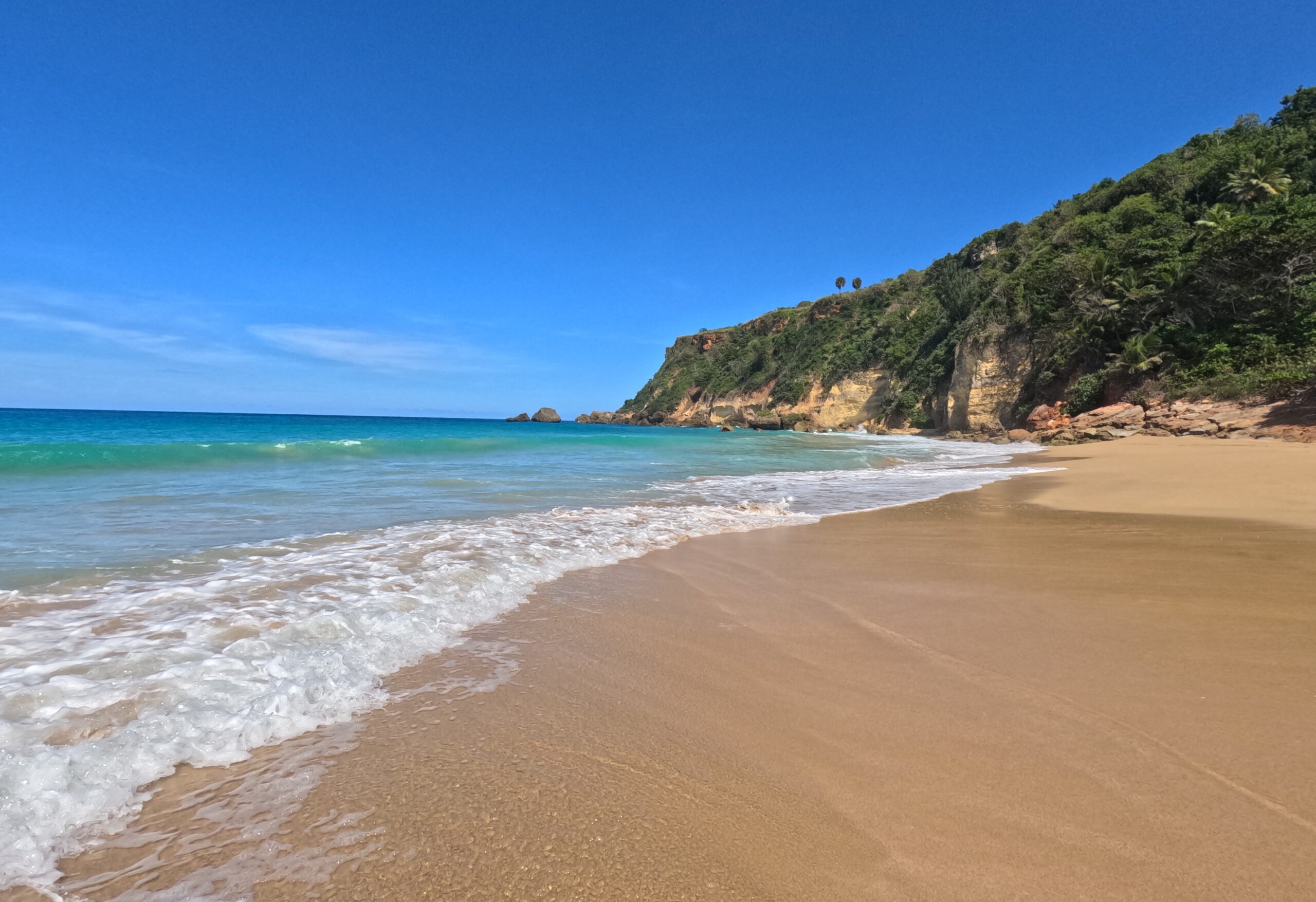
If you at at Desecheo, it’s a 6 min drive to this beautiful beach on the northwest coast. It’s a wild-looking beach in the unofficial Playuela Nature Reserve (home to many beautiful beaches like Peña Blanca and Wilderness Beach). A steep cliff face borders one side of the beach – an unusual feature in Puerto Rico. The shore break can be a little rough here. A palm grove offers a lot of shade to relax, there are a couple picnic tables set close to the entrance.
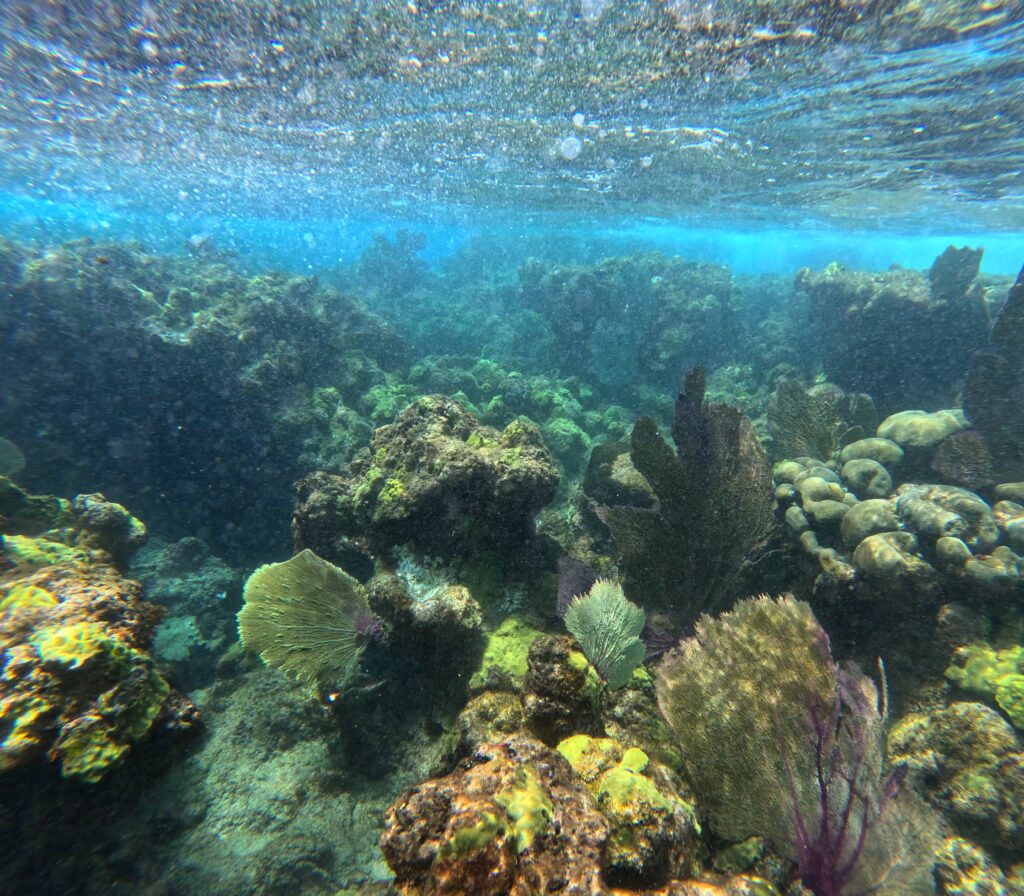
Drive 15 min to Shacks Beach in Isabela – the first beach I consider officially the north coast. The beach itself is windy and rocky, but Shacks Beach has some of the best snorkeling on the main island. There is a good amount of living coral, a diversity of fish, and these really cool caves you can swim around, into, and even through. I once dove into a cave and looked up to see a massive barracuda staring at me. This is a location for confident swimmers, exercise caution when swimming in the caves and be aware of the current and the reef. The reef gets extremely shallow and the current can be strong. There are a lot of sea urchins in rock crevices, even in the shallows. Snorkel with a buddy, take it slow, exercise caution, you’ll have a blast.
Jobos Beach
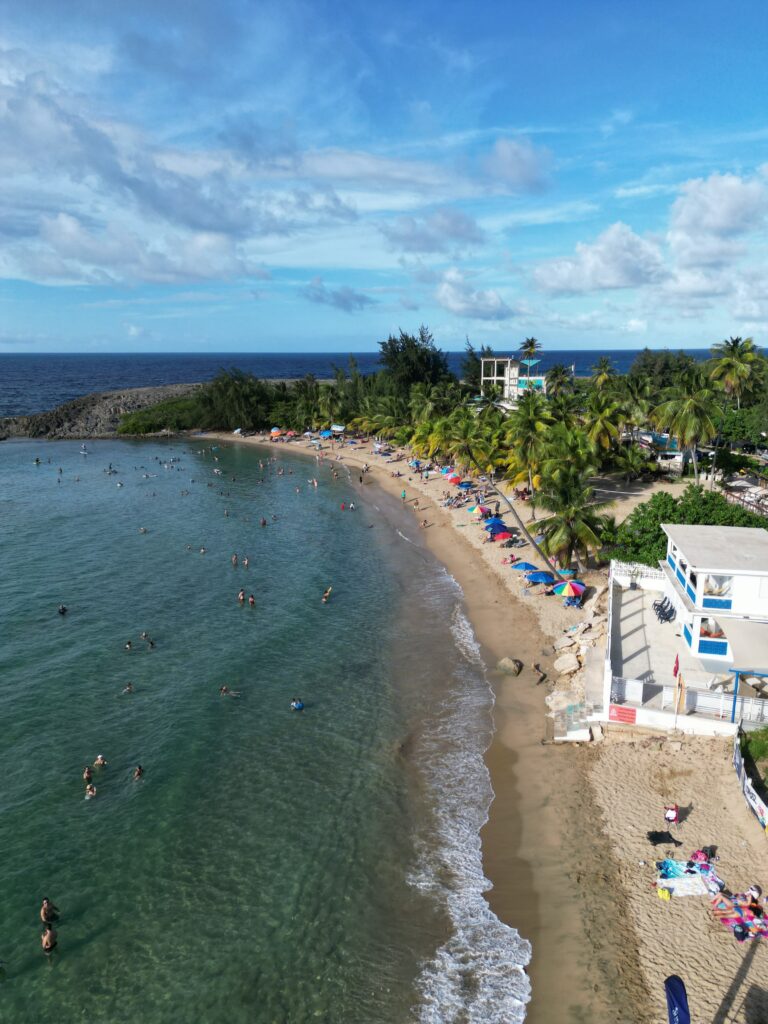
Just down the road is the popular Jobos Beach. This beach has something for everyone. It has surfing for all skill levels, near the rocky area you can do some snorkeling. Close to shore the water is calm and the bottom is sandy so you can relax in the shallows. On the shore there are many palm trees where you can set up your spot in the shade. Parking on the road can be tough if you come late to this popular spot. You can easily spend the whole day on this beach. The current can be strong here, do not attempt swimming past the sand bar if you are not a strong swimmer.
Isabela Boardwalk
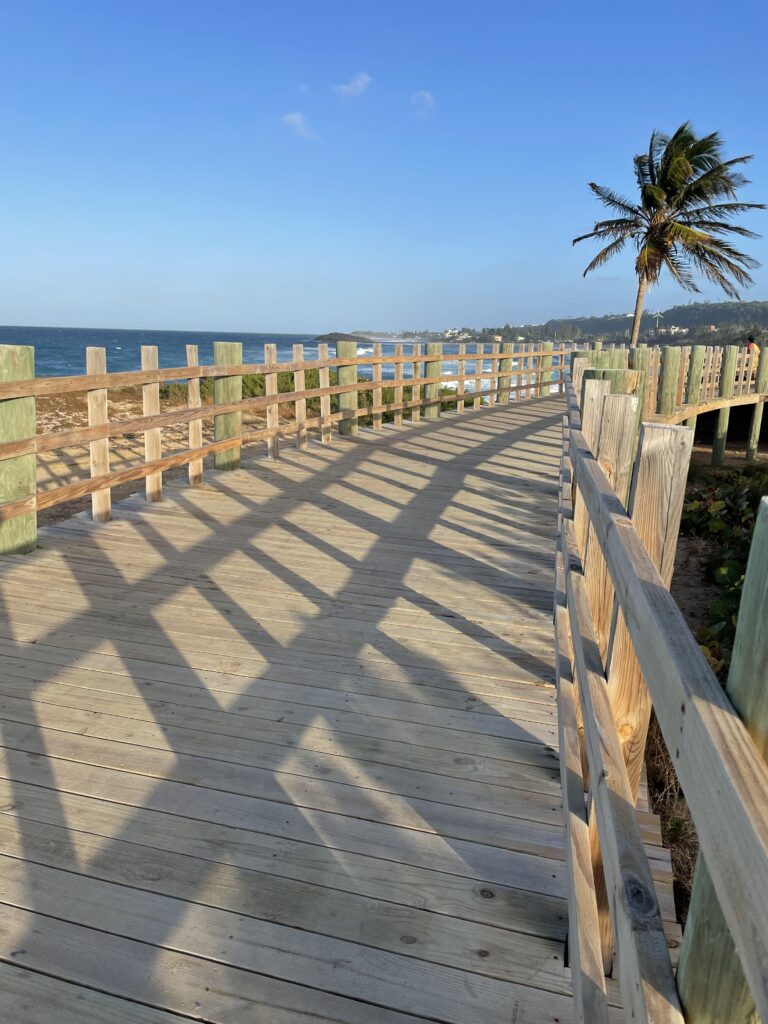
I’d say the Isabela Boardwalk is one of the best walks on the island. It’s a wooden boardwalk suspended about 15 feet off the sand. It’s one everyone will enjoy. One side of the boardwalk ends at Jobos Beach. If you have some daylight left, spend it on this beautiful walk.
Grab something to eat at one of the many restaurants around the beach. I have tried a few and they’re fairly similar in my opinion. Stay the night in Isabela, there are many nearby accommodations.
Day 11
Today you’ll be beach hopping along the north coast of the island. The north coast has so many beautiful beaches, how much time you spend here is really up to you, there’s a lot to see. For a complete guide to beach hopping along the coast, check out this itinerary. On your drive to the next location, stop at this awesome lookout point.
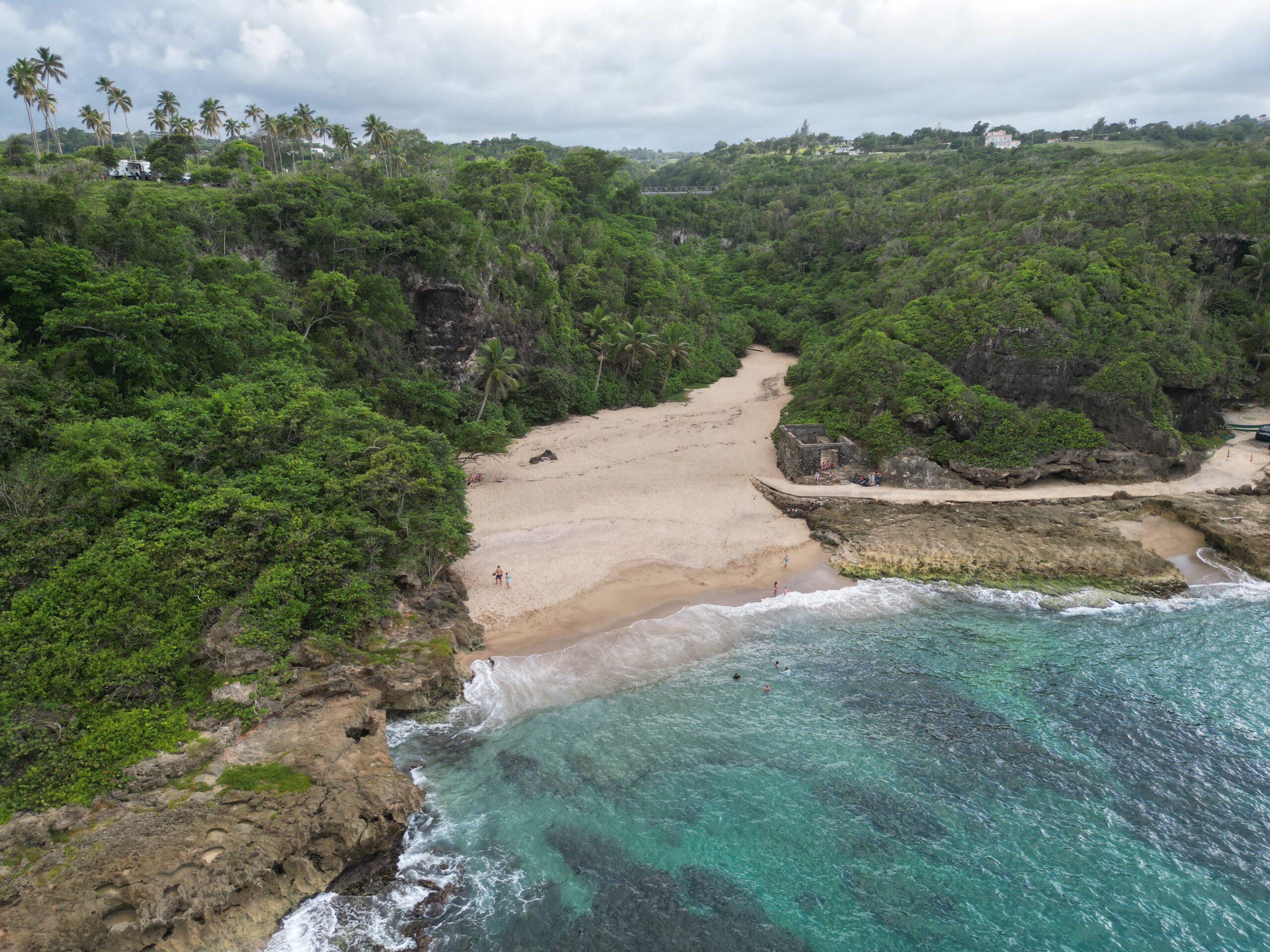
Drive 35min to Quebradillas to a fun little beach called Puerto Hermina. As you drive down a steep road you’ll have an awesome view of the Atlantic Ocean. Parallel to the rocky coast line are coconut palms and a few pavilions with picnic tables under them. The beach is at the end of the road located next to the ruins of some structure. The beach is small and interestingly the sand runs far inland, away from the ocean in a vaguely triangle shape. If you follow it back into the forest you can do a hike to a bridge with a great view of the surrounding forest and cliffs. For those interested, there is rock climbing on the sheer cliffs near the parking lot.
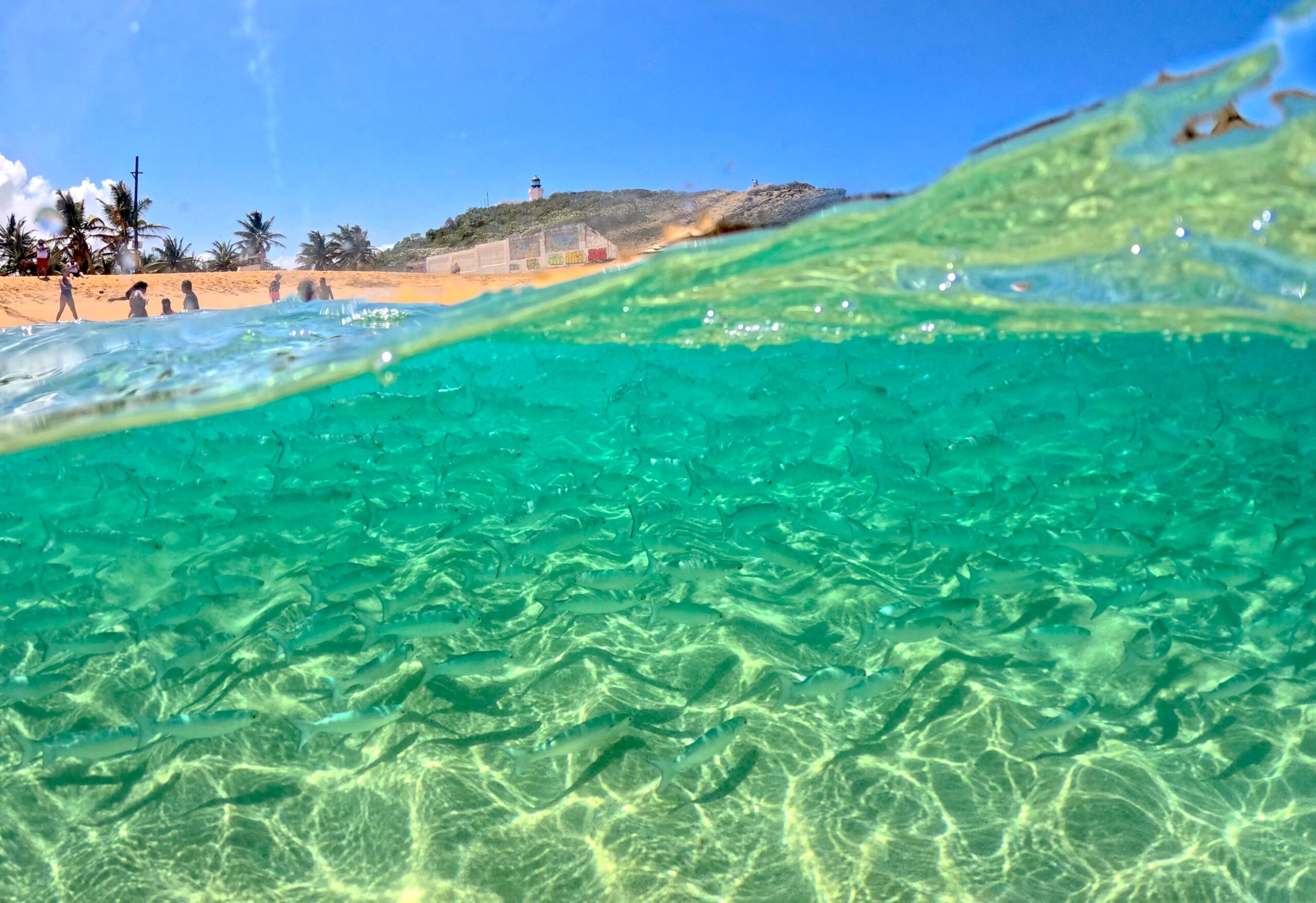
From Isabela, make the 30 min drive to one of my personal favorite beaches. It’s basically a natural swimming pool where rocks enclose a sandy pool of clear water. In the winter, big waves break on those rock and blast water high into the air to rain on those that stand close to the rocky perimeter. This also creates a kind of wave pool that is fun to play in, though currents can get strong. In the summer the pool is calm and clear. It gets really windy often, so umbrellas won’t work. Also, it is a very small area and can get very crowded. On the upside there is a shower to rinse off (rare in PR) and an ice cream man. Get lunch at the nearby Islote Beach Restaurant. When we ate their last, I immediately noticed the overhead fans to cool you off hung above most of the tables.
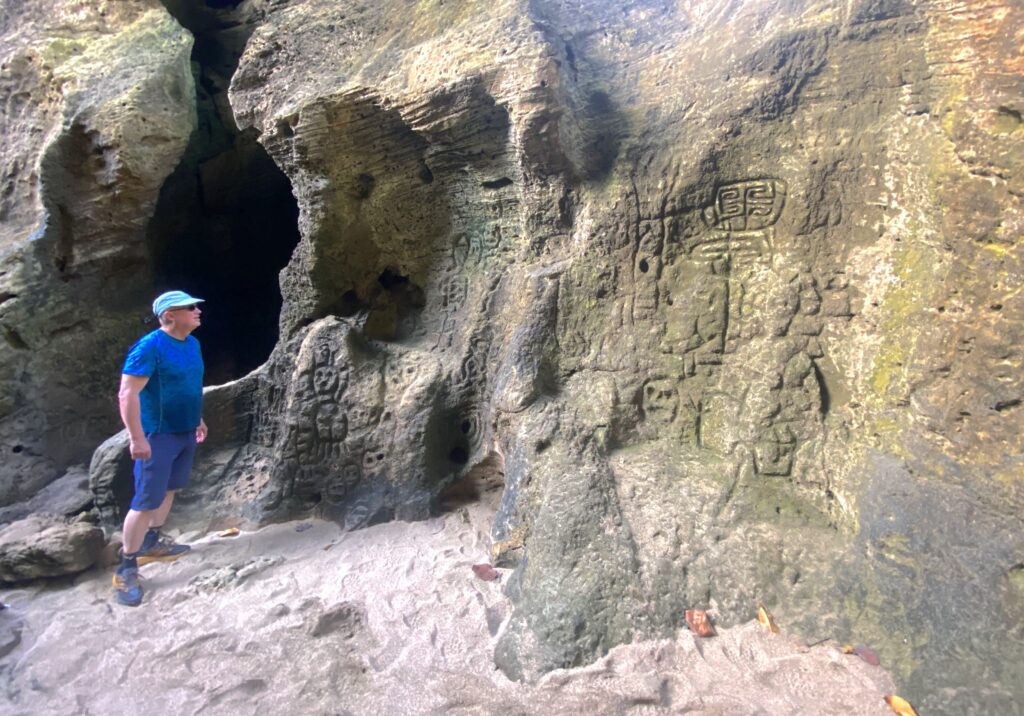
Drive along the coast for 10 min to the Cueva del Indio Nature Reserve. It’s the most important Taíno site on the island. The indigenous people that populated the island before the Spanish found it, carved hundreds of markings all over the inside of a rocky cove. To see them face to face isn’t for the faint of heart. Sneak through a small slit in the rock, spiderman-walk the two walls, and hop to a rock dodging a steep fall. If thats not for you, you can still see markings looking down into the cave, but not nearly so many as when you are down there. I believe there used to be some kind of ladder but that is gone now and can not be replaced due to laws protecting the site. Entrance fee is steep at $10.00 per person because you must park on and cross private land. They close the parking lot at 5:00pm.
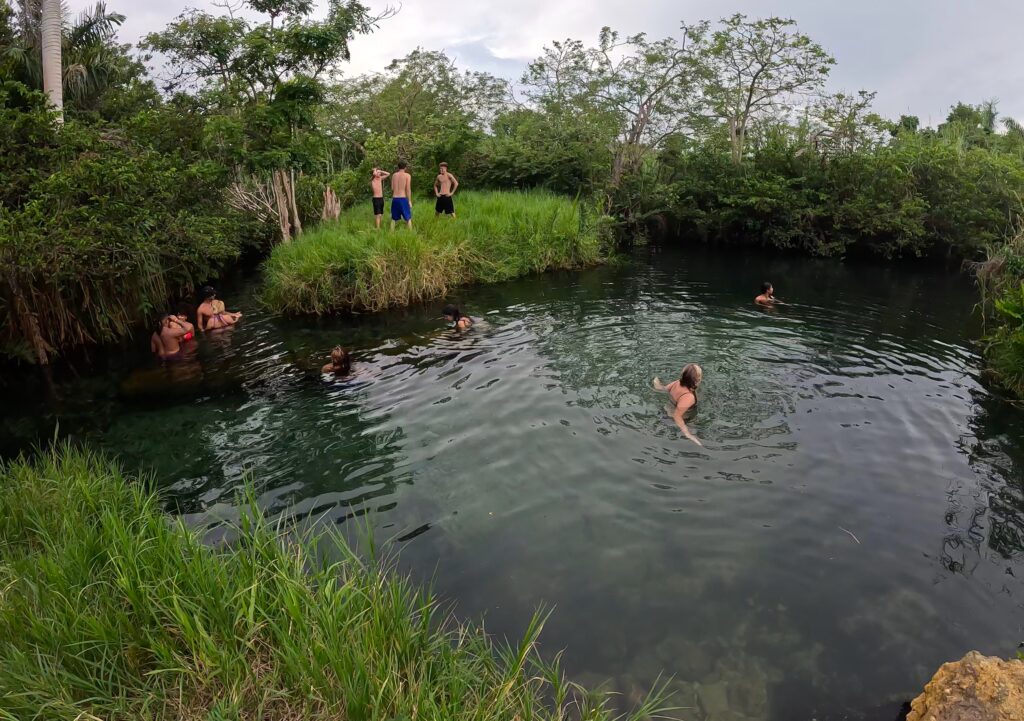
Drive around a lagoon for 20 min to a natural spring. It is fairly large, second only to Ojo de Agua spring. When we went, it was fairly busy and someone had gone to the trouble of dragging a massive stereo to blast reggaeton. Still, the water was clear and refreshing. The hike to get there was around 15min. The water from the spring runs into a nearby lagoon.

Drive for an hour to get to the Casa Grande Mountain Resort. It’s a beautiful property built on a hill next to where Caonillas river runs into Caonillas lake. They have hiking trails, a spa, a pool, yoga class, and healthy food options to try during your stay. Spend some time enjoying this retreat in the mountains.
Day 12
Head to the interior of the island to see the beautiful forests, rivers, and caves of Puerto Rico. This area is less-frequently visited than any other place on the itinerary and it’s a shame because it’s beautiful.
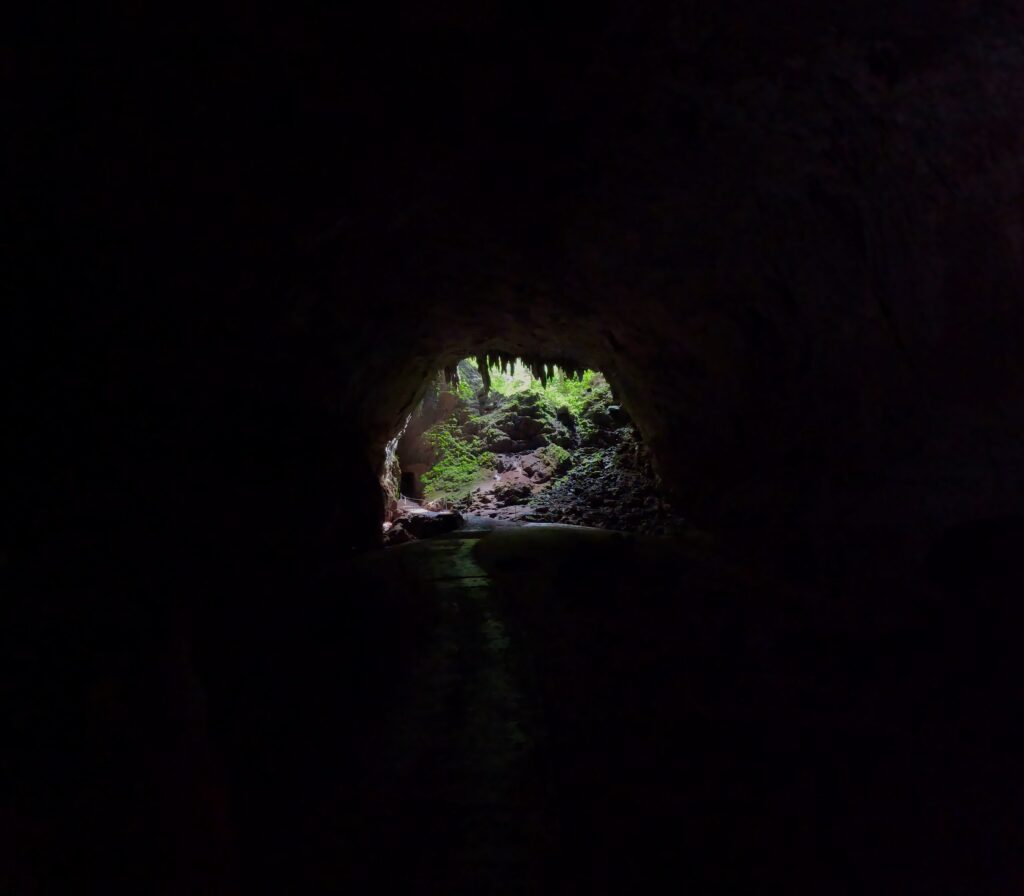
Next, drive 30 min to arrive at the Camuy caves. Catch their first tour at 8:00am. It’s one of the largest cave systems in the world. The park features over 10 miles of caverns, including a large chamber called the Cathedral, which is over 200 feet high and 600 feet wide. A guided tour is the only option, it includes a video introducing the caves ecology and history and a headset that plays information on the different areas as you walk through the caverns. The tour lasts about 1 hr 30 min.
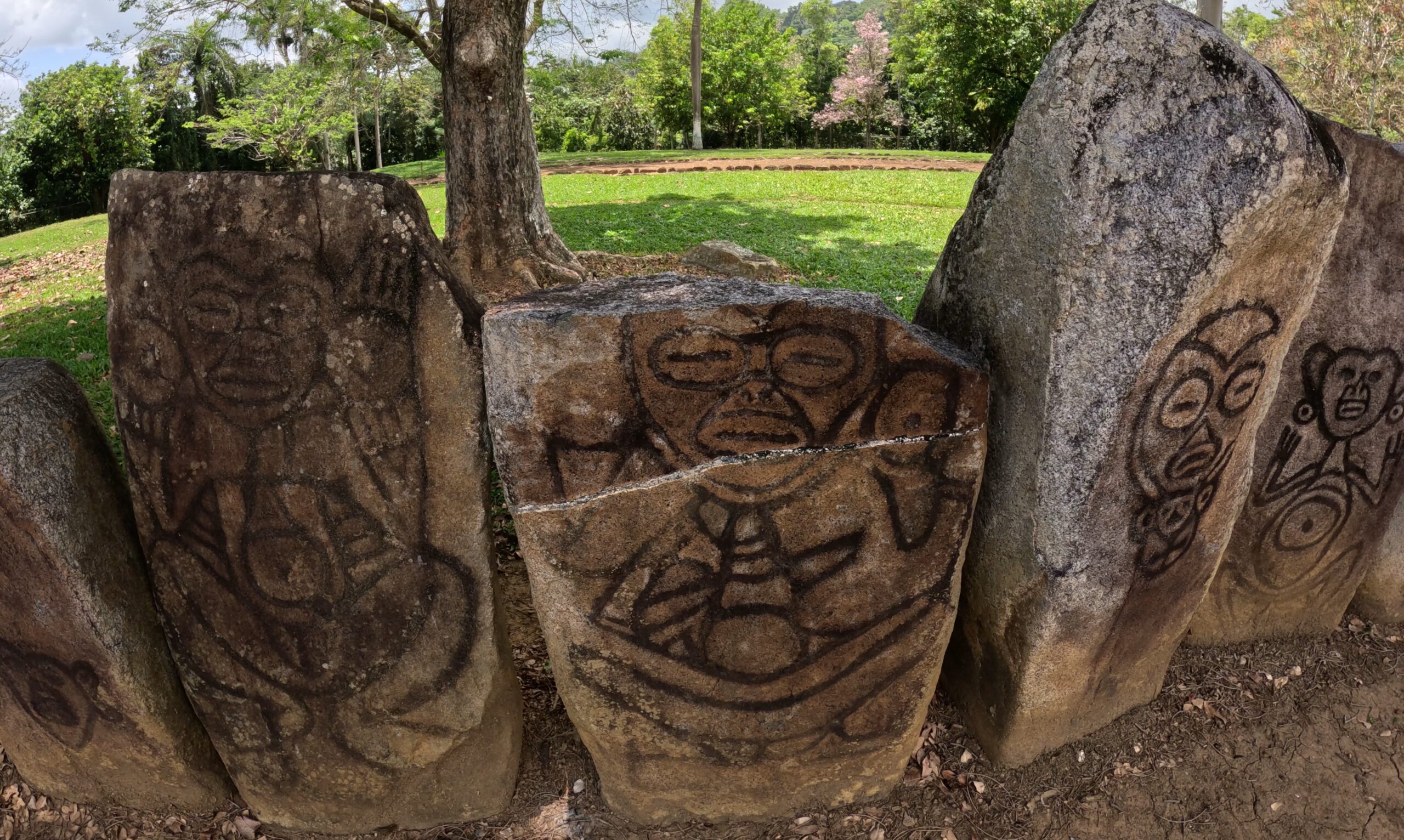
In the mountains of Utuado is a well-preserved Taíno site where you can see pottery and stone carvings in a very small, one-room museum. Behind the building is the main attraction: stones placed around a cleared space called “bateys” used by the Taíno for a ball game and spiritual ceremony. On some of the larger stones you can see carvings of humans and various animals. This is by far the largest Taíno site I have been to.
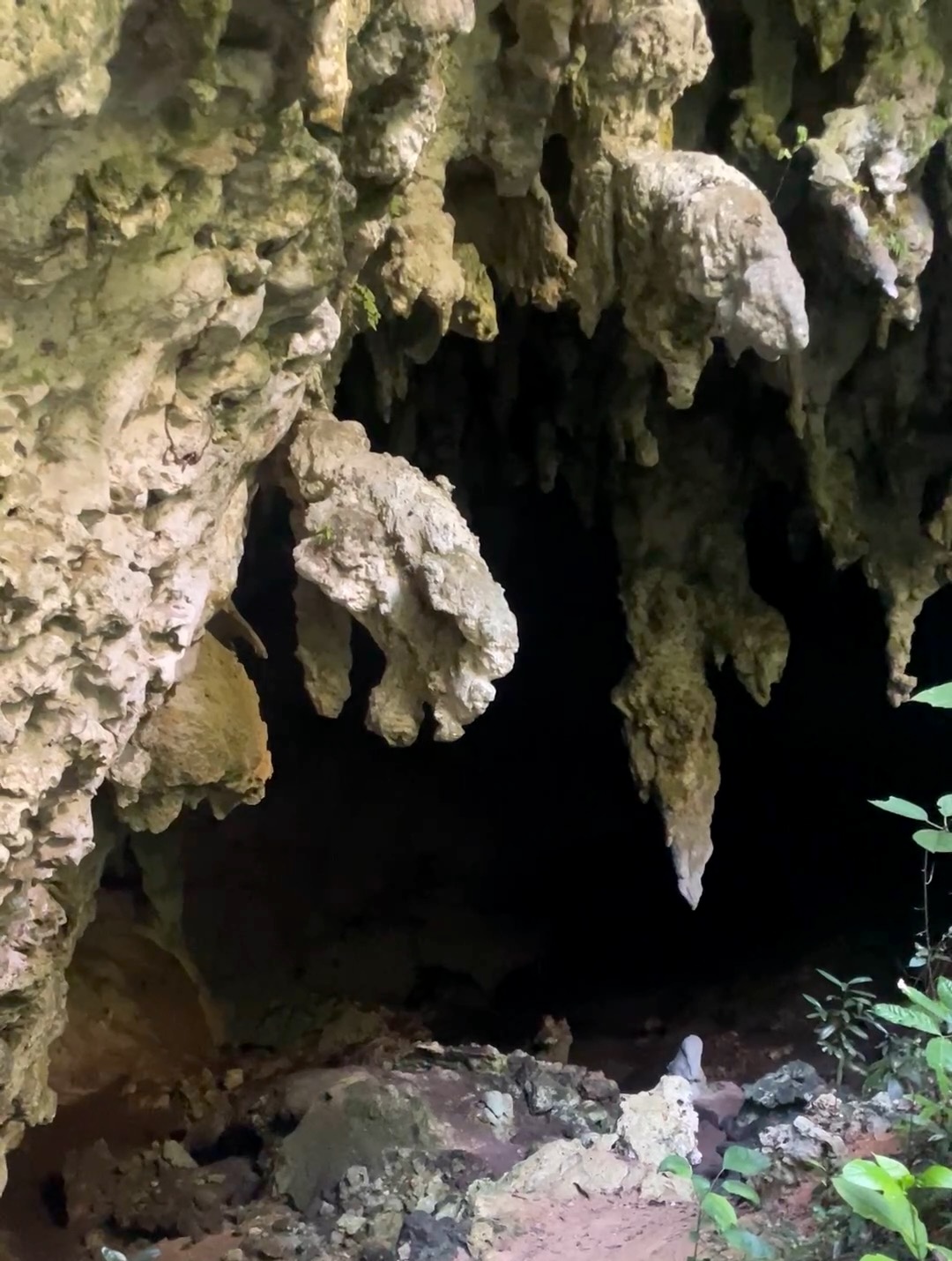
To get there, you’ll need to hike from this trailhead. Park here. I don’t have a photo that does this massive cave justice. There’s a trail to enter the upper section, to get to the lower, there’s a trail that leads to the river. Walk down stream (to your right), when you round the bend you’ll see the cave. There is a sign at a fork in the road, go left until you get to another fork. Go left to get to the river, right to the cave. It’s located here.
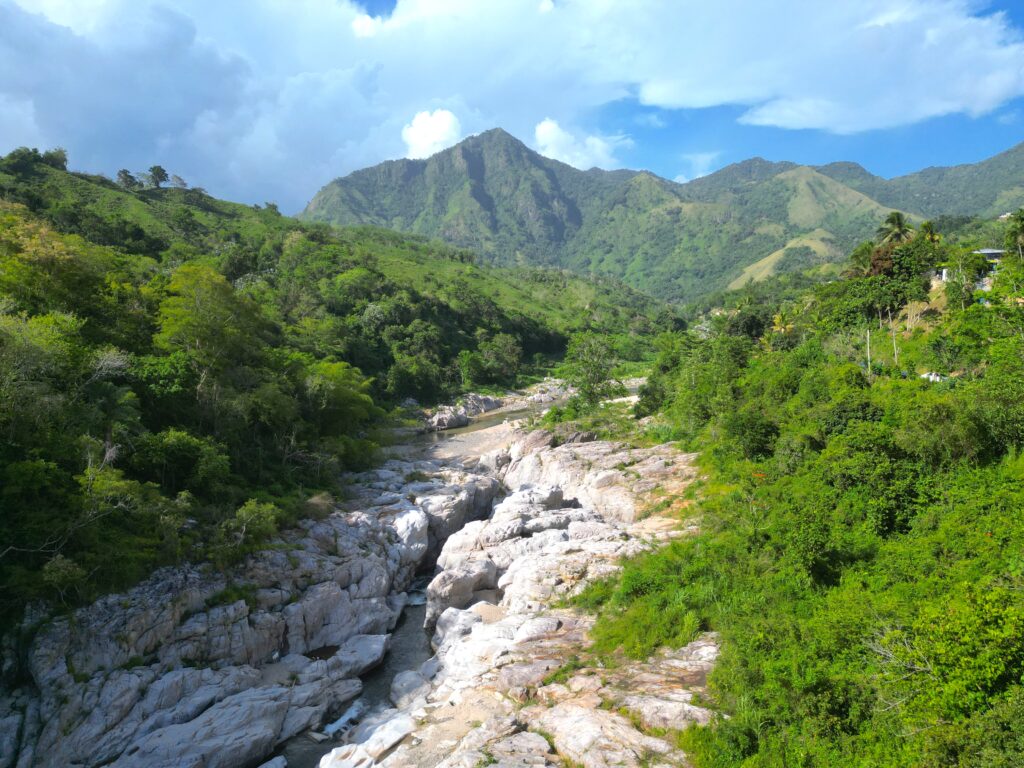
When getting to the white canyon via Google Maps, make sure you pass this church. If not, it might take you down a road on the other side of the river where you’ll find a locked gate blocking the route. There is one other route not passing the church, but add it as a stop just to be safe. Looking out over the white canyon is one of the best views on the island. The white rock is primarily composed of limestone, a sedimentary rock formed from the accumulation of marine organisms, such as coral and shells, over millions of years. This limestone has been carved by the river to create a narrow and dramatic gorge. The contrast between the white rocks and the tall, green mountains looming on all sides creates a striking visual spectacle. The water is warm and the depth varies depending on rainfall. Cross the river when the riverbank is at ground level and backtrack a little to enter the water. This is where you’ll find the best spot to hang out in the water, next to the El Sofá, a vaguely sofa shaped rock you can sit on. Look out for glass on the river bottom.
For dinner, I recommend the beautiful Pueblo Viejo 419 Gastrobar. I love the vision of whoever constructed this restaurant. An old brick building’s walls were partially preserved to create the courtyard in front of the restaurant. Their food is great and includes some Peruvian dishes. The risotto comes highly recommended. Spend the night back at the retreat.
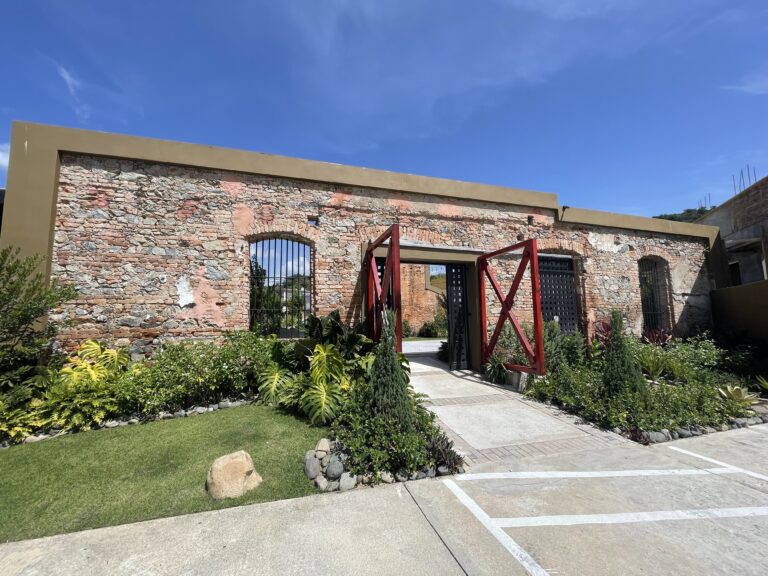
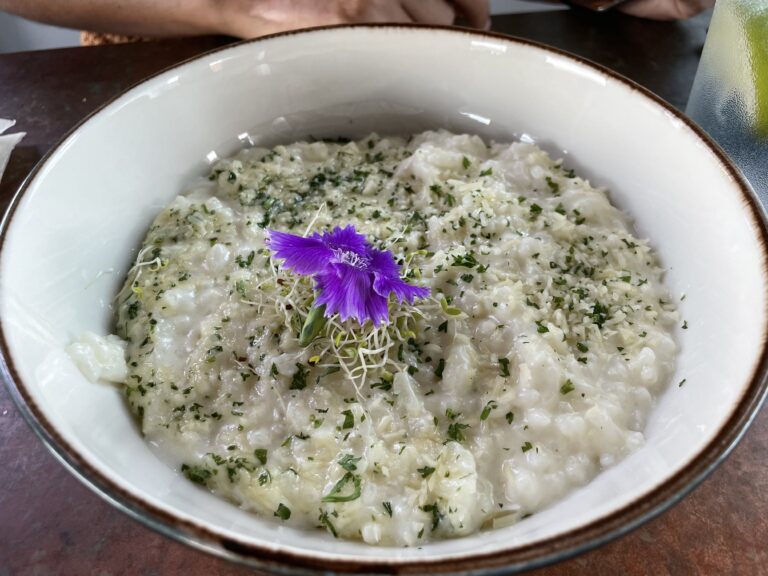
Day 12
Continue exploring the interior of the island to see several waterfalls and Taíno petroglyphs. Get breakfast at the resort before checking out.
La Piedra Escrita
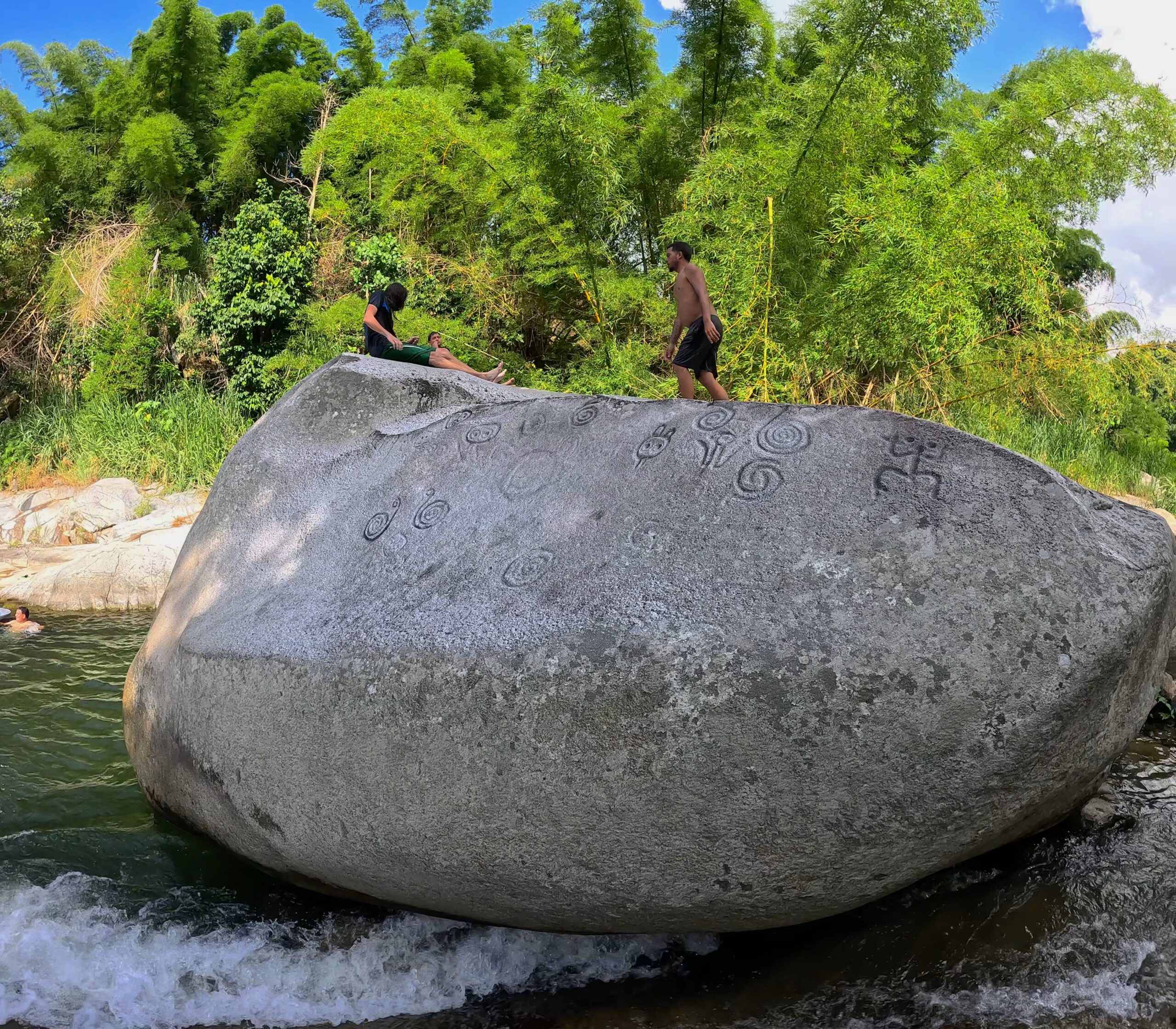
Drive 45 minutes to La Piedra Escrita. A large boulder sits beached in the middle of the Caonillas River. Park in a large lot in front of the La Escrita restaurant for free. Walk away from the road to find a long wooden boardwalk suffering from the elements and termites. Walking down its switchbacks will take you to the river, right in front of the boulder. The rock is covered in Taíno petroglyphs. You can jump off, or slide down the boulder into the river. I was surprised to see a large group of local boys sliding down the rock, right over the petroglyphs when I arrived, but I guess that too is part of this location’s history. The river is warm and the surrounding mountains add to the wonder of this very special spot.
Las Delicias Waterfall
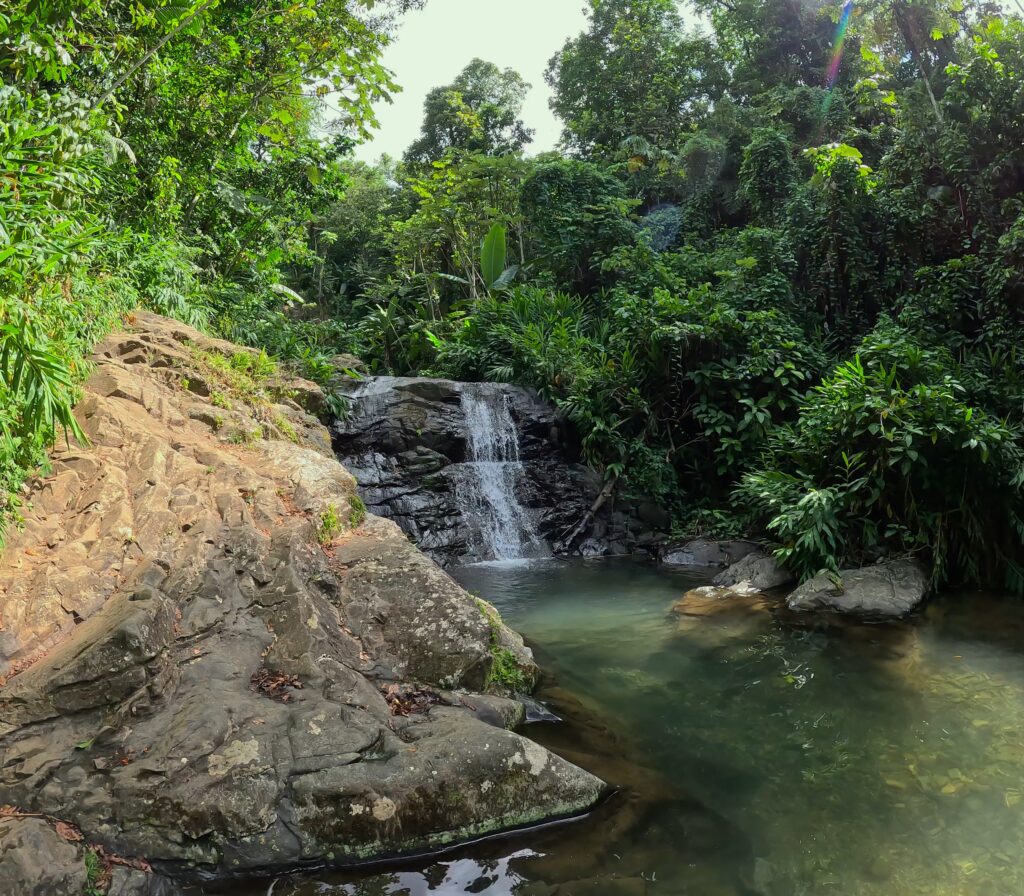
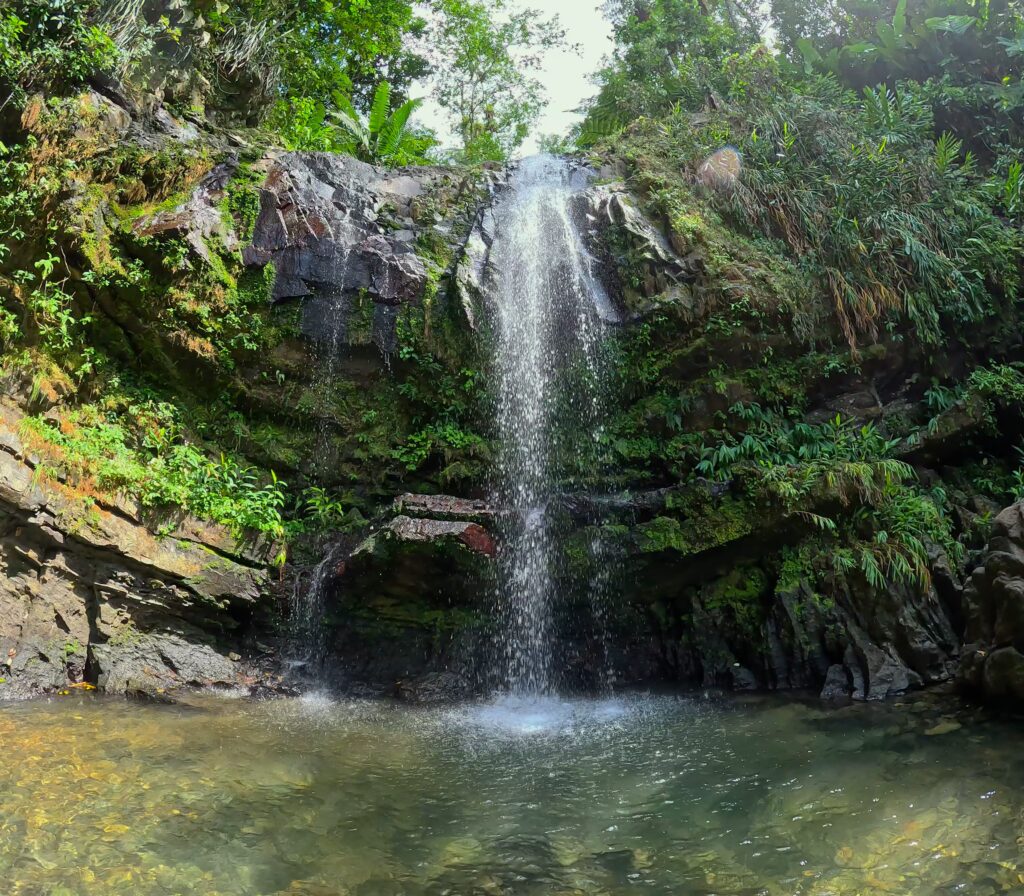
Next, drive 23 minutes to Cascada Las Delicias. Sporting two waterfalls near the main road, this spot looks like a screen saver. The water is cool but not cold and the forest is thick and alive around the river. The walk to the further and larger waterfall probably takes around 60 seconds but the rocks do get slippery when wet. I’m told there is a trail to the left of the 2nd waterfall that continues on to another waterfall – Cascada La Escalera that is very much worth the easy hike.
La Chorra de Doña Juana
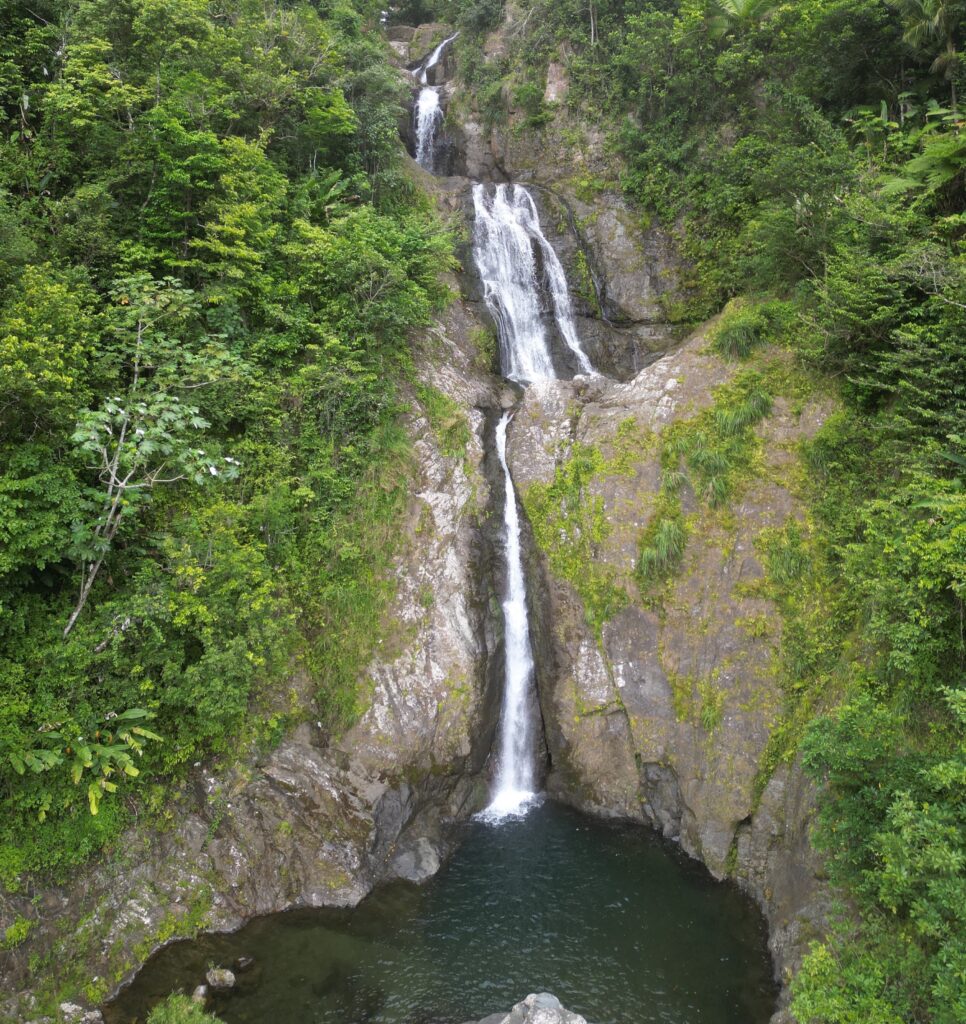
Next drive 20 min to Cascada Chorro de Doña Juana – a beautiful waterfall that cascades into a circular pool of cool water. It’s comprised of several tiers and is one of the most striking on the island. It’s located in the Toro Negro State Forest and is right off the side of the road, you can’t miss it. Park on the road near a restaurant and gift shop. Sit on the bridge, or scramble down the rocks to the pool at the foot of the waterfall to enjoy this picturesque spot. The water is cold, but we had fun swimming and lounging on the rocks. The beef empanada ($2.50) from the restaurant is highly recommended.
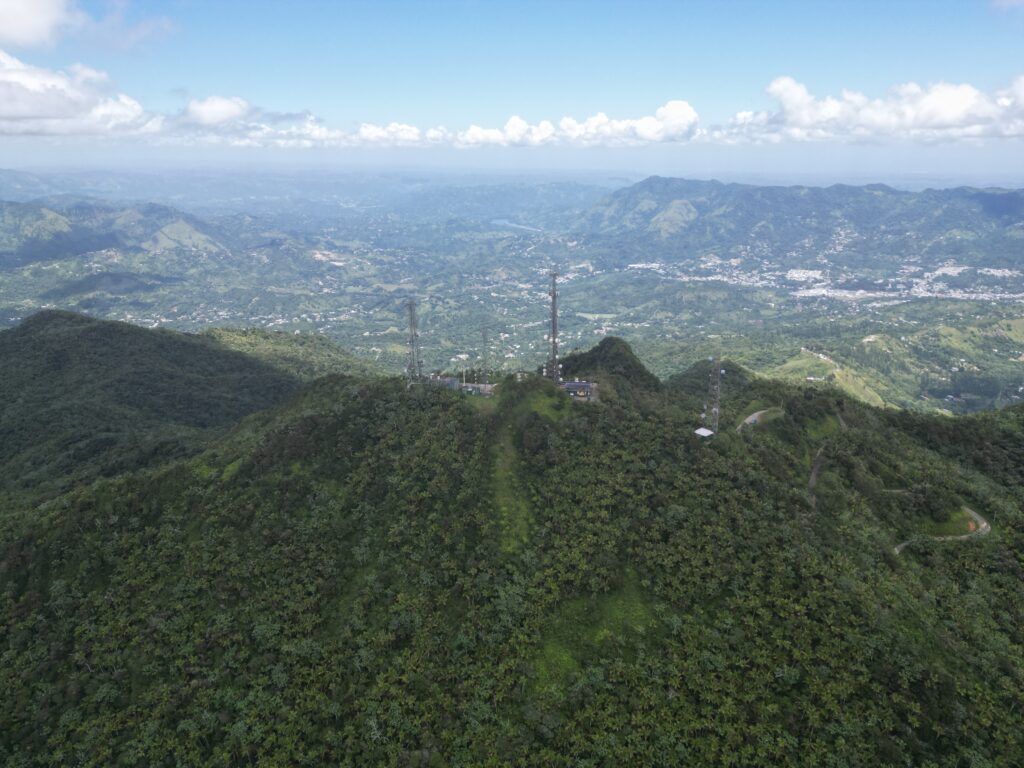
Continue driving down scenic mountain roads for 35 min to get to Cerro Punta. This particular mountain in Jayuya has the highest peak in Puerto Rico at 4398 ft (1338 m). You could drive all the way up, but the road is really bad. It’s gotten much worse in the year of 2023. If you don’t have 4 wheel drive you won’t make it. The hike up the road isn’t too bad, but it’s steep, park here. It will take you 20-30min. If you are lucky enough to visit on a clear day you’ll have 360º views of the island. You can see the ocean on either side, though this peak is closer to the Caribbean Sea. I have done much tougher hikes for worse views, this one is definitely worth it! Stay the night in Ciales or thereabouts.
Day 13
Today you’ll return to the north coast of the island. The north coast has so many beautiful beaches, you couldn’t possibly see them all in a day. We’ll have to pick and choose which ones to see. For a complete guide to beach hopping along the coast, check out this itinerary. I suggest buying some things for lunch to eat on the beach from a supermarket today. There is one near Mar Chiquita Beach.
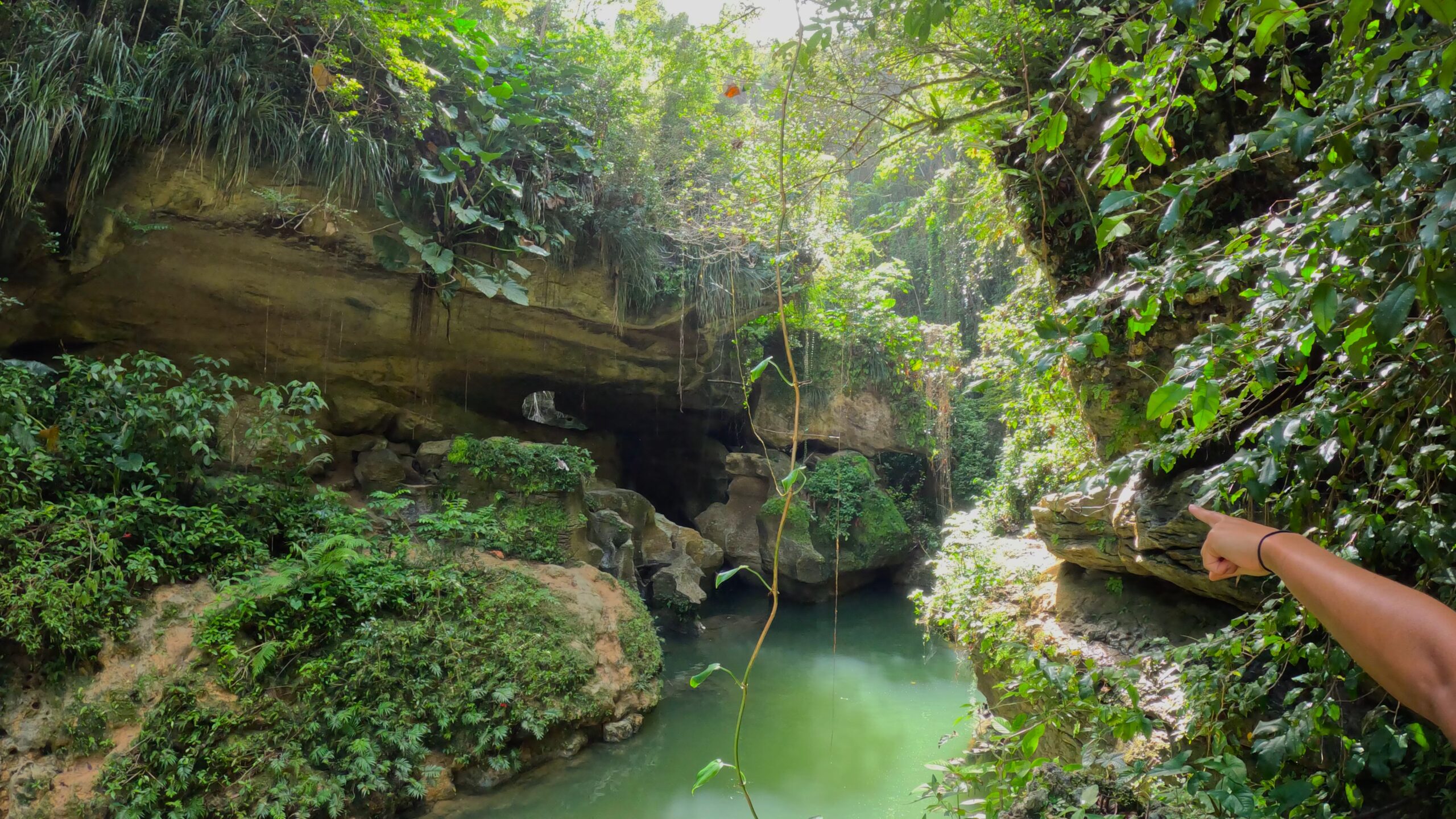
Drive 35min to start the day at a magical part of the Morovis River. The so-called sand caves could be a gateway to Narnia, they look so magical. A short hike along and through the riverbed brings you to a high ceilinged cave. The cave goes all the way through revealing a smaller, clear stream on the other side. Natural clay deposits can be found on the stream bed here that you can rub on your skin, treat yo’ self! Inside the cave you can climb up the rock and jump into the narrow river from about 20 feet up. Parking costs $5 on someone’s property, park on the road closer to the trailhead at your own risk as theft is apparently a problem here.
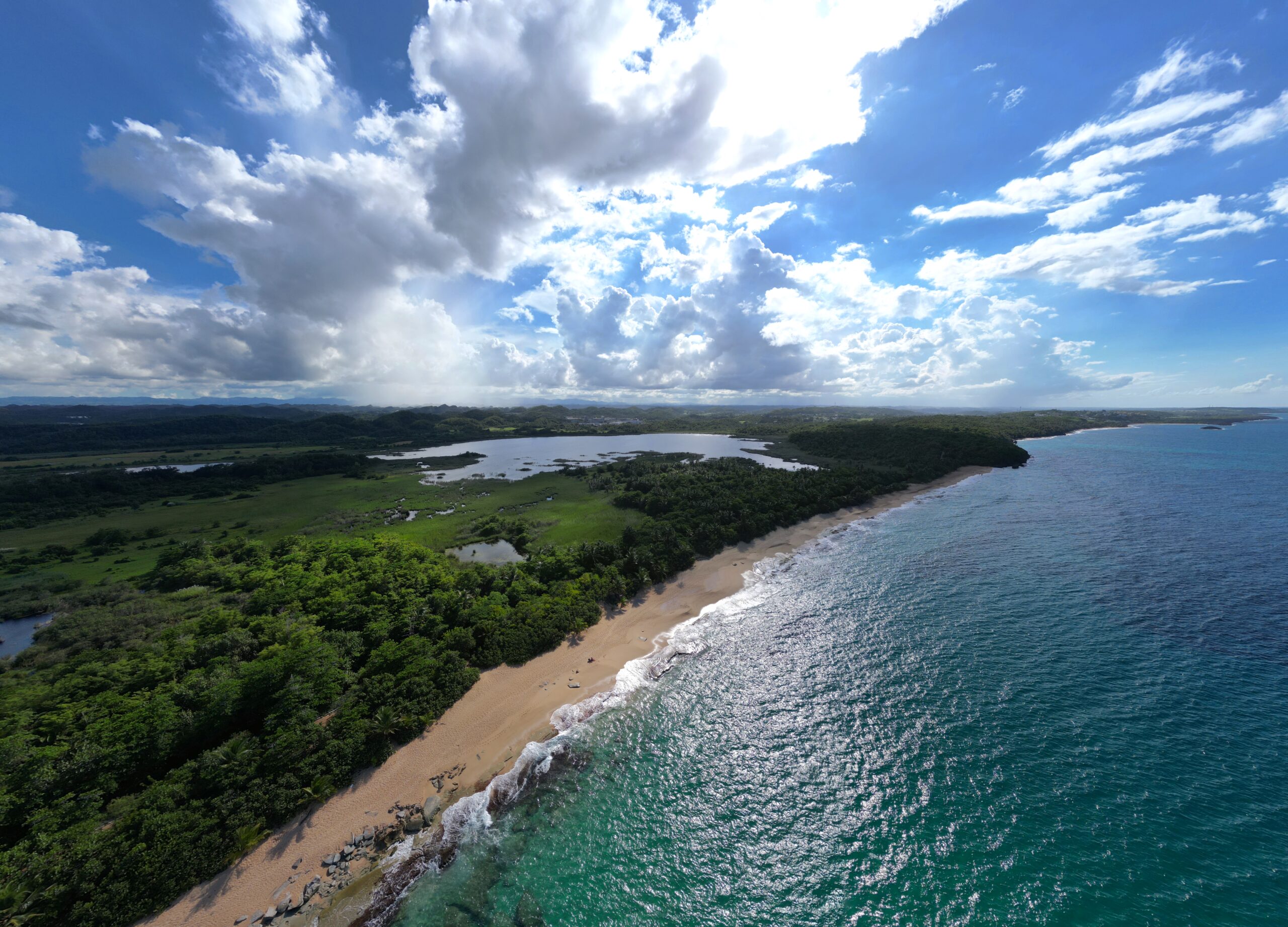
Drive 30 min north to a beach where you can snorkel or surf depending on the swell. A park with strange animal sculptures right next to the beach is currently being remodeled. Sections of the shore are a little rocky, but you’ll be able to find sandy spots to stand in the warm, clear water. In the winter when the surf is rougher, this might be one to pass.
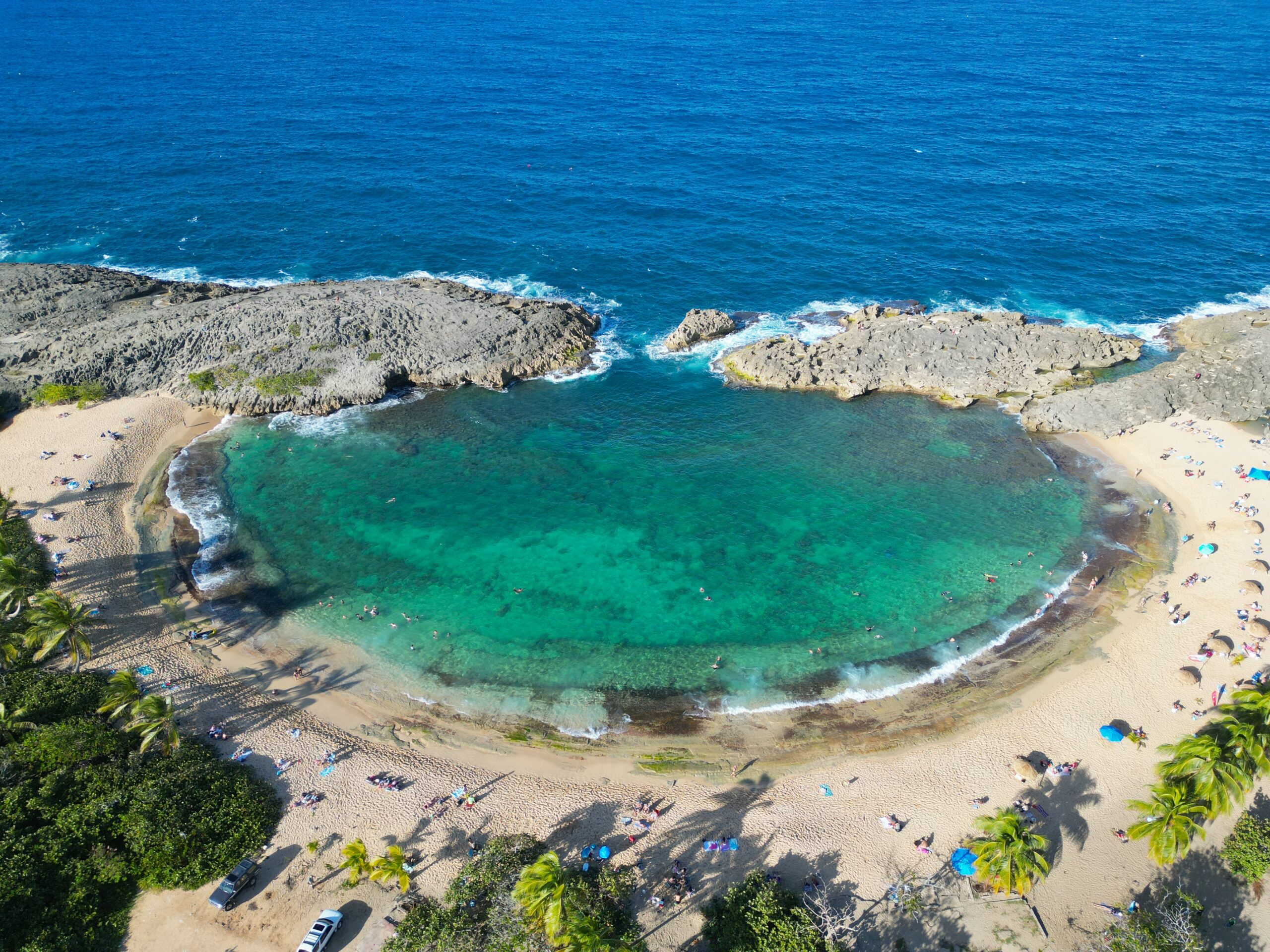
Just down the road is one of the most unique beaches I have laid eyes on. When it’s calm you can do some snorkeling, when the waves are big you can watch them explode violently on the rock. When the waves are just right you can even surf here, I’ve done it! I often stop by this beach with visitors just to show it to them while driving along the north coast. The rocky shoreline limits the areas where you can lounge in the water. The rocks on the left are safe to climb, the rocks on the right are not when there is big surf.

8 min west is Las Palmas Beach. For much of the year, this beach in Manatí is not worth visiting. The wind is strong and the waves are rough. I have walked past this beach many times and never seen anyone on it. But, if the conditions are just right, this beach transforms. In the summer, when there is very little surf, the water becomes crystal clear and Caribbean blue, rivaling any beach on the island. Park on the left side of the road and walk down the dirt road until you see a sign for the beach. June through August is your best bet, but even then rough shore break waves can ruin it. If you’re visiting in the summer, it’s worth rolling the dice to see if you can catch this beach when the stars aline.
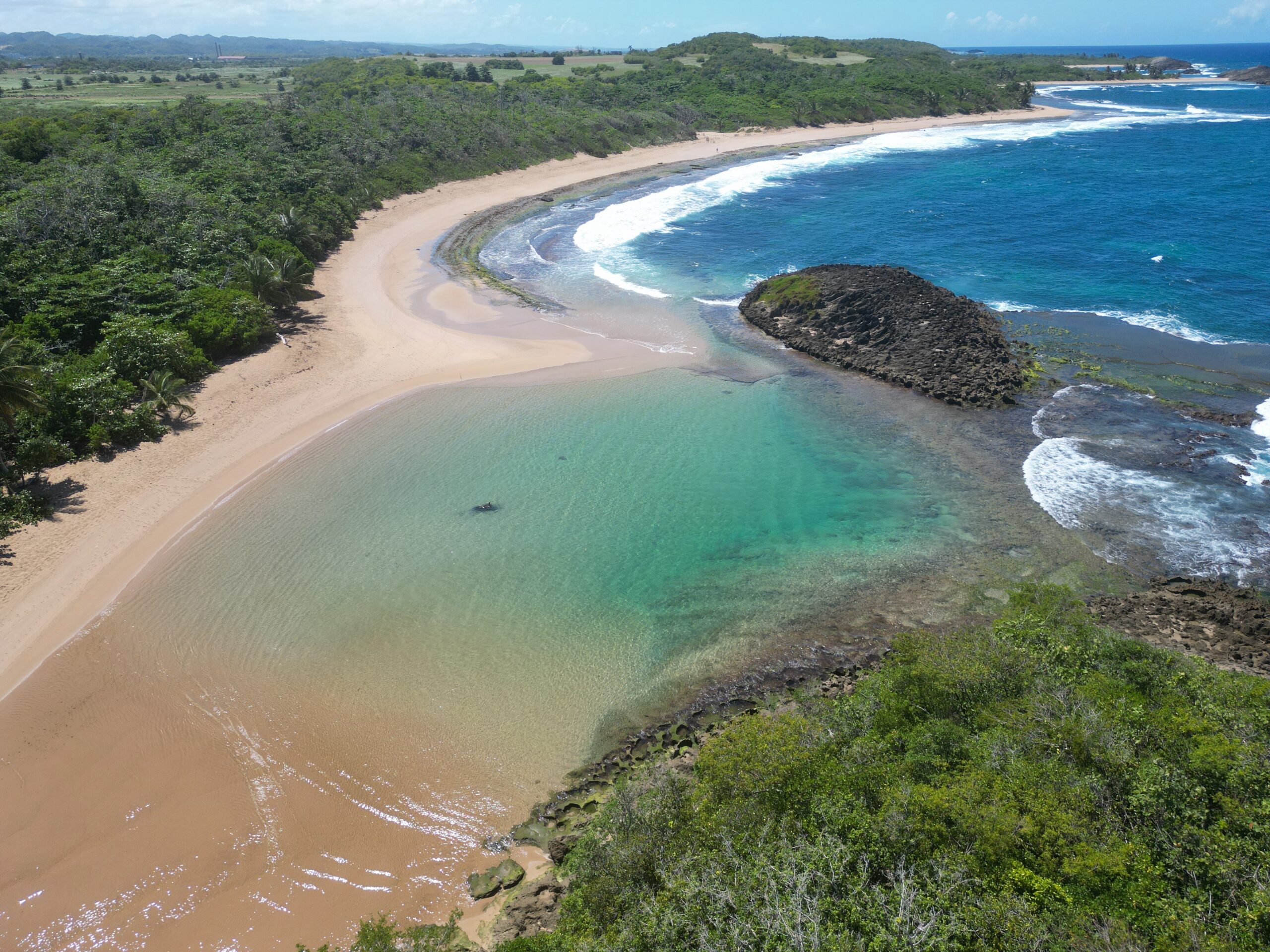
If you are visiting in the winter or Las Palmas beach is too rough, come here. Just down the road is this protected spot on the coast. It’s as close to a natural swimming pool as I have found. This beach is protected by rocks and has a sandy bottom throughout. Fresh water from a natural spring runs into the pool in an extremely shallow river. If you look around underwater, the top 6 inches or so is hazy from the fresh and salt waters mixing. Getting to this beach requires a 10 min hike through a small forest, park here. You can walk in front of or behind the abandoned buildings, there is a trail on either side. This beach attracts nudists for whatever reason so be prepared for that. Though it is secluded, this beach still gets busy on weekends.
Your on your own for dinner tonight. If you haven’t tried Puerto Rican chinese food yet, this is your reminder to try it! Stay the night in Manatí or Vega Baja.
Day 14
Continue beach hopping along the north coast making your way back east to San Juan.
Before you leave Manatí, grab breakfast at our go-to panadería on the north coast. Their oatmeal, toast, pancakes, sandwiches, and pastelillos are all excellent. Most panaderías are pretty similar but this one is better than most. The bacon, egg, and cheese sandwich on the local bread – pan sobao is my favorite breakfast item. They have a lot of lunch options as well.
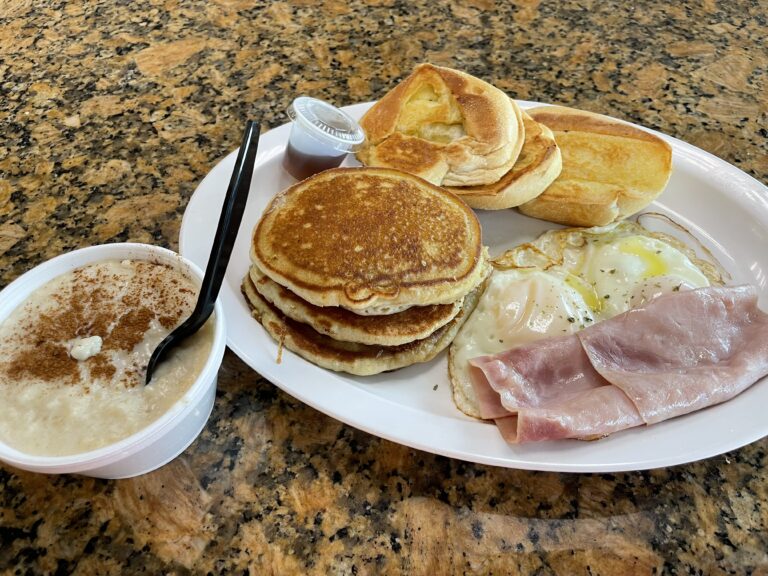
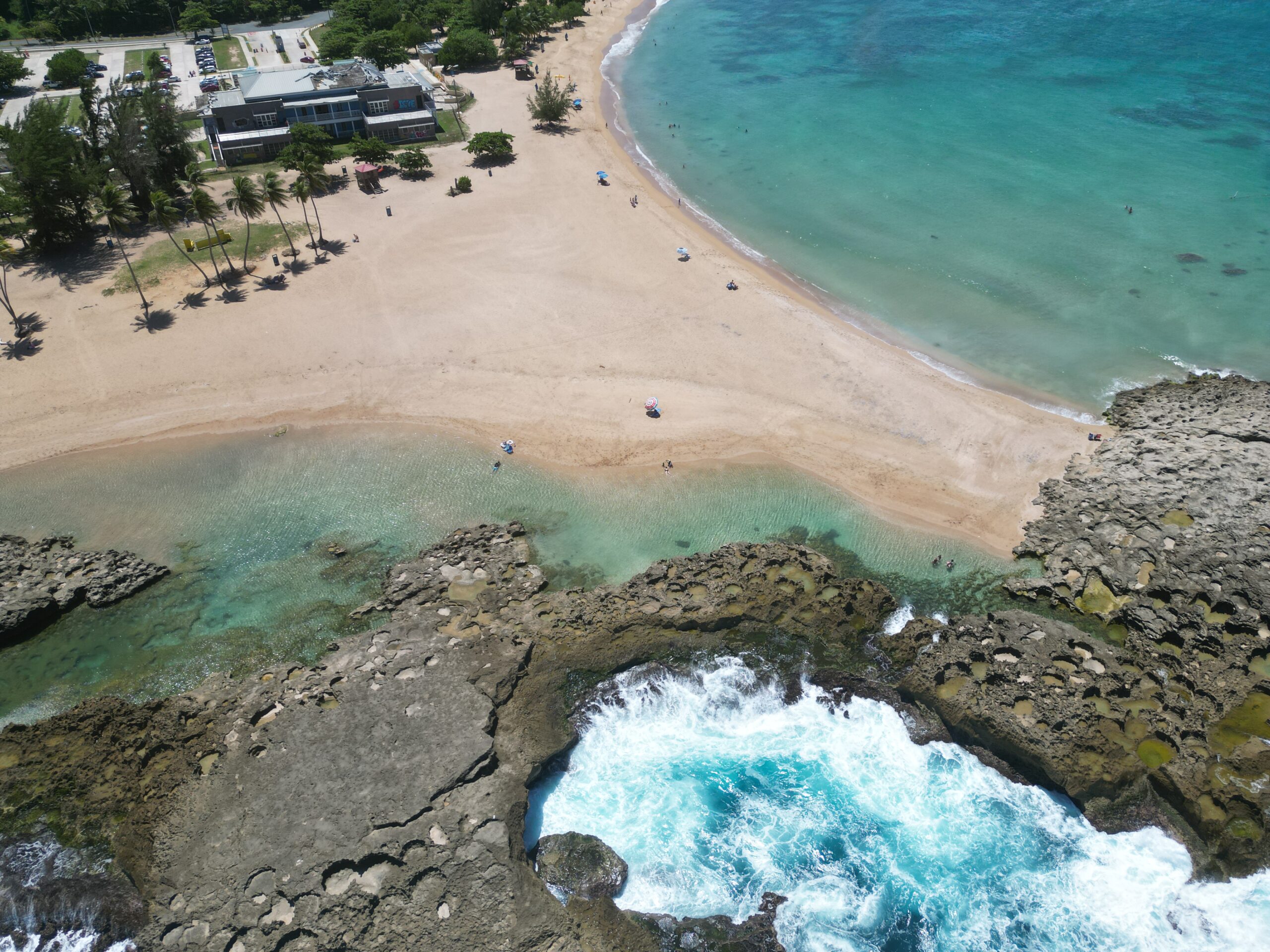
Drive 15 min to the coast to a very unique beach in Vega Baja. It’s a sandy point sticking out like a small peninsula runs into a wall of rocks parallel to the coastline. Laying on the sand, you’ll find water on either side of you. One side is protected by the rock which creates a natural pool. There was a surprising amount of fish in and near the mouth of this pool when I last went so I had a good time snorkeling. This beach can get extremely crowded, go before noon to beat the crowd. For me, visiting on a weekend isn’t even worth it. Parking costs $5.
I know I said you can have it all with this itinerary, but I think it’s best if you choose one of the three following springs to visit after Puerto Nuevo Beach. They are all cool, located very near one another, and all slightly different. Decide which one sounds best to you and go for it!
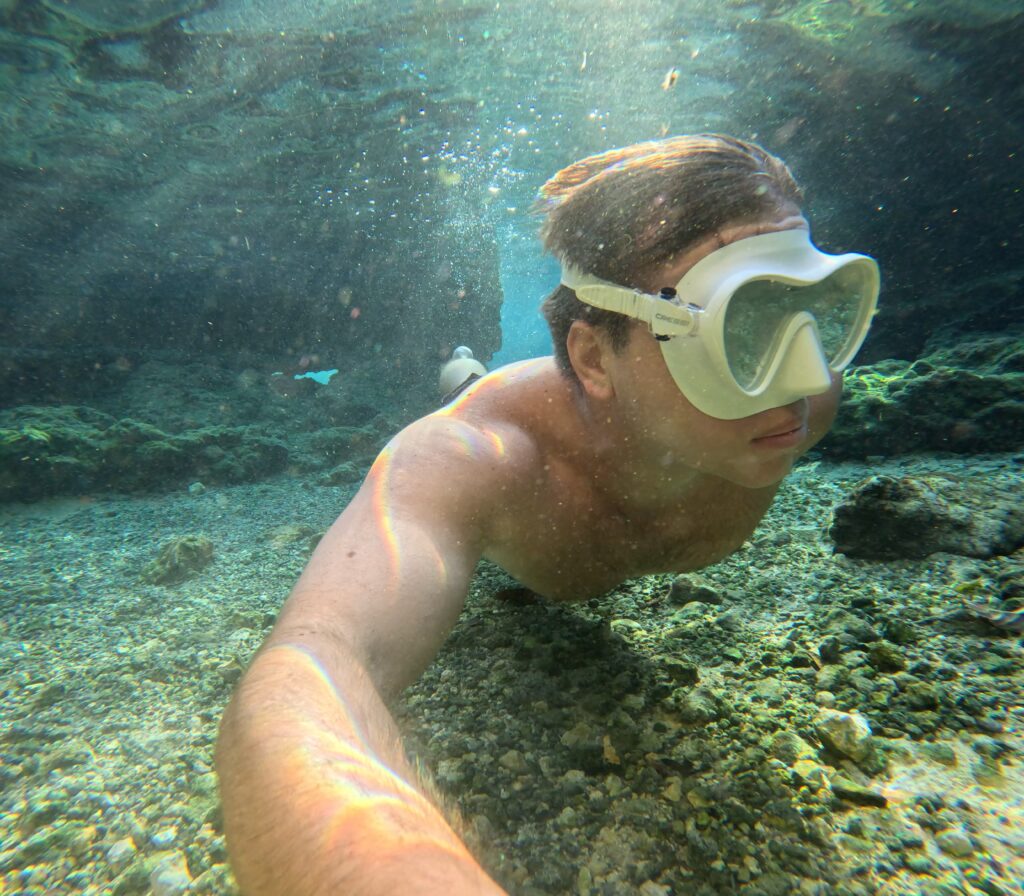
A freshwater spring down a rocky dirt road in Vega Baja. The clear, cool water pumps out of a hole in the rock to fill a pretty large spring. It looks like a short, circular wall was constructed to trap the water before it runs into the rest of the pond where it quickly gets murky. You can see tropical fish swimming around, it seems like they prefer to stick close to the mouth of the spring. After 20 or 30 min of lounging in the spring by myself I turned around to see a caiman cruising through the water behind me. Stay alert and enjoy!
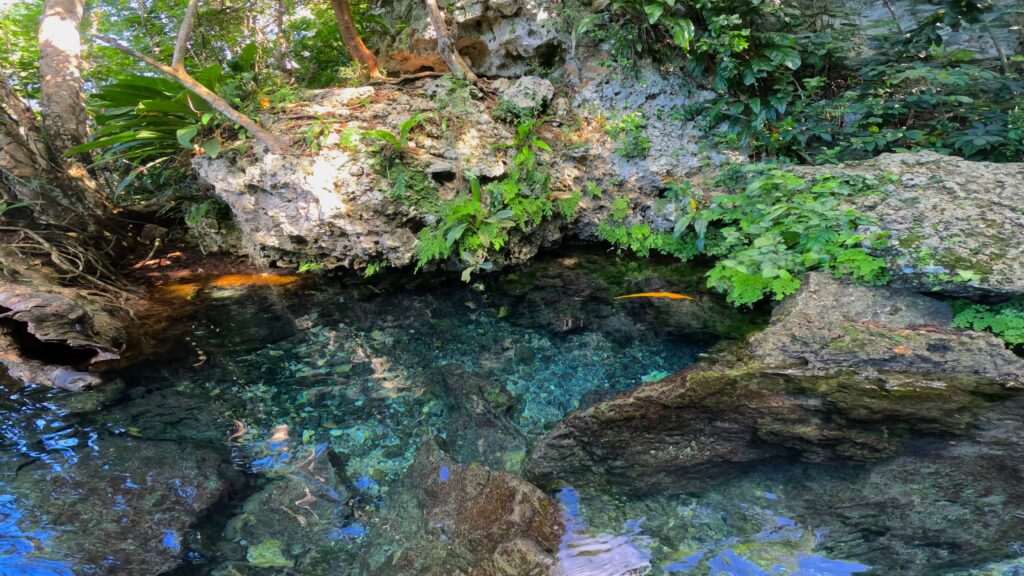
A freshwater spring flowing from the ground in Manatí that fills a crystal clear pool. It is not deep – around 7 feet deep at the deepest spot (pictured). The hike to it is short and the spring is easy to miss as the sign marking it was removed. Look for it on the right of the trail. If you arrive at some caves you have gone too far. If you walk for over 15 min you have likely gone too far. The parking is a little tricky, there is a city ordinance making it illegal to park in all the closest spots. We parked on a side road a short walk from the trailhead.
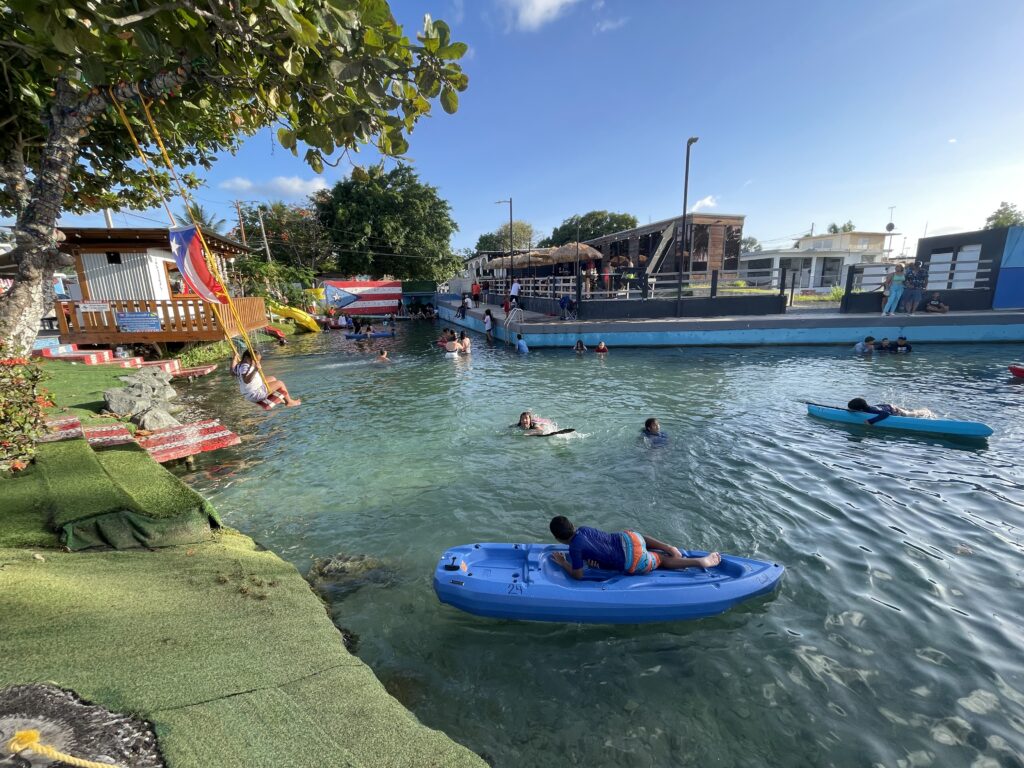
This spring is located in the middle of a residential neighborhood in Vega Baja. While not the typical nature experience, this spring is worth a visit. There are several food stands nearby and lights strung up for after dark. This is the largest of the springs. For some reason someone rents out kayaks – the spring isn’t that big. You’ll likely find this spot very crowded with a lot of families. Go earlier in the day to dodge the crowd. The rocks are a little sharp on the bottom so you’ll be happy to have sandals on in the water.
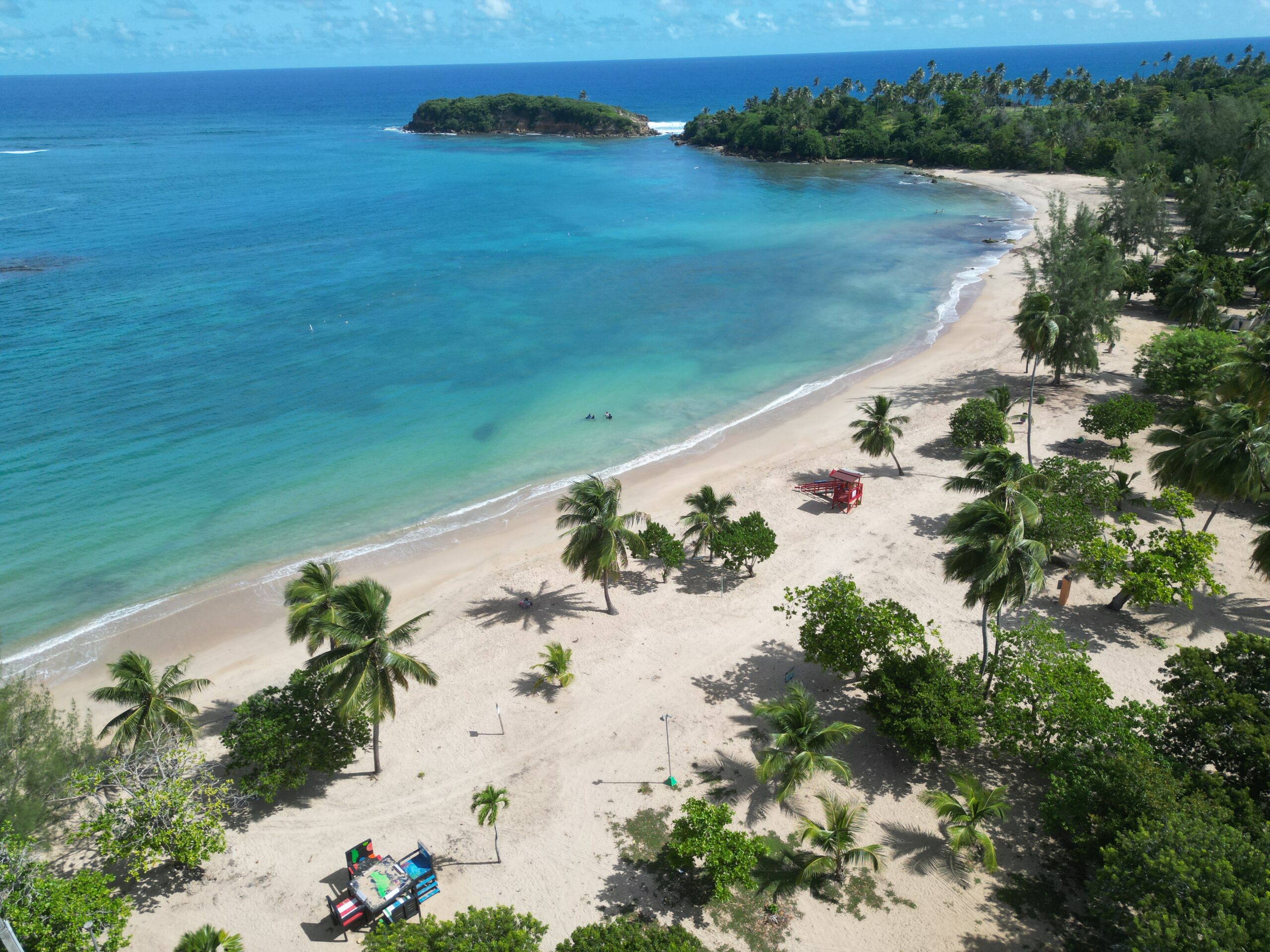
After visiting whichever spring called to you, head to this calm, shallow beach in Vega Alta. Cerro Gordo looks like a smaller Luquillo Beach to me. The main part of this beach is surround by a paid parking lot ($4). A small key is visible off the coast. There are mountain biking trails nearby and apparently the snorkeling is decent by the key. There are showers to rinse off.
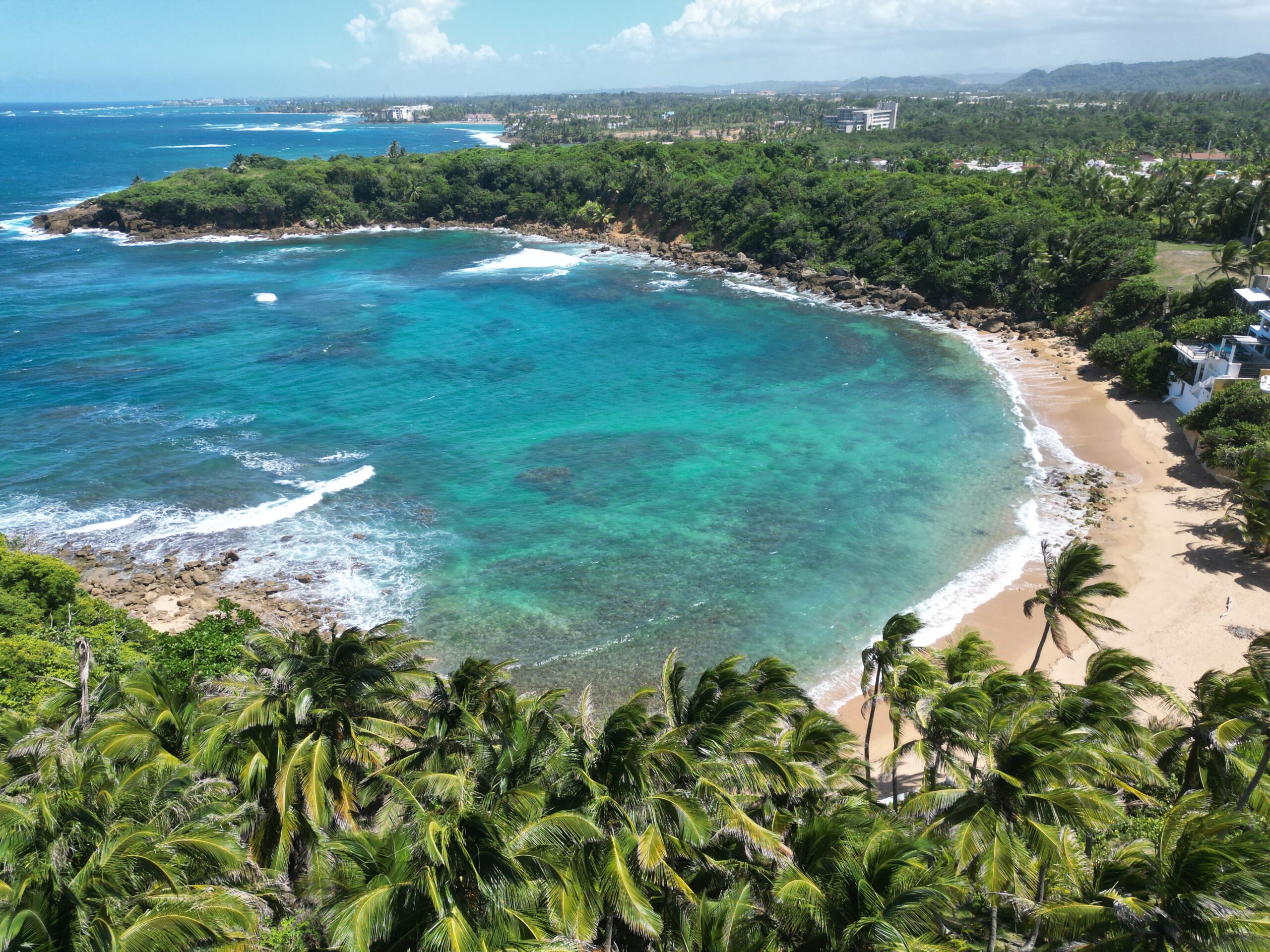
Continue to this small beach in Vega Alta accessed via a path between residential homes. Depending on conditions, the water visibility can be good in this bay. There is a good amount of live hard coral to see while snorkeling and you can even surf near the mouth of the bay. I have heard of cars being broken into here but I have never had an issue.
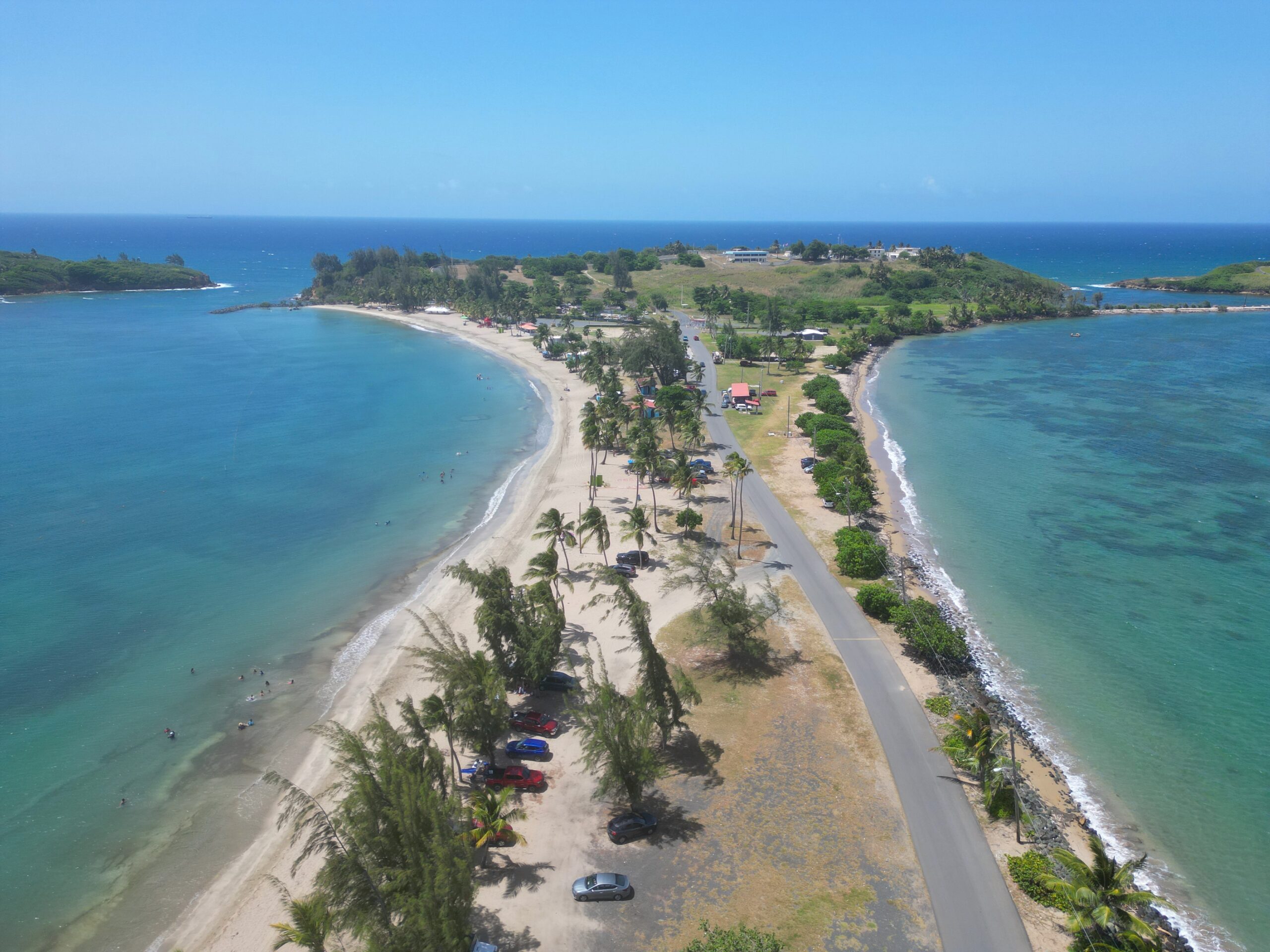
On the way to Punta Salinas, stop by El Caracol for lunch. If you’re lucky you’ll find sting ray, iguana, or caiman pastelillos (empanadas). Located in Toa Baja on a peninsula vaguely shaped like a whale’s tale is a long beach with shallow water. Like Cerro Gordo, this is a perfect beach to relax in the shallows. There are some trees that offer shade you can set up under. There are showers to rinse off.
End the day at Charco Prieto, a 45 min drive. Make sure you have 2 hours on daylight left before starting the hike. This waterfall and swimming hole is a pleasant flat hike through the forest along a river arriving at a large pool. Either skirt around the pool to the left and use the rope to climb up to the waterfall, or swim through the pool and scramble up on the right. This is one of the tallest waterfalls in Puerto Rico. The cascading water fills the air with a mist that lights up in the sunshine. You can go stand under the waterfall by scrambling along the rock on the right side which is extremely slippery. You’ll know you are at the trailhead when you see a small wooden Puertorican flag with “Bienvenidos, Welcome” painted below it. The hike will take around 20-30 min each way. Prepare to get wet as there is a river crossing right at the start that is unavoidable (depending on the season). There are a couple spots that are very muddy as well. Be cautious if it has been raining a lot and consider leaving if you notice the water increasing in volume and intensity or suddenly change color as flash floods can happen here.
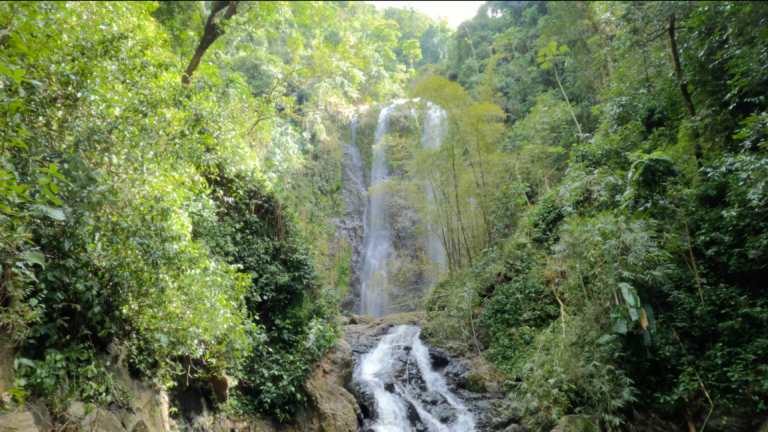
Day 15
Bonus day! Spend one more day in and around San Juan to get a feel for the metropolitan area.
Art Museum of Puerto Rico

Start the day at the Museo de Arte de Puerto Rico. It may be the best museum on the island. It offers important pieces from the likes of Francisco Oller, as well more contemporary art. There’s a lot to see here, my feet were hurting from standing long before I had seen it all.
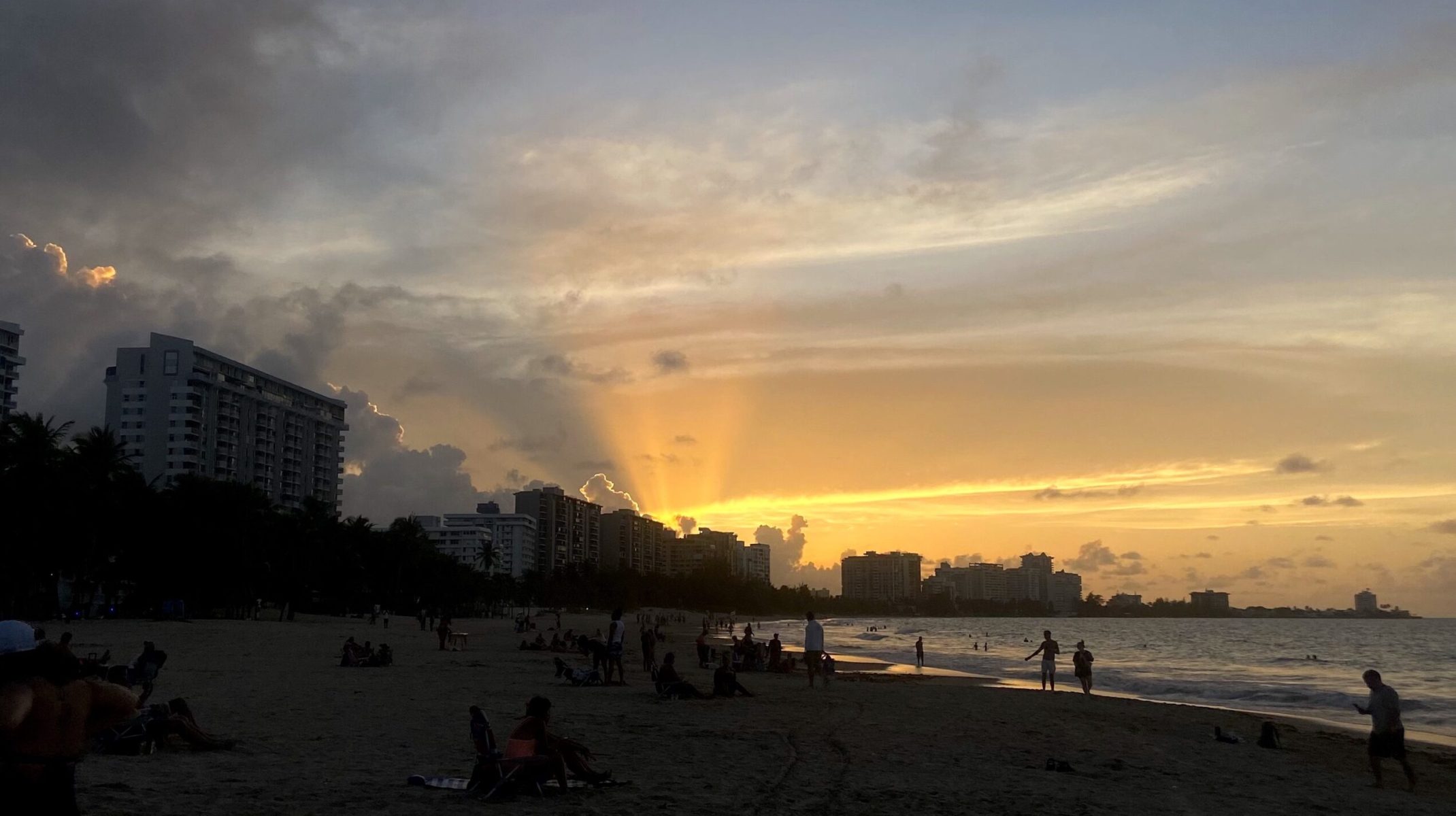
This may be the most popular beach in San Juan. There are many condos and resorts nearby, so you’ll find both locals and tourists frequenting this spot. It will be loud and busy but the beach is big enough that you’ll always be able to find space. There is not much shade so bringing an umbrella is a good idea. You’ll usually see people selling food and drinks on the beach. The water is usually pretty but not the clearest or calmest. Visiting this beach is kind of a staple of the typical vacation to Puerto Rico.
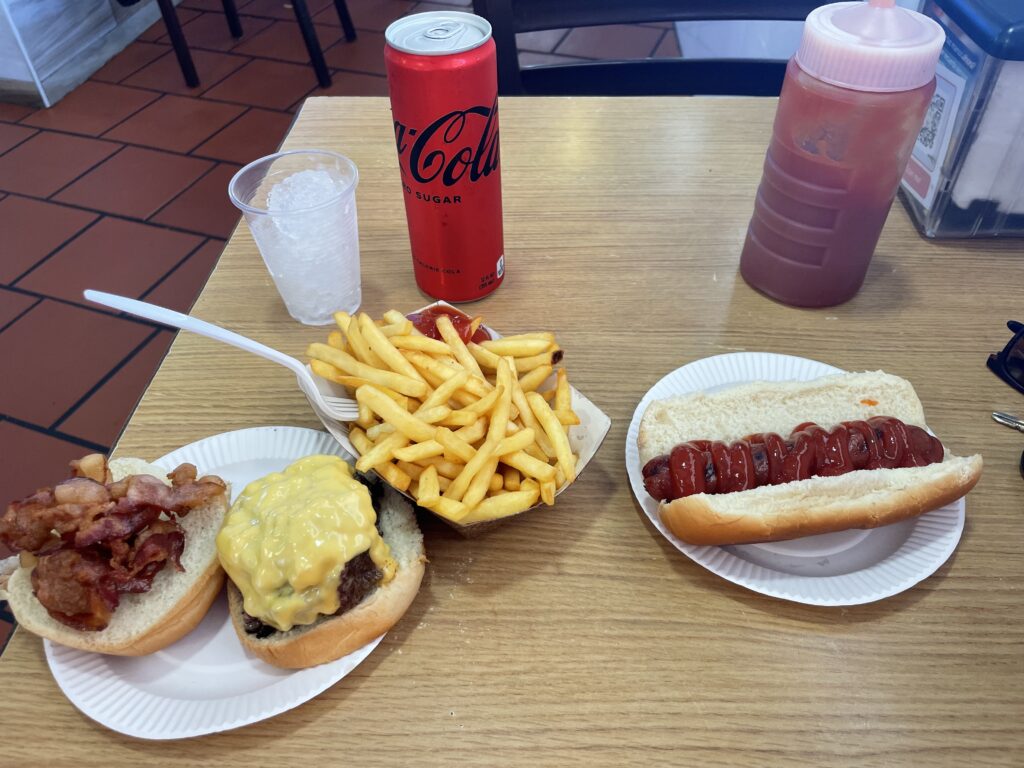
Grab lunch at this excellent burger joint opened in 1963 and sits across the street from the ocean. As the name suggests, it specializes in hamburgers, although it also serves other items such as hot dogs, sandwiches, and fries. This is a great lunch spot near Old San Juan. I suggest getting a bacon burger and normal fries. The burgers are small like sliders but super thick and juicy. If there isn’t room in the normally busy restaurant, just grab take-out and walk to the nearby Escambron Beach.
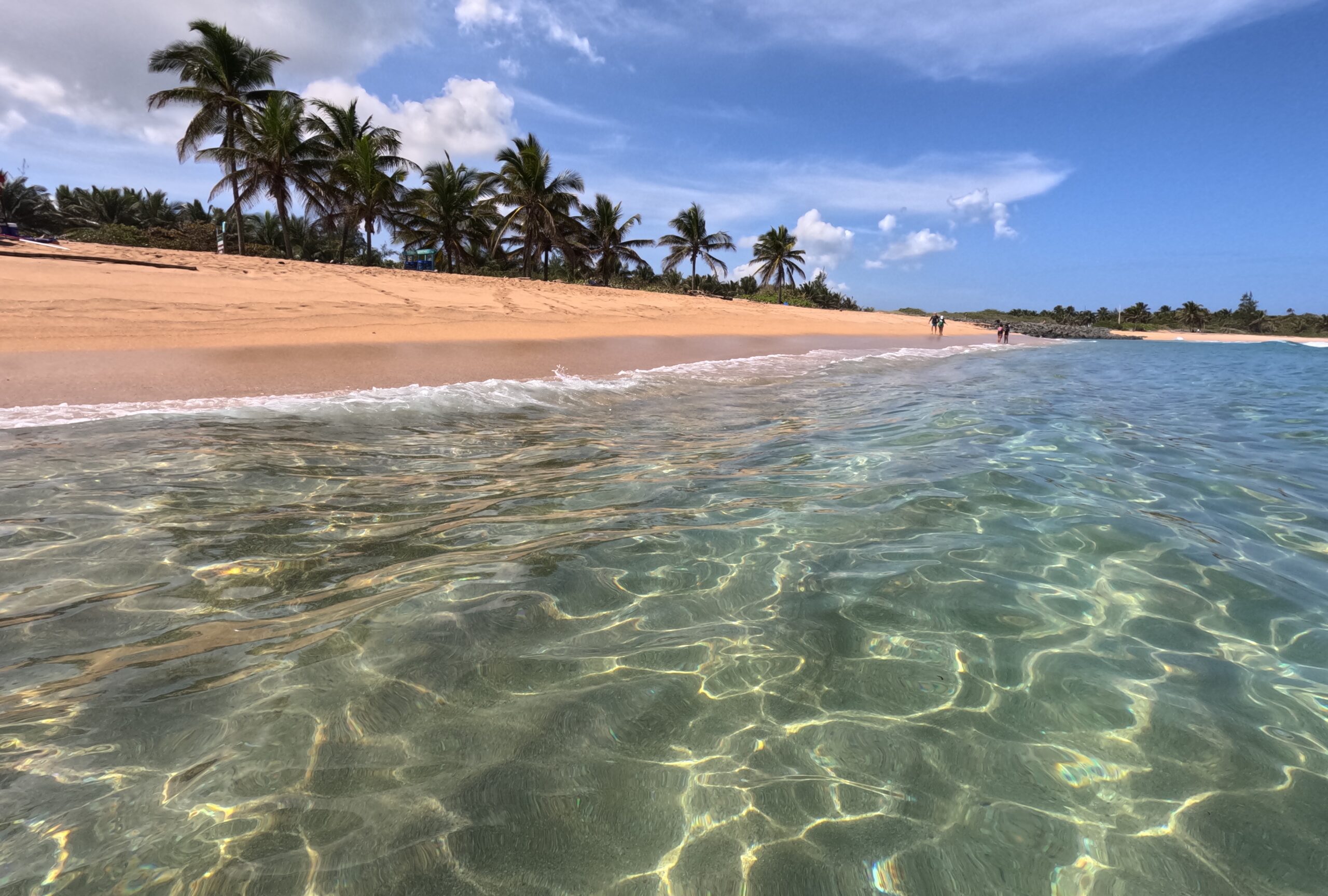
Alternatively, do a restaurant crawl along this long strip of beach in Loíza, a short drive from San Juan. This is a local-favorite activity and I have heard more than one person claim that the best traditional Puerto Rican food and seafood on the island can be found here. I suggest Donde Olga (See Restaurants). The water at the beach can get pretty rough, and the section of the beach changes the conditions. There is a section of beach with calm water (La Posita) .There are many spots to turn off the highway and park looking out over the beach. These restaurants and this beach can get very crowded on the weekends.
I recommend a contemporary cultural event before you leave. You can find an event calendar here. If there’s no events, try a movie or baseball game.
Baseball
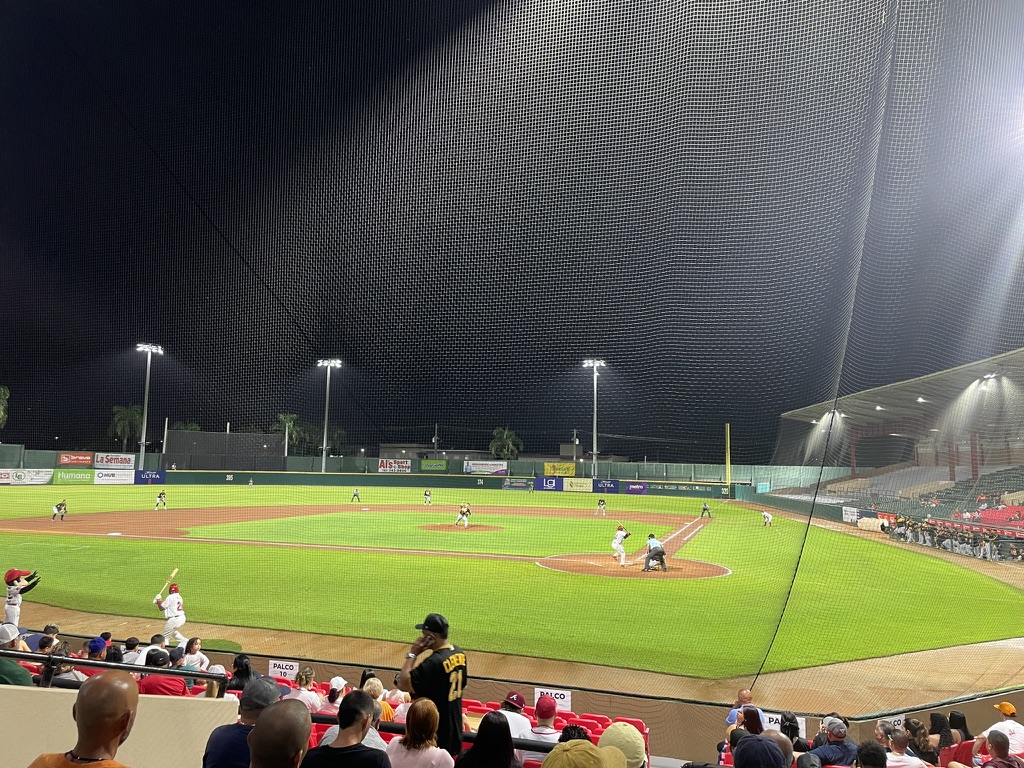
Baseball is the most popular sport in Puerto Rico. Driving around the island, you’ll come across quite a few baseball diamonds. As far as I can tell, there are two local leagues. I am familiar with the LBPRC. There are six teams in the league. The season starts in November. I live in Caguas, so of course I’m a fan of the Caguas Criollos.
Caribbean Cinemas
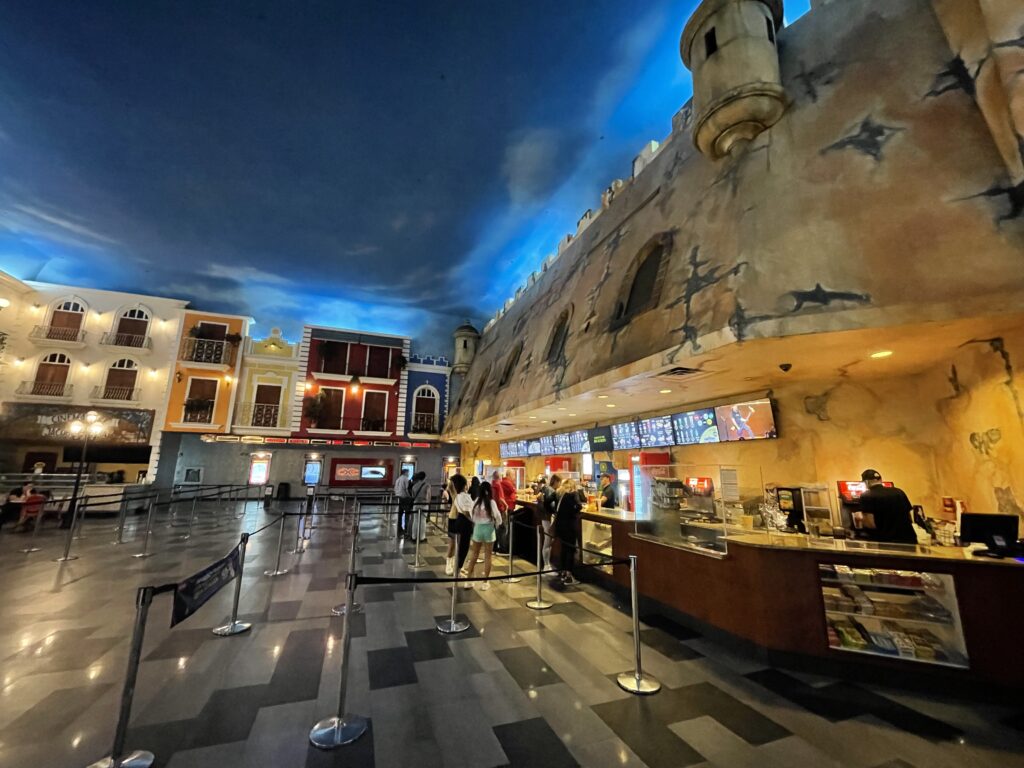
El mejor entretenimiento en el mejor ambiente, Caribbean Cinemas! That slogan will always be fixed in my memory. I love this movie theater chain. It’s really the only option on the island, but they do a great job. The location pictured below in Plaza Las Americas has an incredible lobby that wowed me when I walked in. There are a few locations that offer 4D movies, if you haven’t experienced one before, you need to try it, they’re a lot of fun! The 4D experience includes the seat movement, aromas being released, compressed air being blown at you, water being sprayed, and mist, all choreographed with what is happening in the movie. There are a couple “VIP” locations as well that have nice seats and a full restaurant in the lobby. There are two “Fine Arts” locations in San Juan that show indie films and events like opera and ballet. One great thing about this chain is the concession stand prices are much less than what you are likely used to.
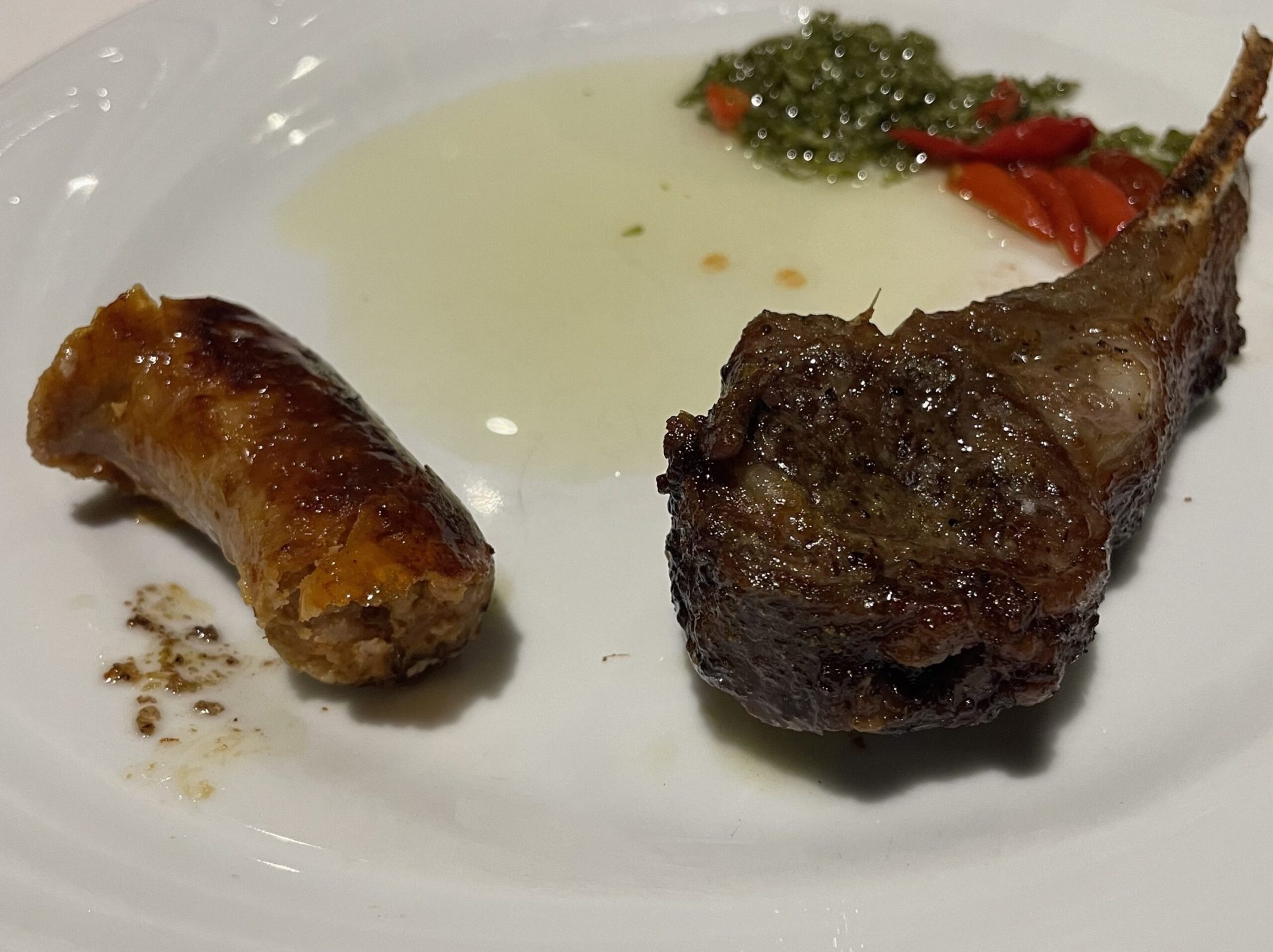
Drown the sorrow of having to leave Puerto Rico at this all-you-can-eat Brazilian steakhouse. It will set you back around $50 per person. My wife took me here for my birthday and we had a great time. This photo was after I got a new plate, I ate an insane amount of meat. Some of my favorite things I tried were the churrasco, the lamb chop, and the candied bacon. I highly recommend this place for fellow carnivores.
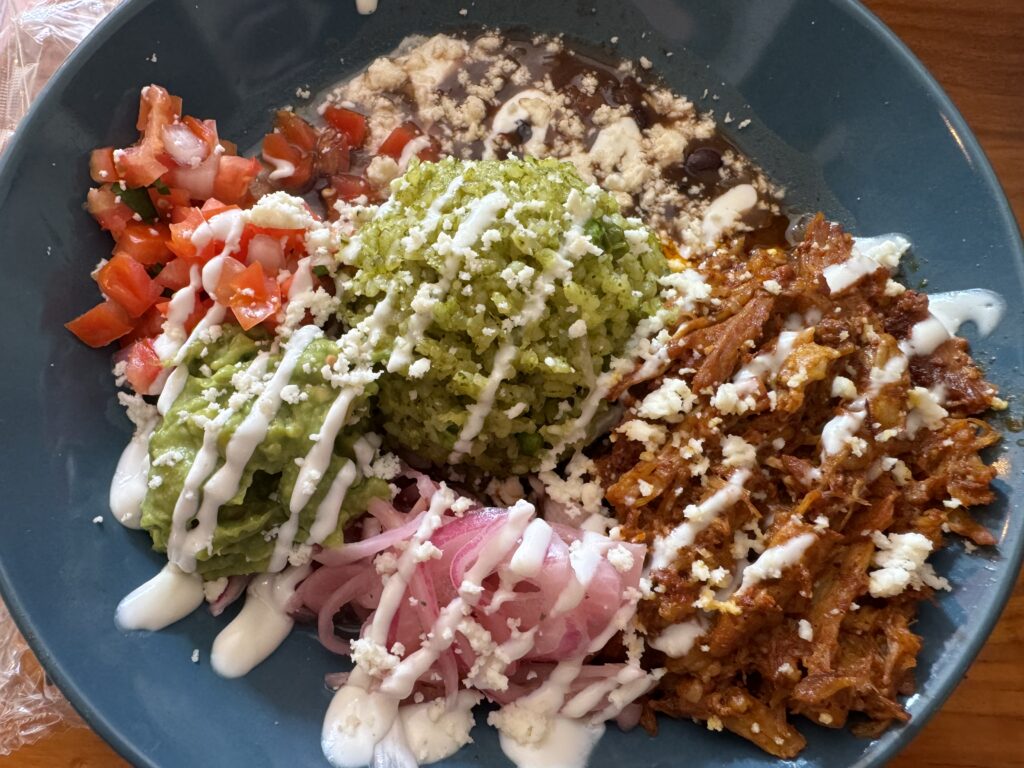
Alternatively, you can try the best tacos in Puerto Rico. The barbacoa burrito is my favorite, although expensive for a burrito at $13. The passionfruit juice is also very good. The first floor has AC but very little seating, the top floor doesn’t have AC but is better for groups as there is a lot more space. Not only is this the best Mexican food in Puerto Rico, it is some of the best food in Puerto Rico, period.
At last, your journey has come to an end. Drop off your rental car and head to the airport. I am nearly brought to tears imagining you in this moment: The light on the horizon has faded to darkness. You’re sitting in the back seat of an uber, soberly watching the big buildings of the metropolitan area pass by in a blur. All at once, you realize the lights of the city around you are blurry and twinkling in the night because your eyes are welling with tears. Slowly, they roll down your newly sun-tanned face as the memories of tropical beaches, verdant forests, and cascading waterfalls flash through your mind in time with the passing street lamps. You silently wipe the tears away with the travel pillow around your neck and turn your head to rest it on the cool glass of the window before someone else sees you. Before the airport comes into view, the tears dry and the light comes back into focus. You’ll always have the memories you made here. You’ve changed, albeit subtly, over the last two weeks. The ache in your heart is as much from gratitude at having been here as it is sadness from leaving. A small smile tugs at the corners of your mouth. “Thanks Zach from West Indies Travel”, you think. “Thanks for everything.”
